Category: 2023
Oliver Saarinen
(ba)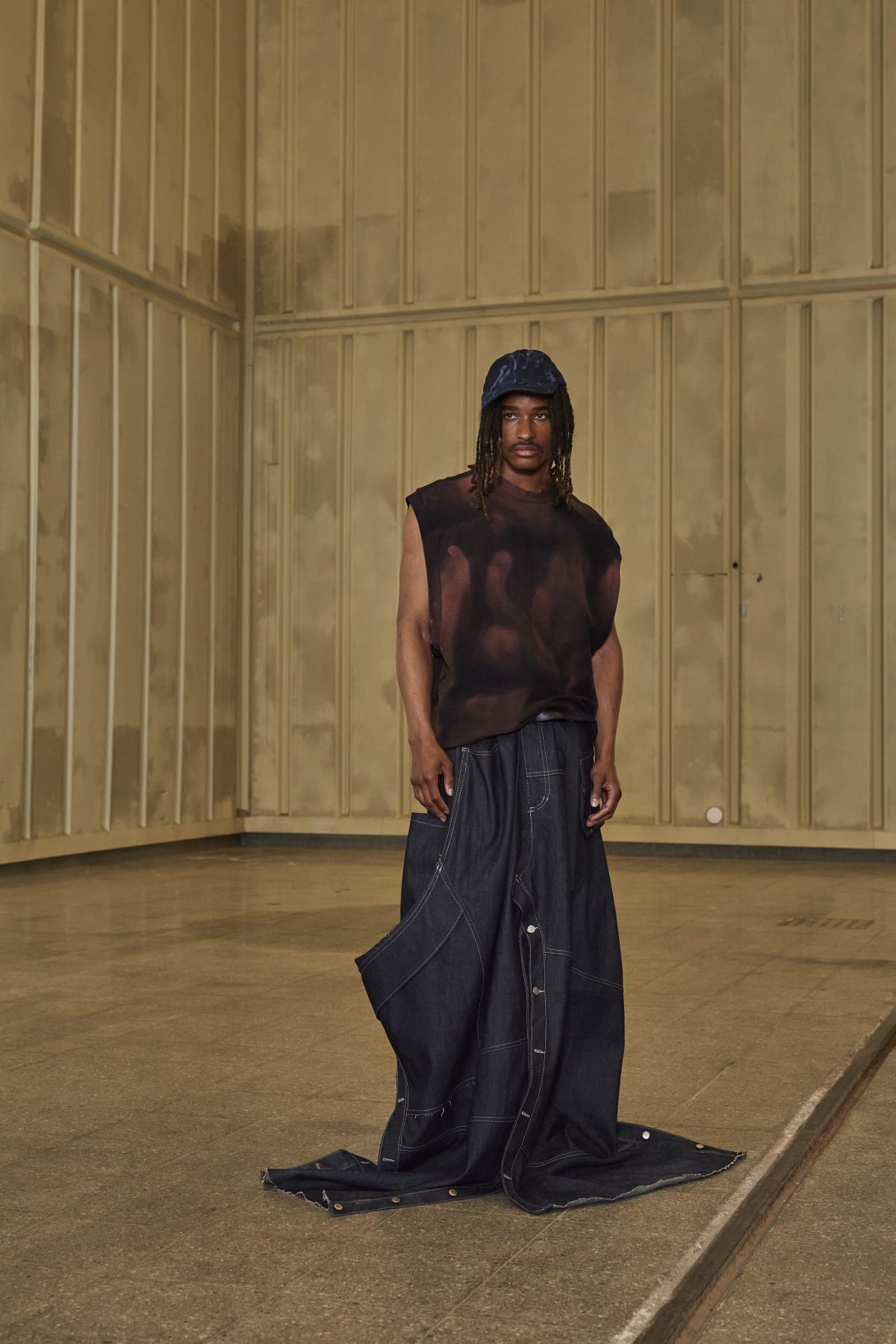 OS_01
OS_01

Oliver Saarinen BA3 Graduate collection Photographer: Sofia Okkonen Model: Johnatan
OS_01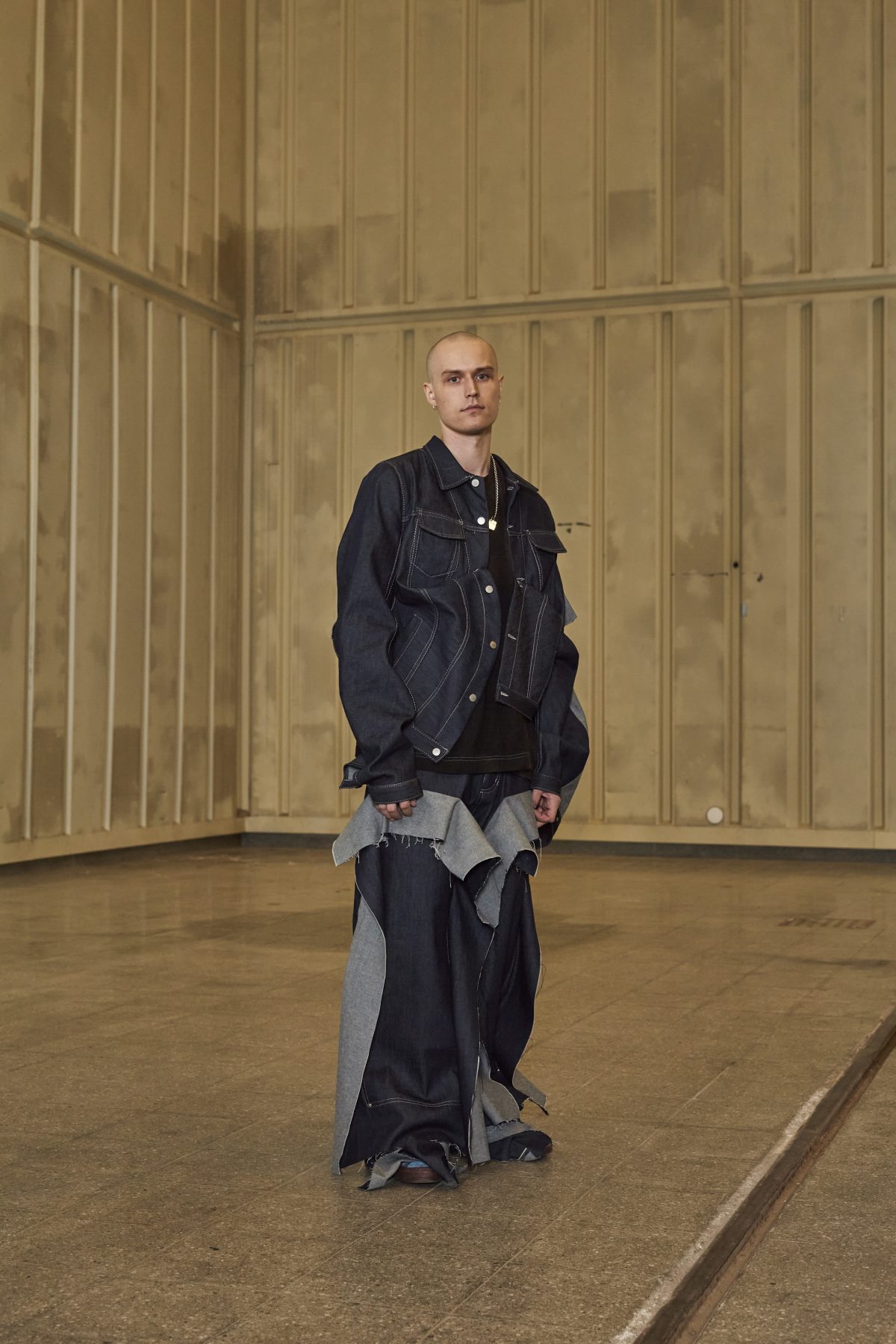 OS_02
OS_02

Oliver Saarinen BA3 Graduate collection Photographer: Sofia Okkonen Model: Joel
OS_02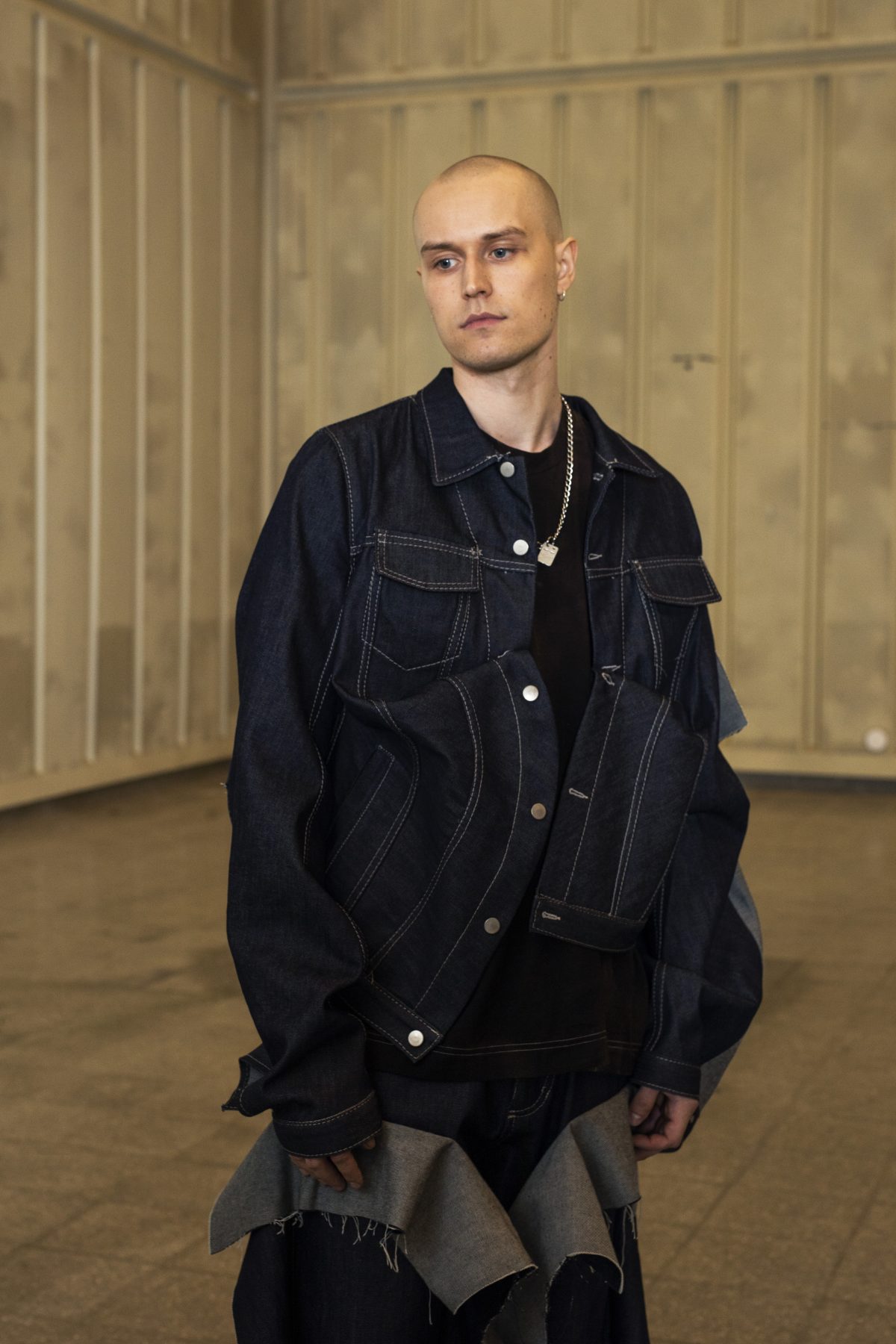 OS_03
OS_03

Oliver Saarinen BA3 Graduate collection Photographer: Sofia Okkonen Model: Joel
OS_03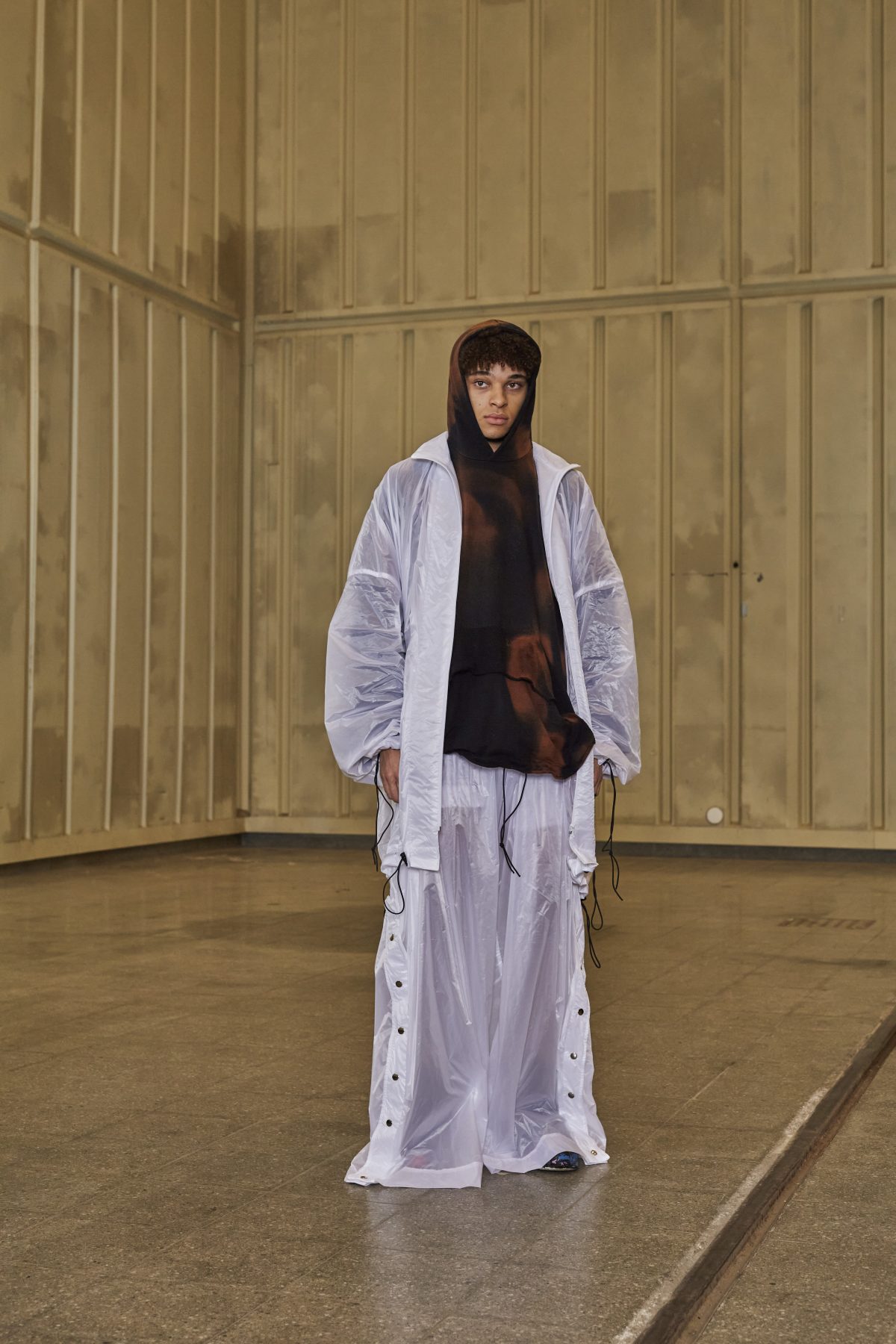 OS_04
OS_04

Oliver Saarinen BA3 Graduate collection Photographer: Sofia Okkonen Model: Benjamin
OS_04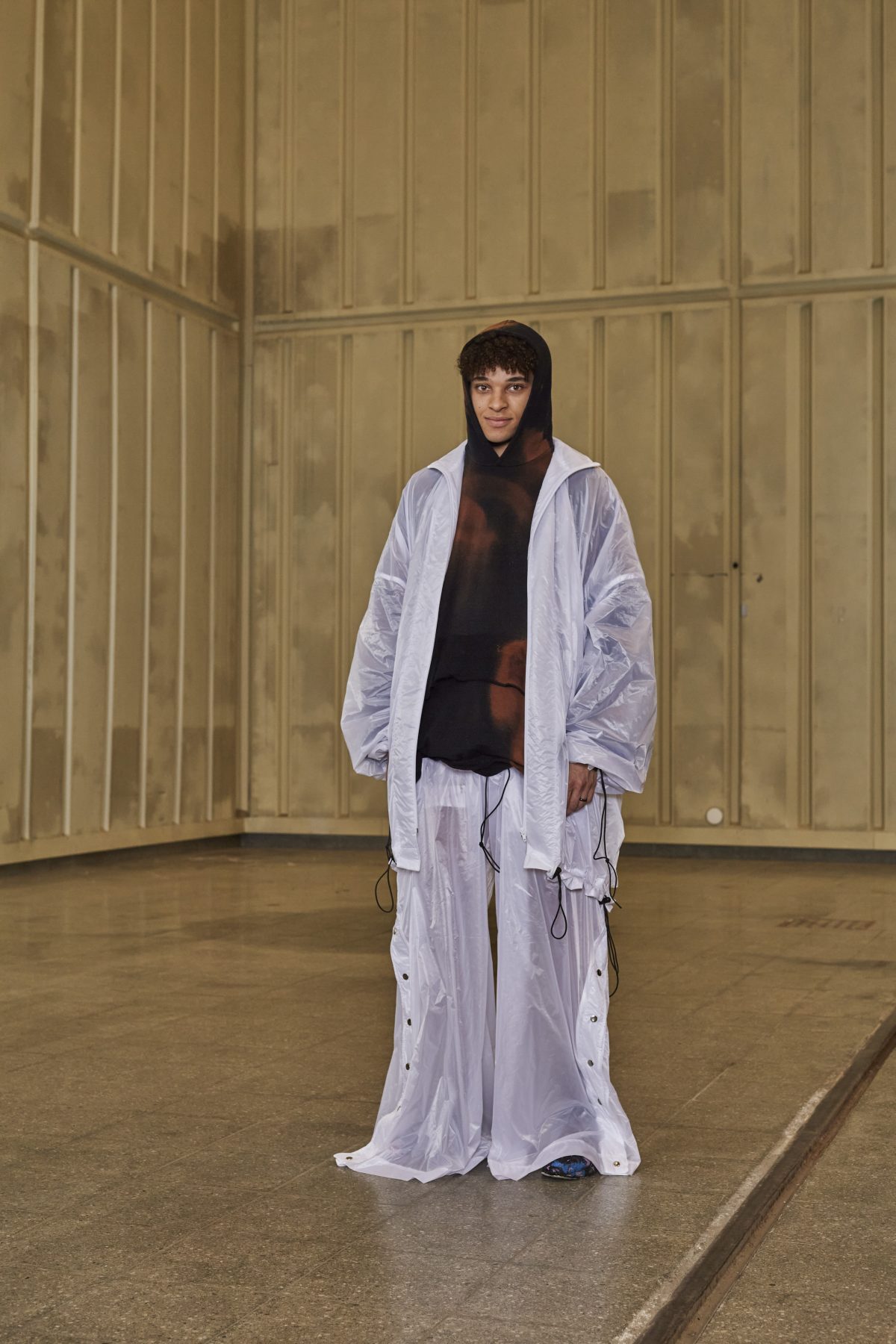 OS_05
OS_05

Oliver Saarinen BA3 Graduate collection Photographer: Sofia Okkonen Model: Benjamin
OS_05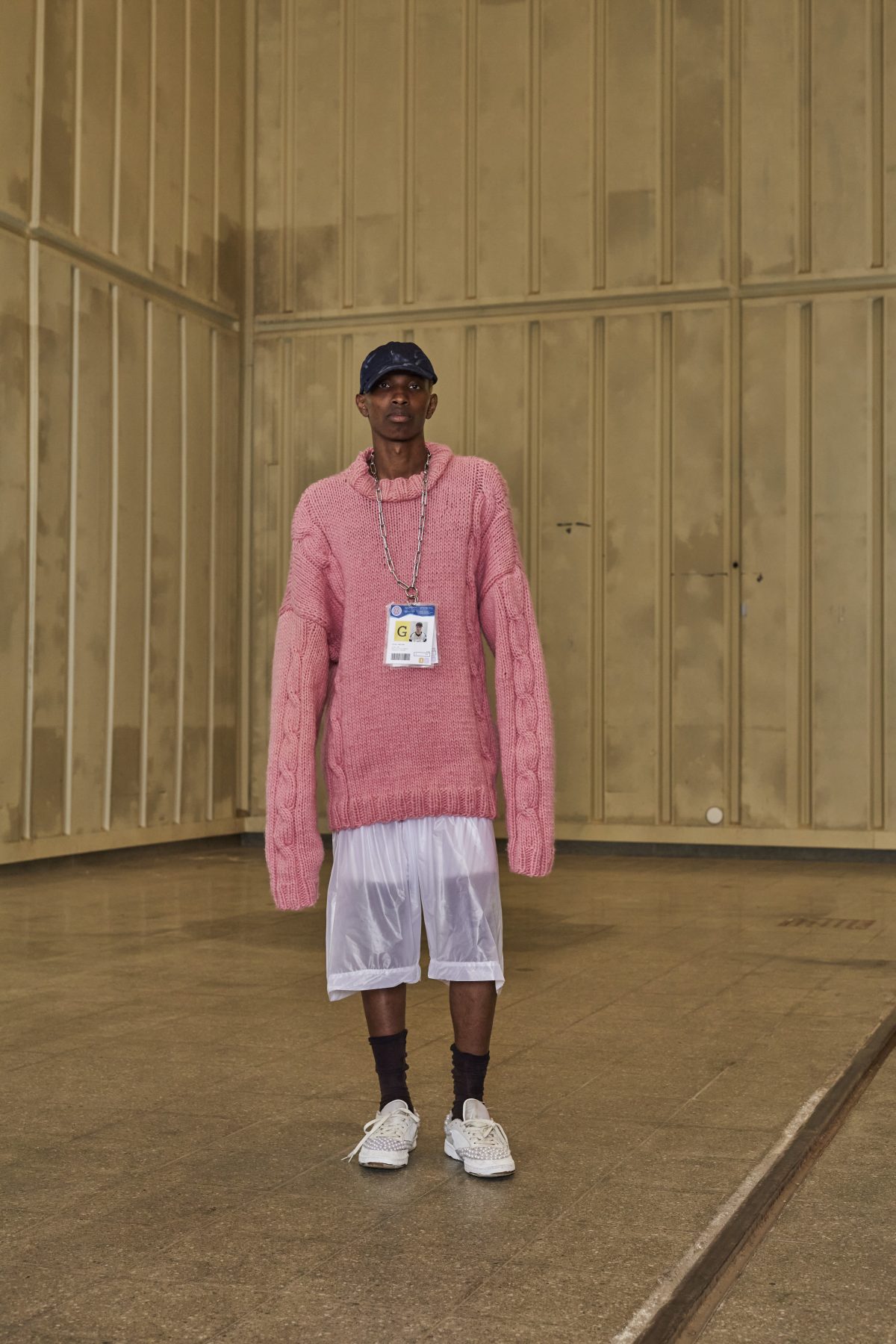 OS_06
OS_06

Oliver Saarinen BA3 Graduate collection Photographer: Sofia Okkonen Model: Lokoko
OS_06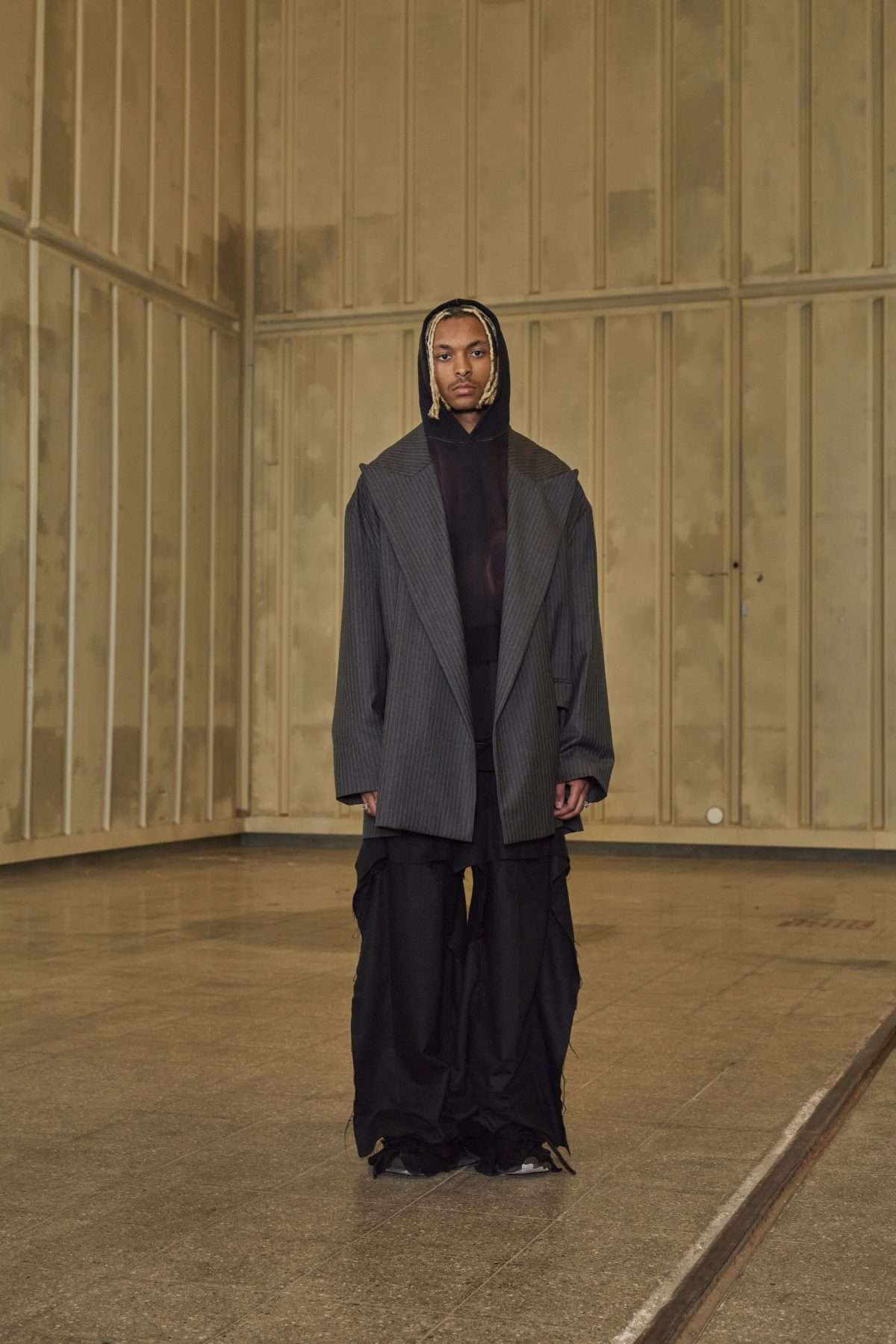 OS_07
OS_07

Oliver Saarinen BA3 Graduate collection Photographer: Sofia Okkonen Model: Lucian
OS_07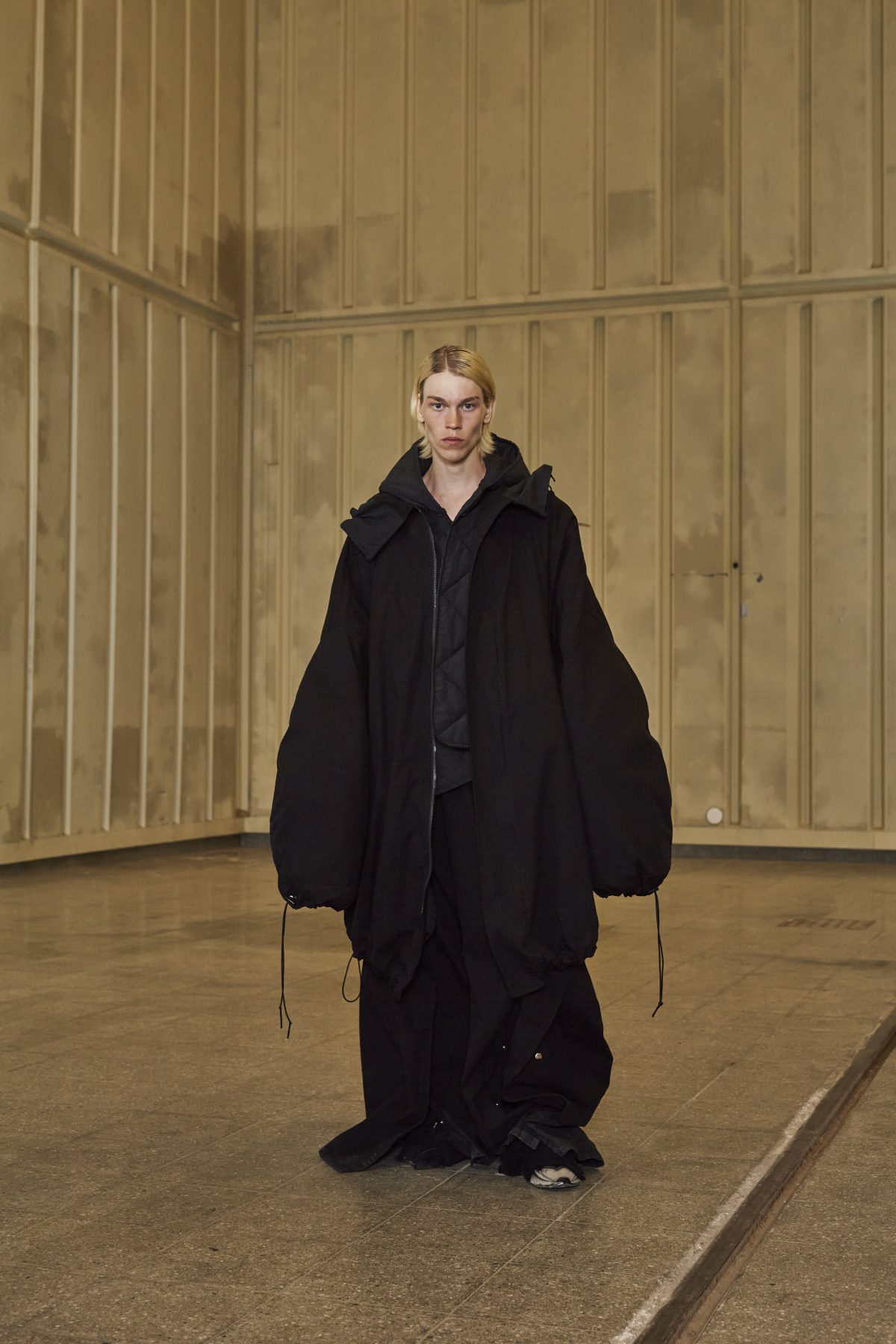 OS_08
OS_08

Oliver Saarinen BA3 Graduate collection Photographer: Sofia Okkonen Model: Tino
OS_08Oliver Saarinen is a Helsinki-based fashion designer with background in men’s tailoring. The relationship with garments and its bearer has always been an important aspect and inspiration in Saarinen’s work which can be seen throughout the collection in big volumes, detailing and the whole presence of the clothes.
– I really feel clothes and the people wearing them create a relationship that takes the whole idea of design to a new level, Saarinen says.
Saarinen’s collection studies and interpreters the silhouette of the body and garment in playful, experimental, and explicit techniques that root back to his studies as a tailor and as an apprentice.
– I´m always looking for new ways to express how I feel and see the world. Right now, creating clothes is the most important and interesting way to do it.
Since early age living in Helsinki city center has taught Saarinen to observe the surrounding world and see underneath the surface, especially in shapes, moods and stories people behold.
– I want my garments to excite and give joy to people. That is something that the world really needs right now.
Olli Autio
(ba)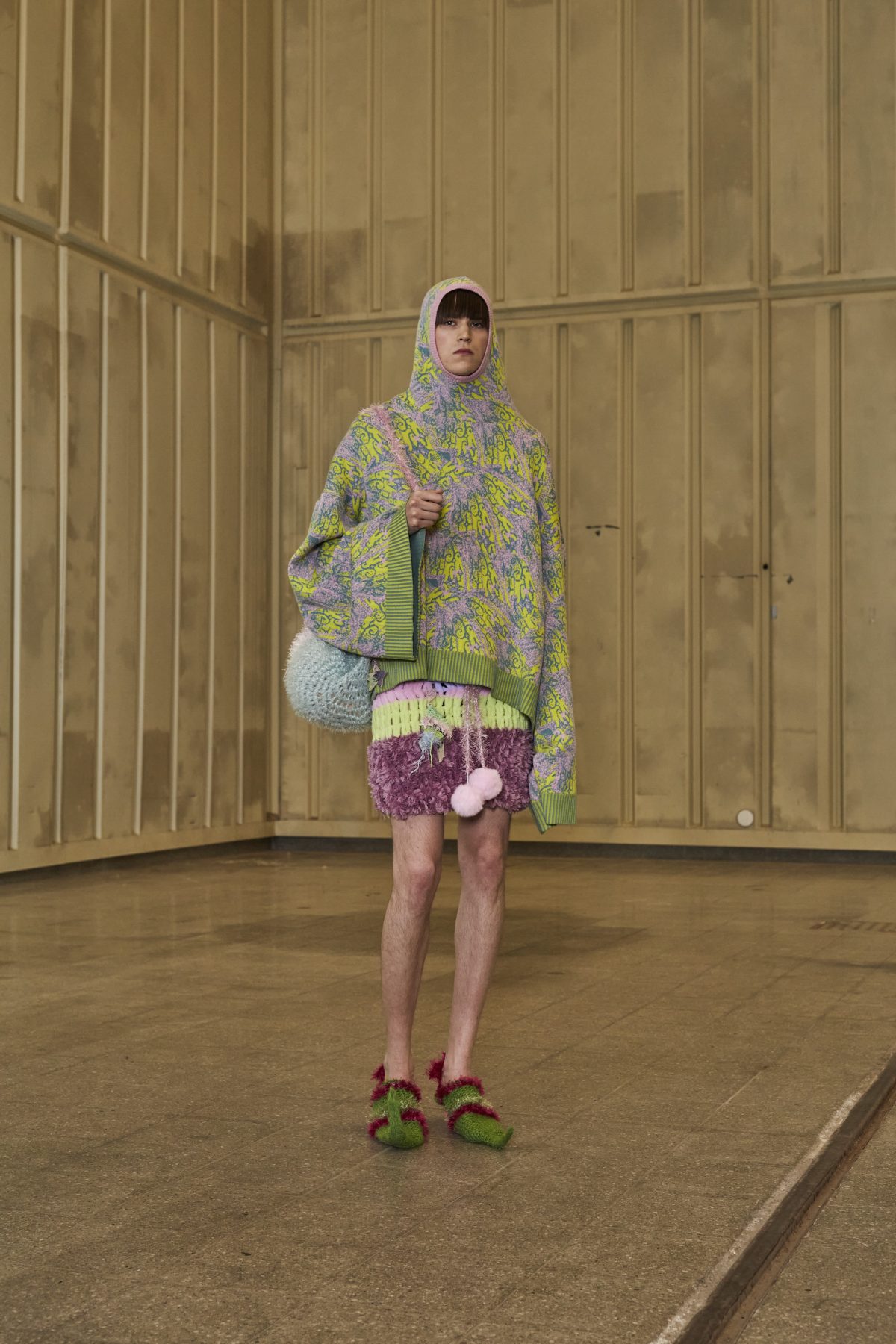 OA_01
OA_01

Olli Autio BA3 Graduate collection Photographer: Sofia Okkonen Model: Tuukka
OA_01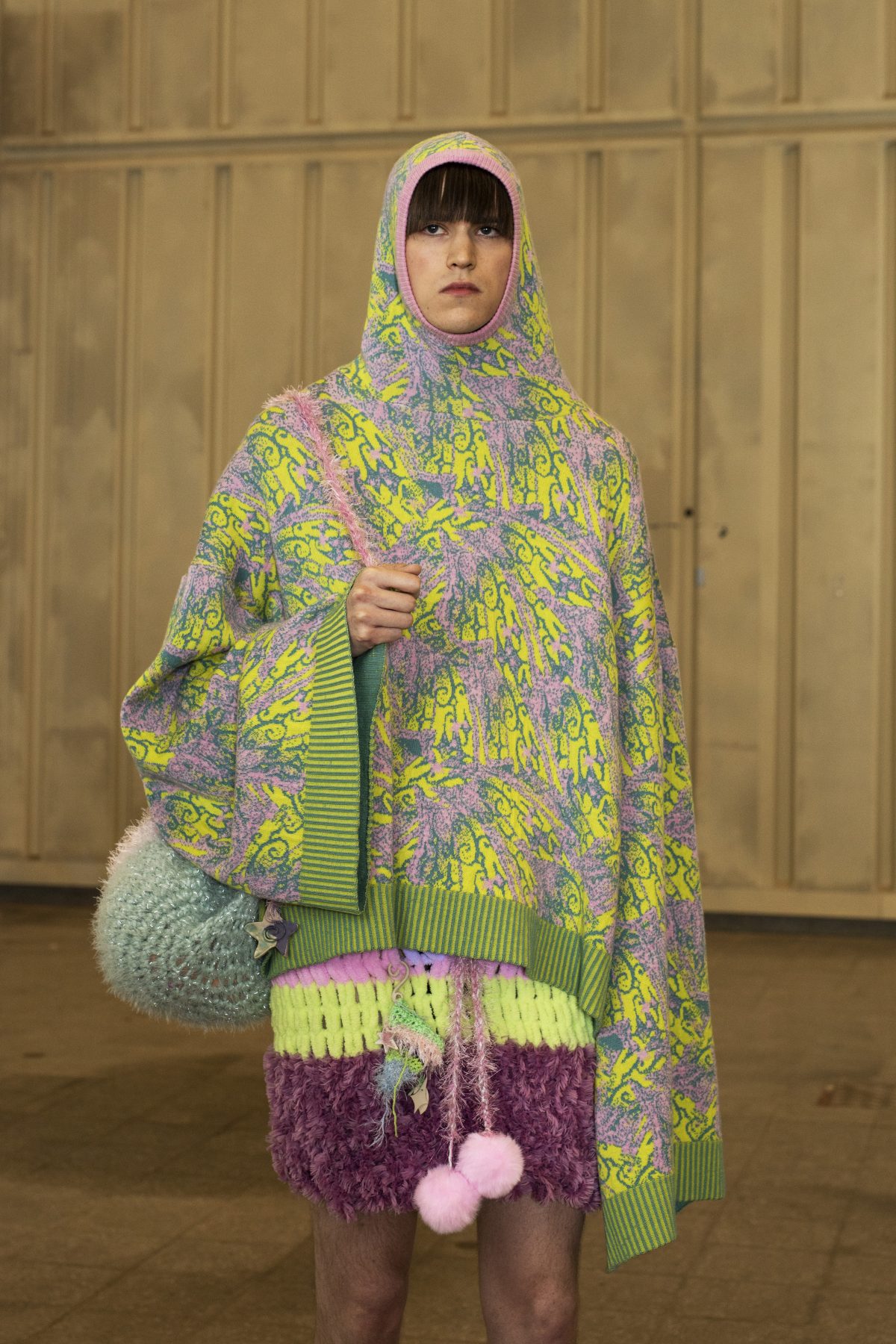 OA_02
OA_02

Olli Autio BA3 Graduate collection Photographer: Sofia Okkonen Model: Tuukka
OA_02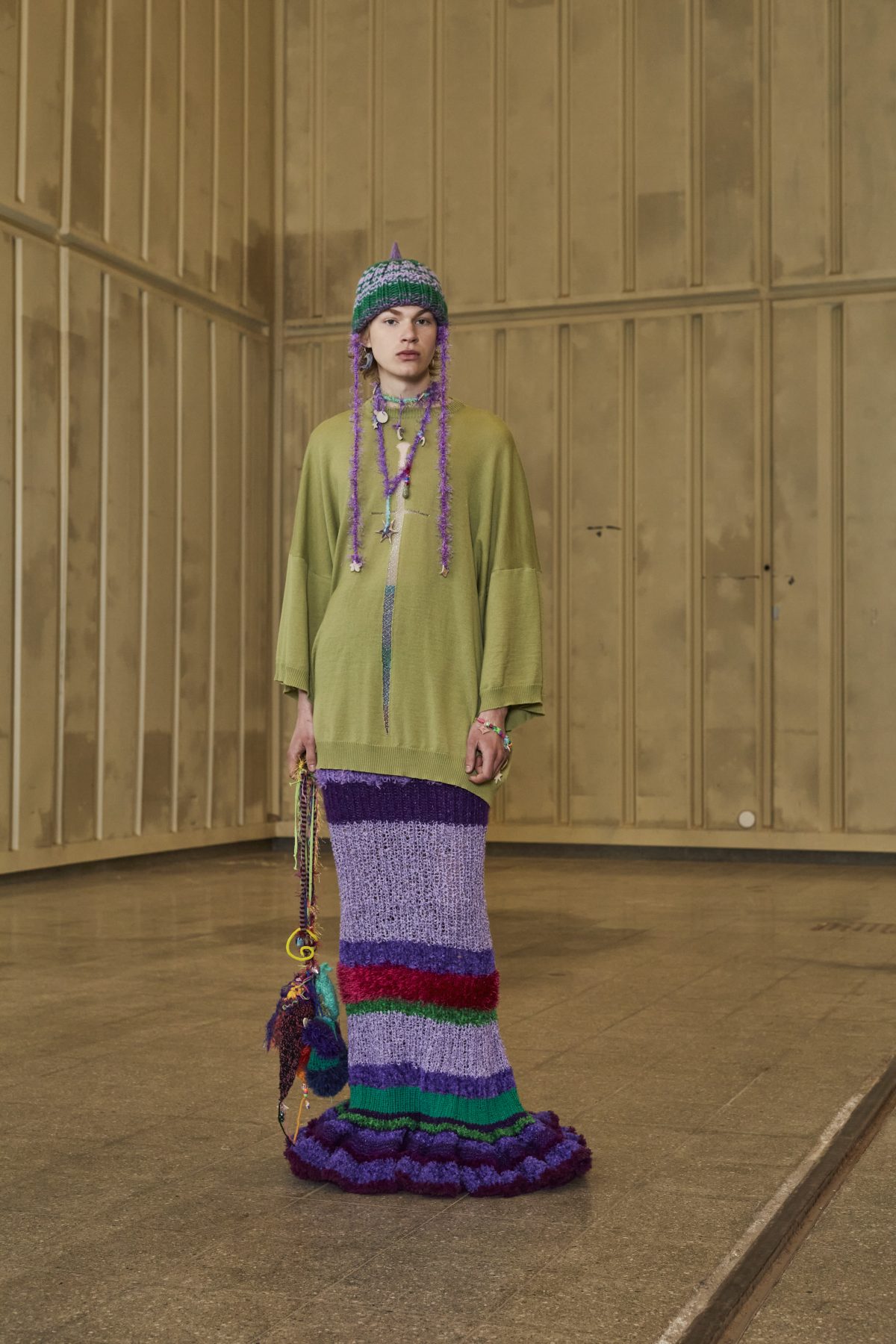 OA_03
OA_03

Olli Autio BA3 Graduate collection Photographer: Sofia Okkonen Model: Elias
OA_03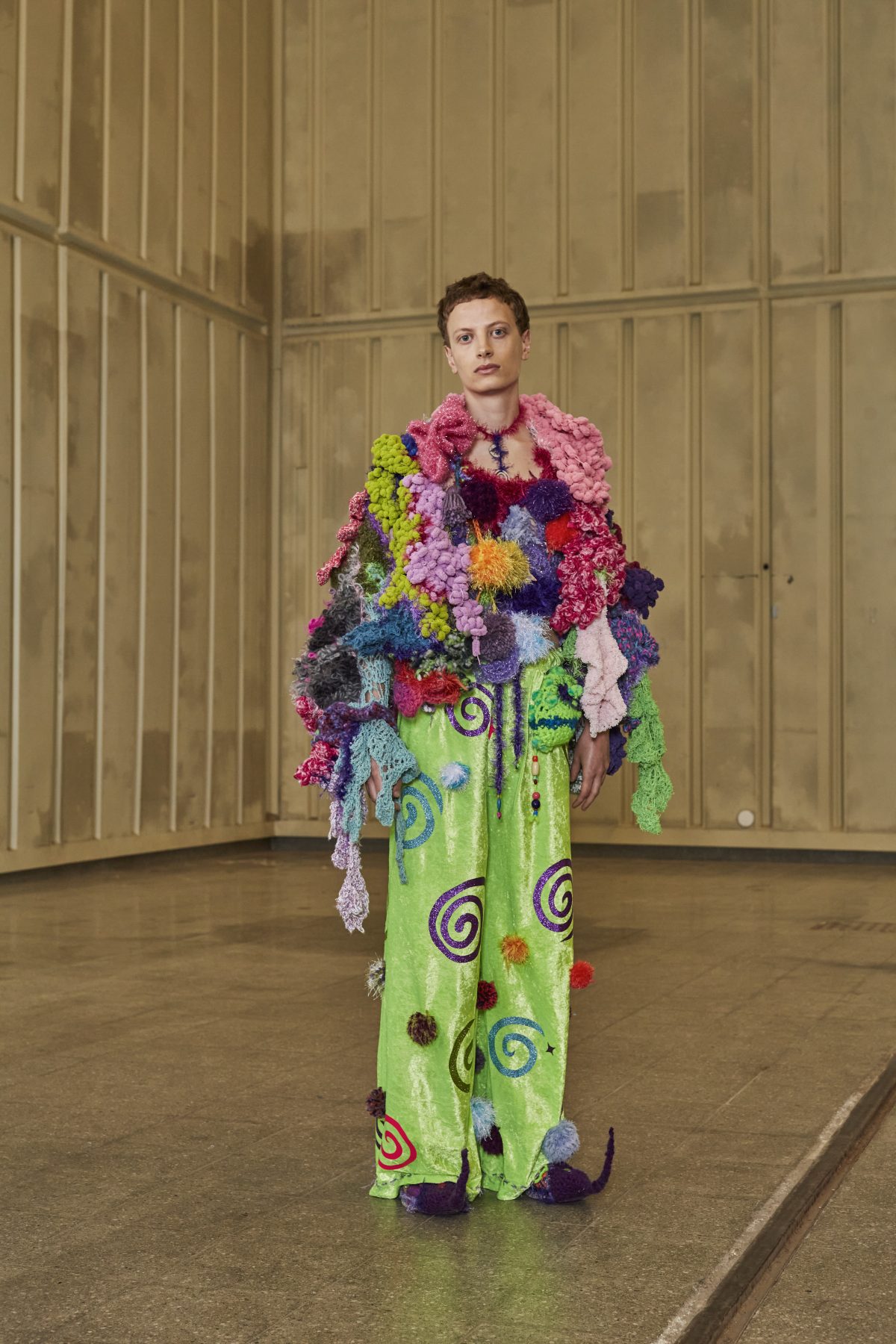 OA_04
OA_04

Olli Autio BA3 Graduate collection Photographer: Sofia Okkonen Model: Gamba
OA_04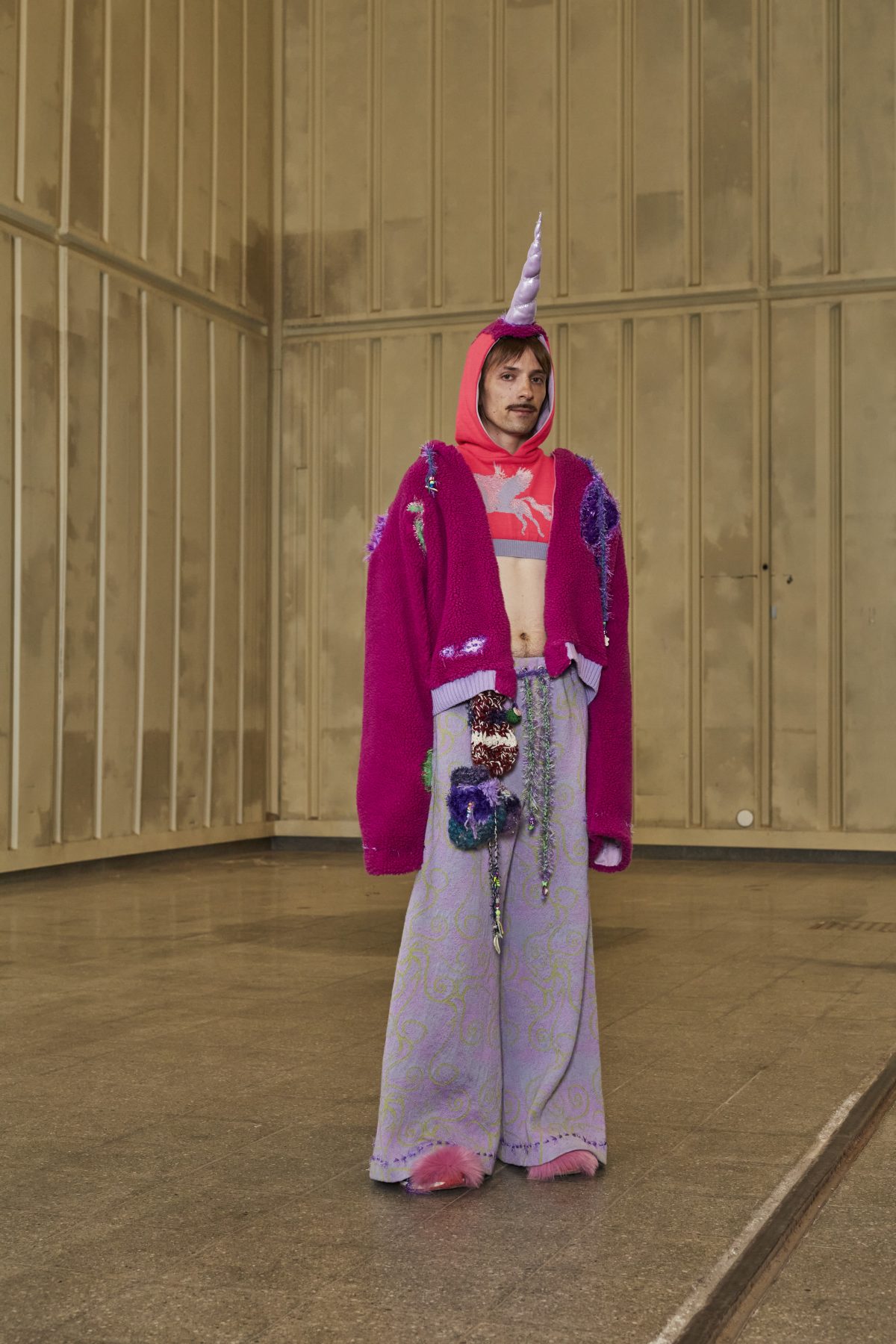 OA_05
OA_05

Olli Autio BA3 Graduate collection Photographer: Sofia Okkonen Model: Kalle
OA_05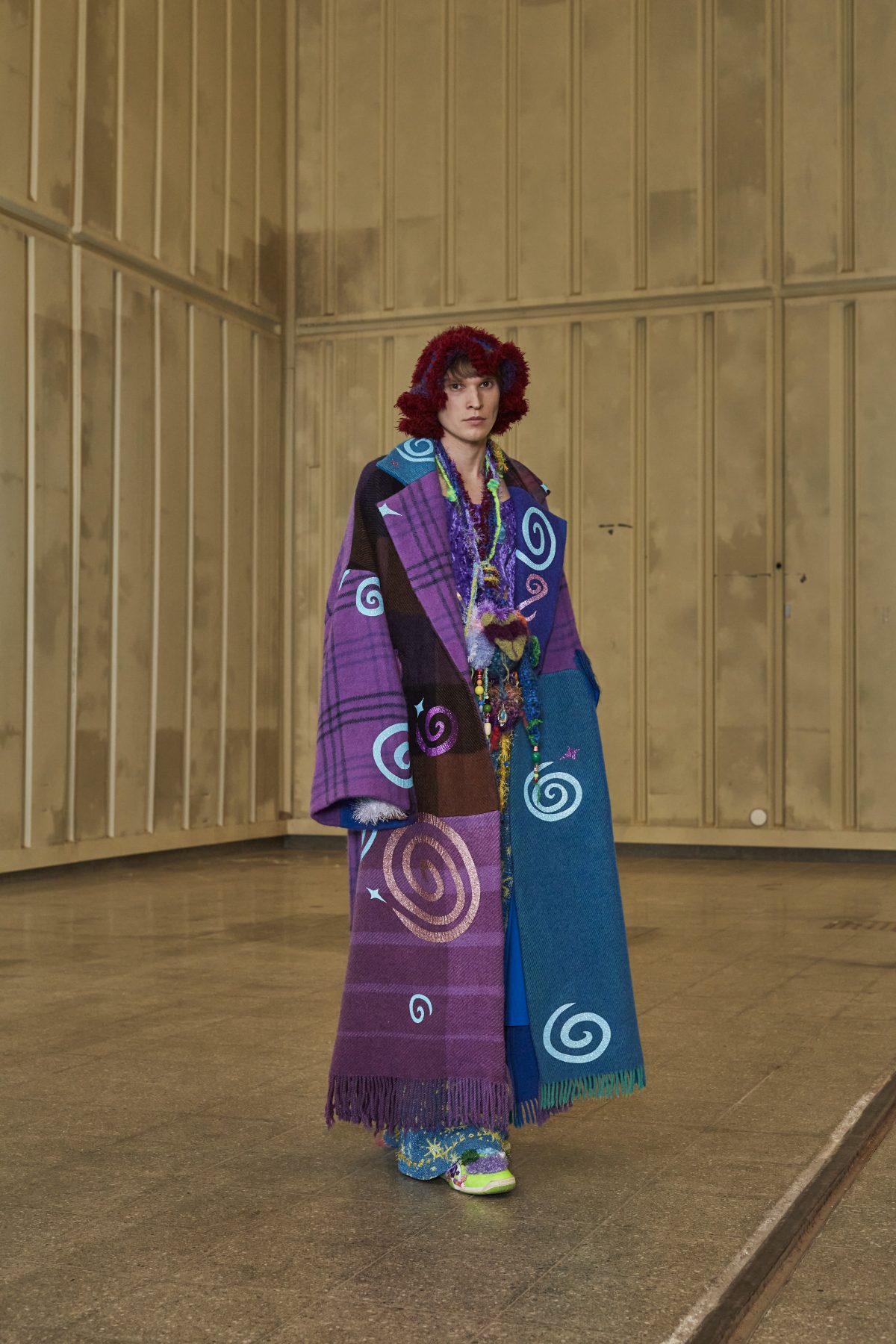 OA_06
OA_06

Olli Autio BA3 Graduate collection Photographer: Sofia Okkonen Model: Verner
OA_06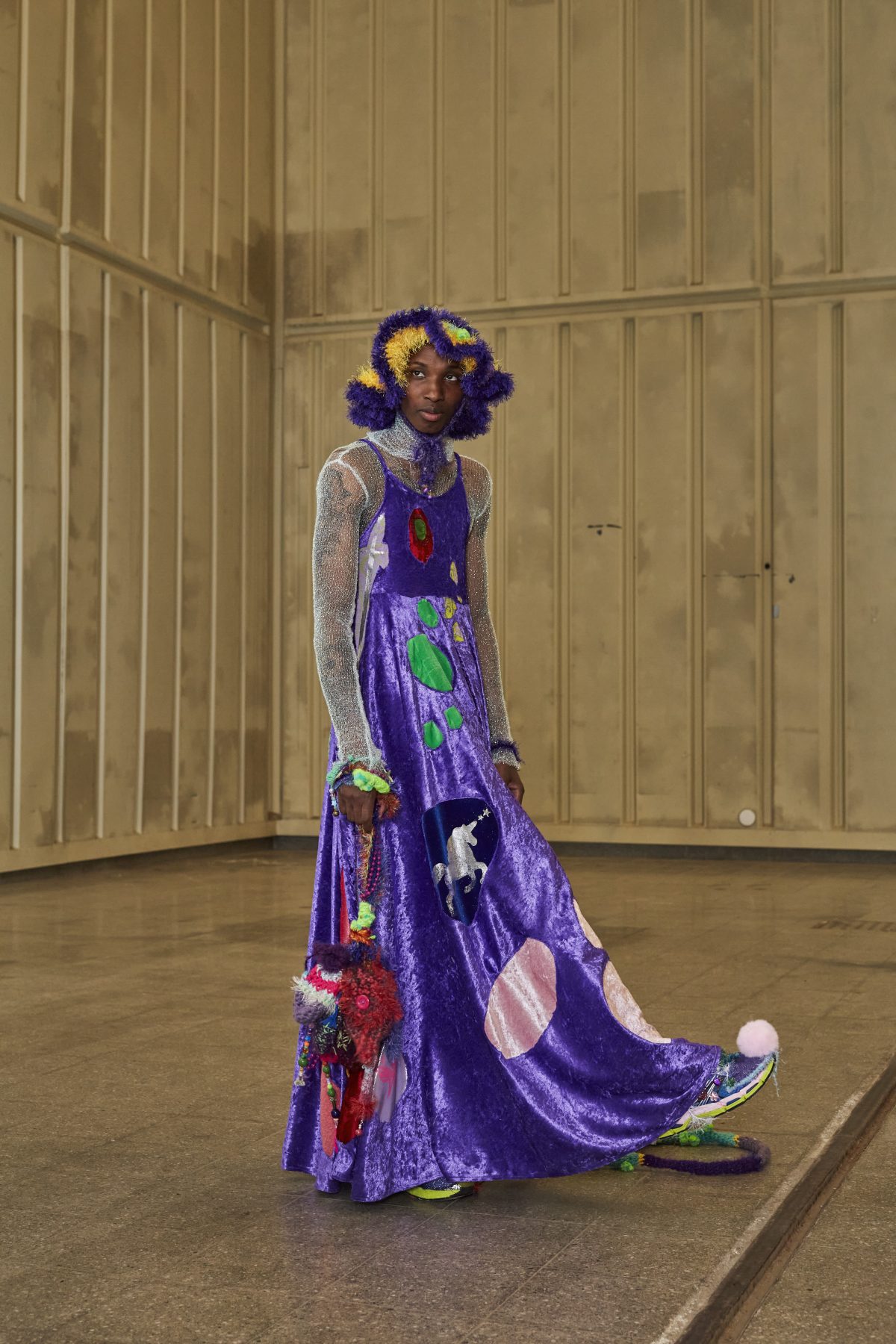 OA_07
OA_07

Olli Autio BA3 Graduate collection Photographer: Sofia Okkonen Model: Lokoko
OA_07How to cope with difficult situations and emotions in the bleak greyness of the world? The collection “Customize your character” tackles Autio’s own ways of coping with difficult situations and ways to escape them.
The collection is an ode to the vibrant mind of an imaginative child, but also a personal reflection of the designer’s own emotions and mental difficulties, and a practice in quantifying and visualizing them.
– I’ve always had these vivid fantasy worlds in my brain, and in this collection I wanted to study ways to escape into one’s own mind.
The inspirations for the collection’s looks are imaginary, protective characters, that exist in some swirly, incomprehensible state in Autio’s mind. Through research on role-playing video- and tabletop games and their ability to affect the personality of the player, as well as through studying their character-building mechanics, he brings these characters and this world from his mind to the concrete plane.
– These characters reflect me through an imaginary lens, so the inspiration for the clothing and silhouettes comes from my own personal, everyday style, but imagined in a more magical plane, like an imaginary, fantastical version of one’s own life, Autio explains.
Autio channelled the vibrancy of their thoughts and imagination into the clothes, with striking and bold patterns and details, often clashing with each other, like a random character generated in a video game. Main materials are knits in starkly different outputs, from thin and fragile, barely visible lurex knits to huge and heavy, three-dimensional crochet, made with the whims of my hand, with no thought given to the result. Old yarns and materials have also been repurposed and elevated with for example glitter and foil, adding their own stories on top of Autio’s own world.
Pamela Hakala
(ba)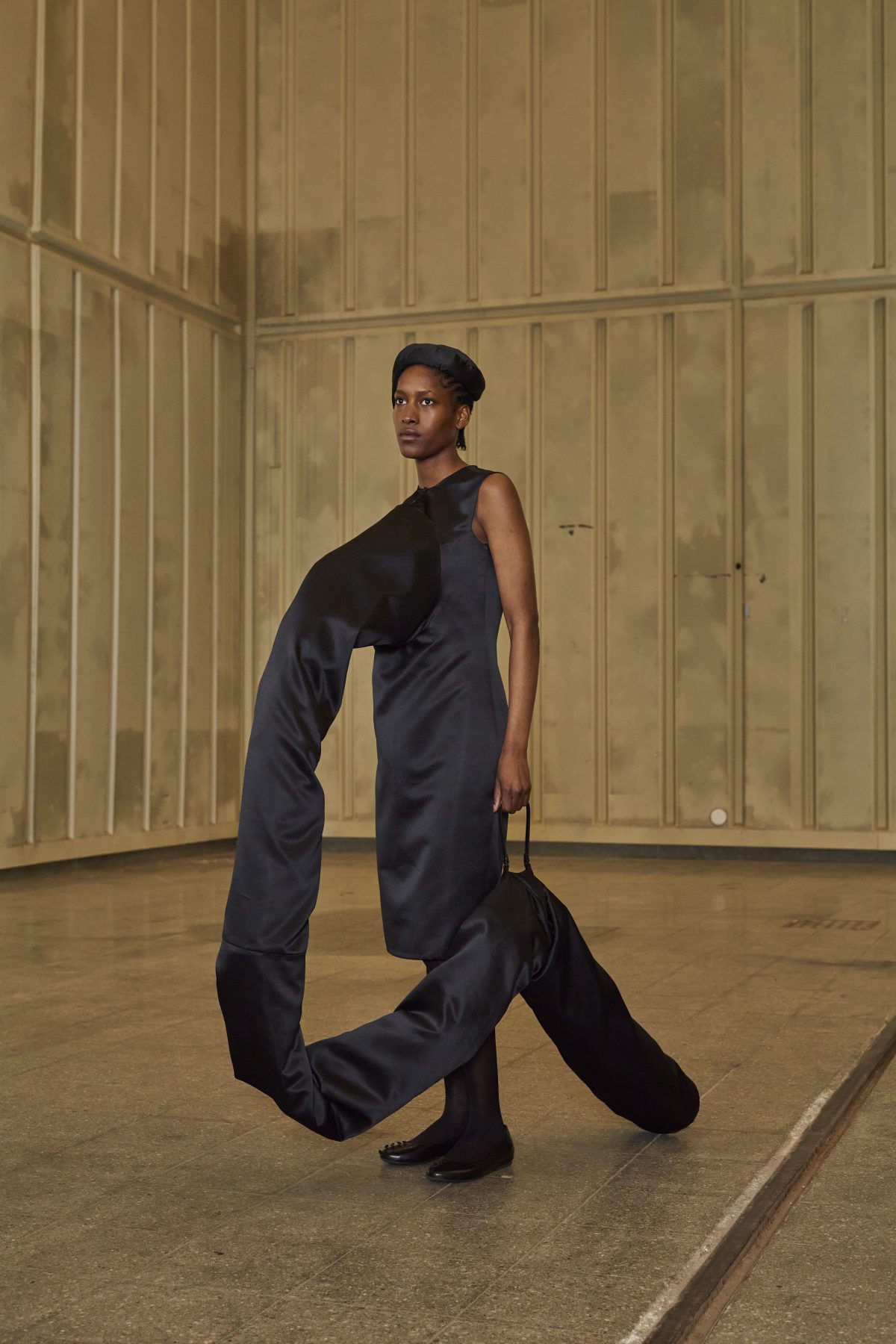 PH_01
PH_01

Pamela Hakala BA3 Graduate collection Photographer: Sofia Okkonen Model: Sharon
PH_01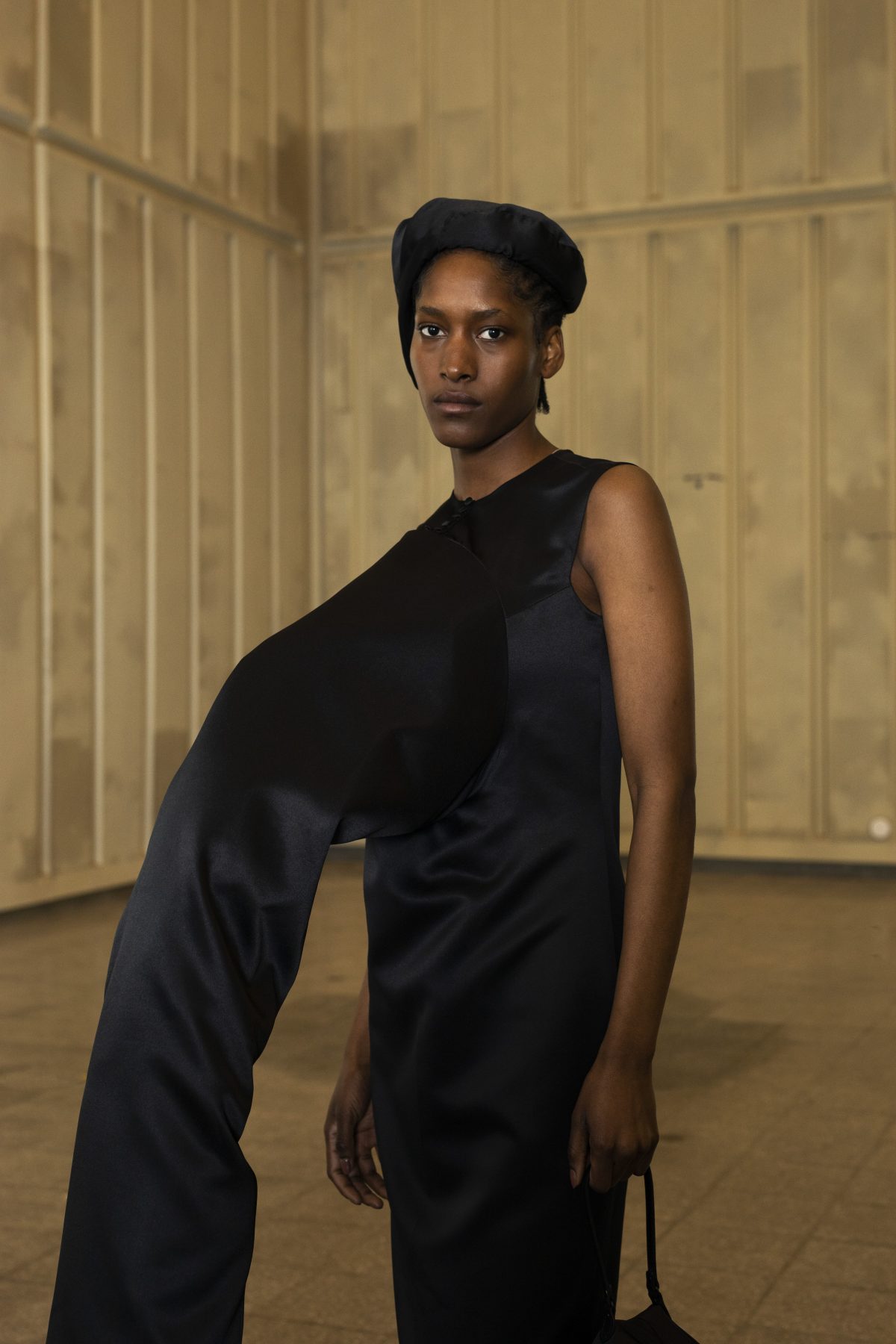 PH_02
PH_02

Pamela Hakala BA3 Graduate collection Photographer: Sofia Okkonen Model: Sharon
PH_02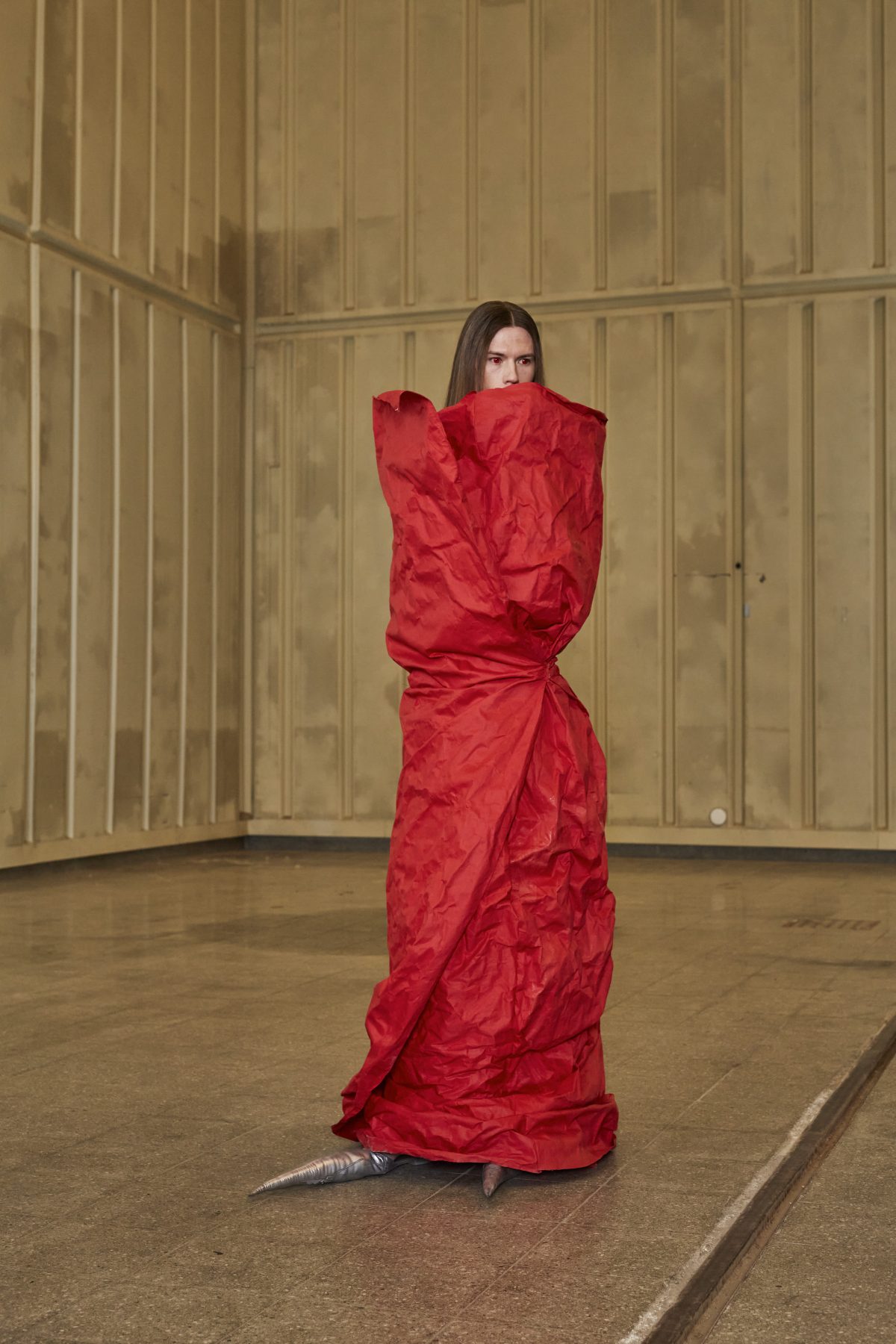 PH_03
PH_03

Pamela Hakala BA3 Graduate collection Photographer: Sofia Okkonen Model: Yaroslav
PH_03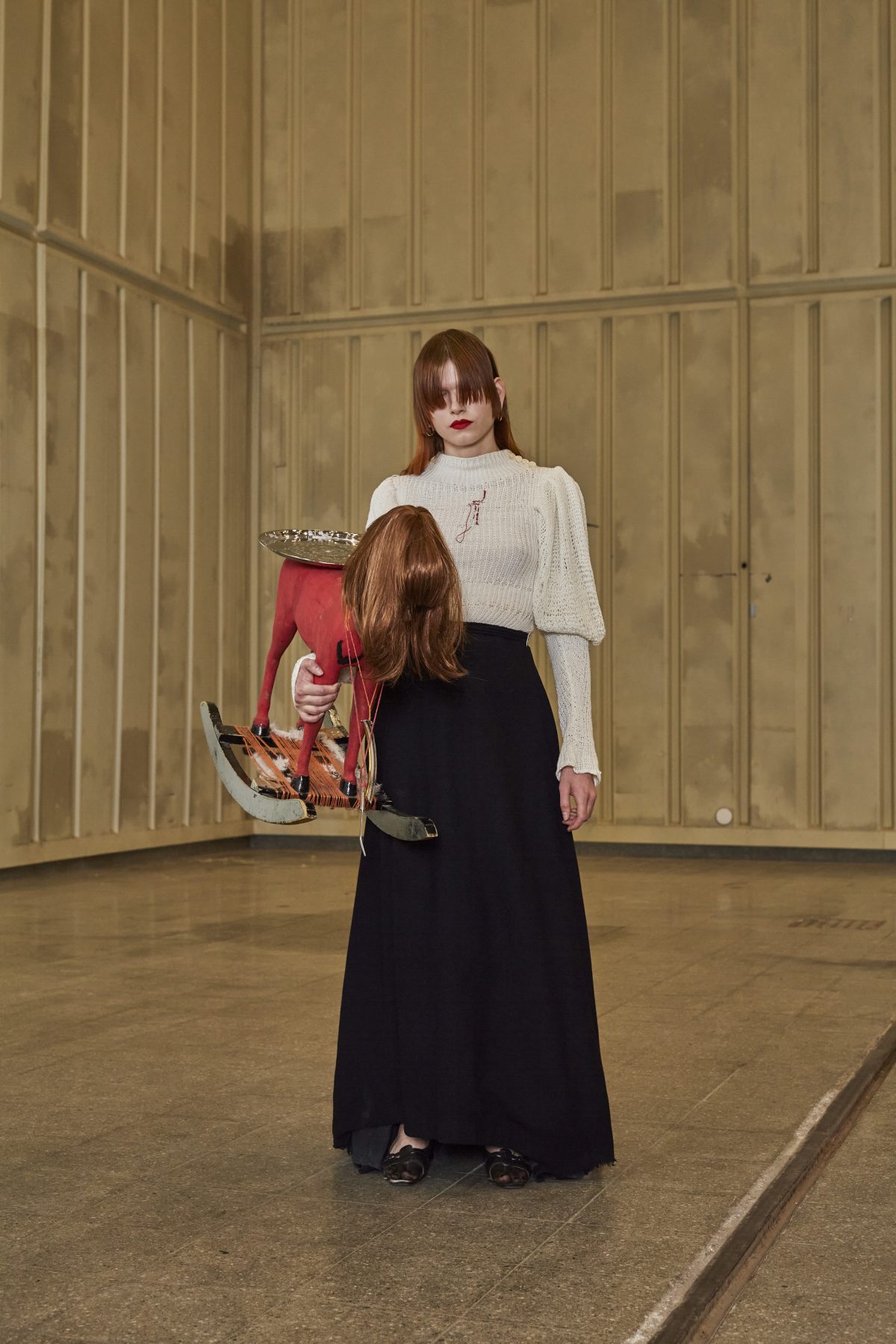 PH_04
PH_04

Pamela Hakala BA3 Graduate collection Photographer: Sofia Okkonen Model: Pamela
PH_04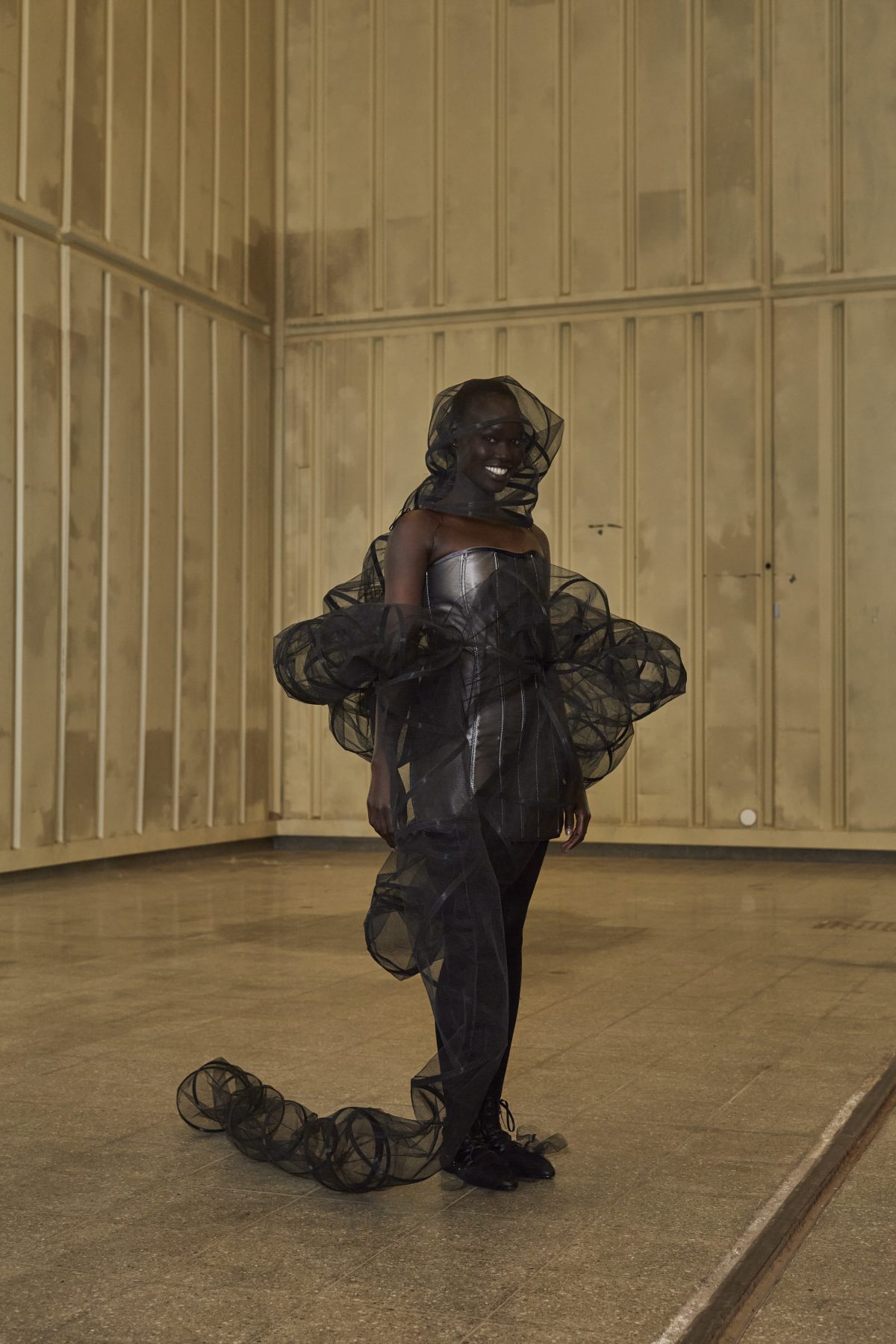 PH_05
PH_05

Pamela Hakala BA3 Graduate collection Photographer: Sofia Okkonen Model: Monica
PH_05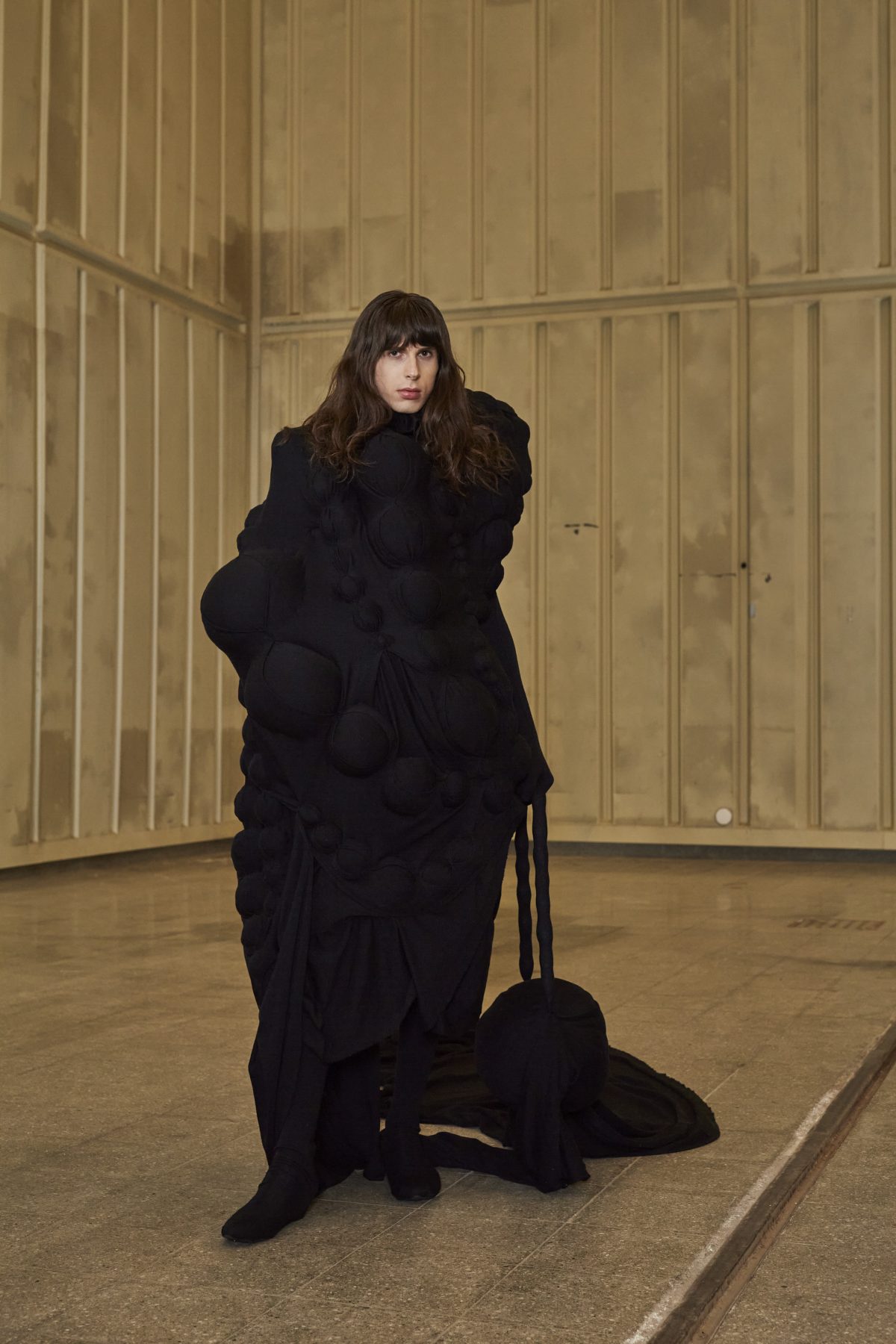 PH_06
PH_06

Pamela Hakala BA3 Graduate collection Photographer: Sofia Okkonen Model: Kenan
PH_06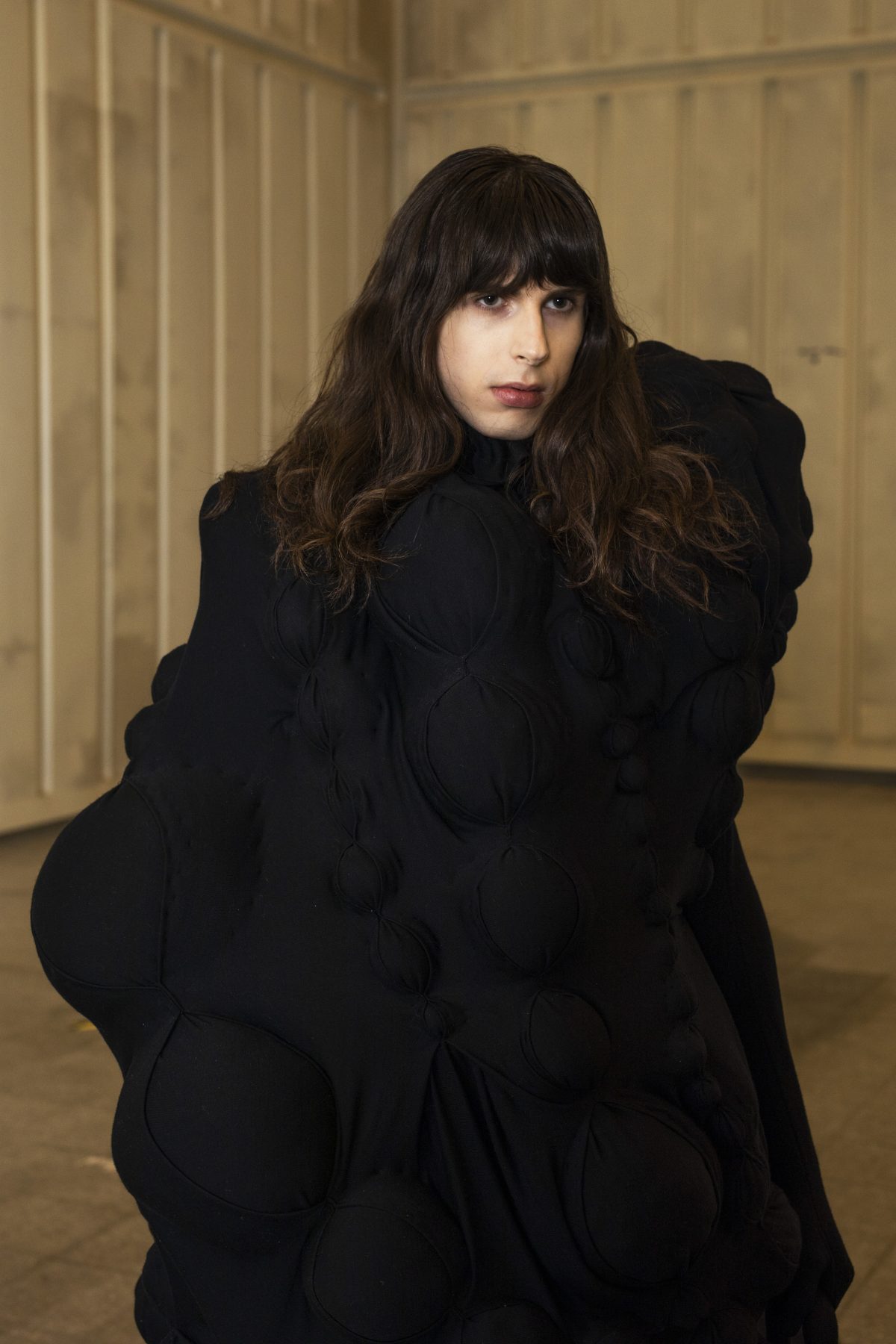 PH_07
PH_07

Pamela Hakala BA3 Graduate collection Photographer: Sofia Okkonen Model: Kenan
PH_07Pamela Hakala’s graduate collection is a landscape, a scenery, a setting of the mind. It’s a magnifying glass raised against the subconscious. Towards the draining of a leech. Crawling and flickering, a red serviette turning itself over, grasping, shielding, comforting, wrapping the cutlery. It’s an X-ray image. Black and white. It’s polished, raw and absurd. The elegance of surrealism. It’s heavy. It’s fulfilling. It’s a shared soul of a girl and a wooden horse strolling in the past.
– The process has been a therapeutic act for me as I, the flesh, inspired by the surrealist tradition, raised the magnifying glass and traced a part of my subconsciousness through drawing, photography and automatic writing, Hakala explains.
And that part now exists and breathes as a collection of five looks. It is a study of constructing a garment with understructure. Corsets, tulle, and boning anchor the collection in the context of formal dressing and fashion history, but it still twists itself to the storyline and etiquette of its own.
– I see the collection as a play with characters and dialogue that hasn’t been written down. The clothes are not costumes but projections. There is no message in this collection. The dialogue happens between the garments themselves and the body wearing them. It doesn’t want to say anything aloud. It’s silent.
Risto Kirjonen
(ba)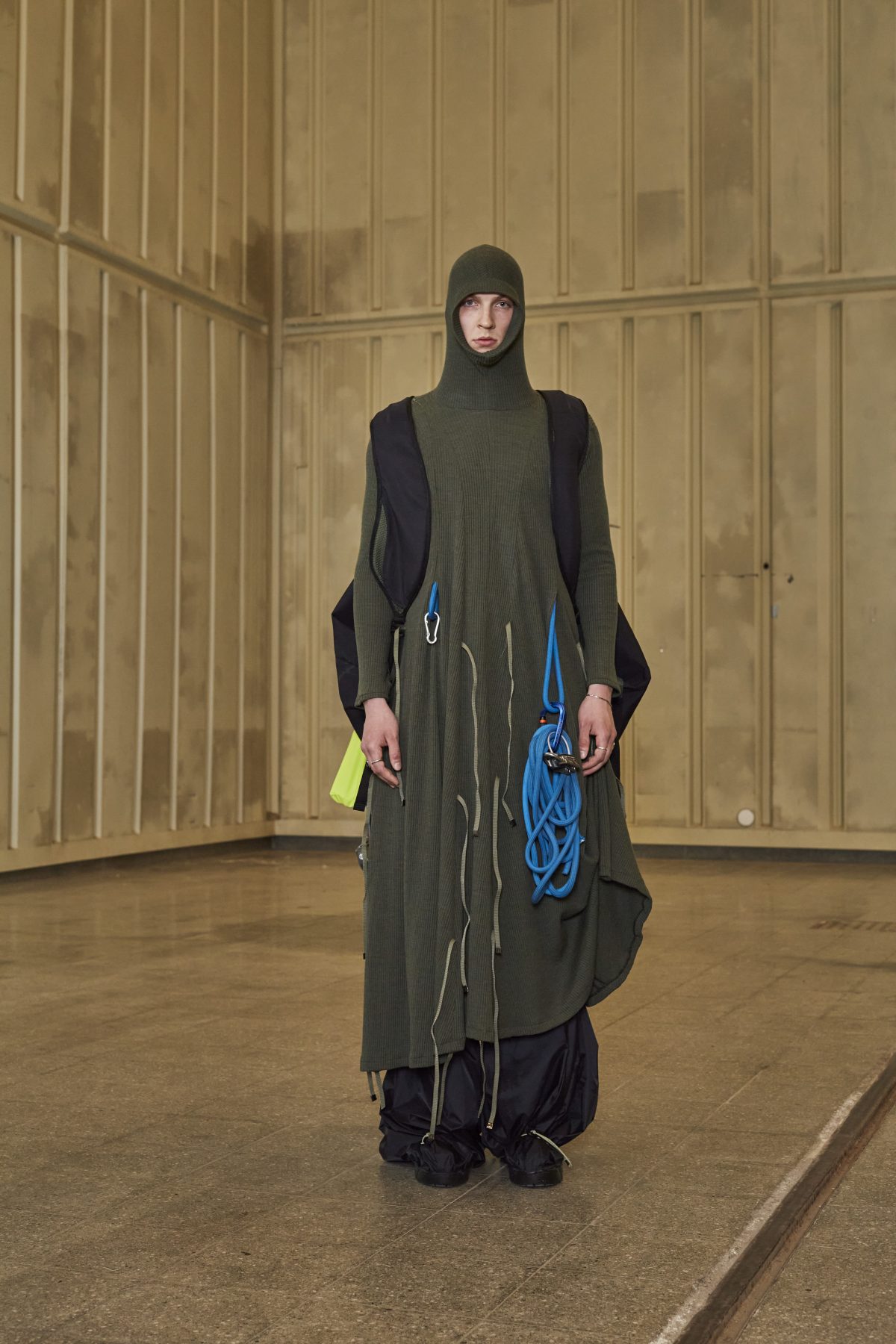 RK_01
RK_01

Risto Kirjonen BA3 Graduate collection Photographer: Sofia Okkonen Model: Peik
RK_01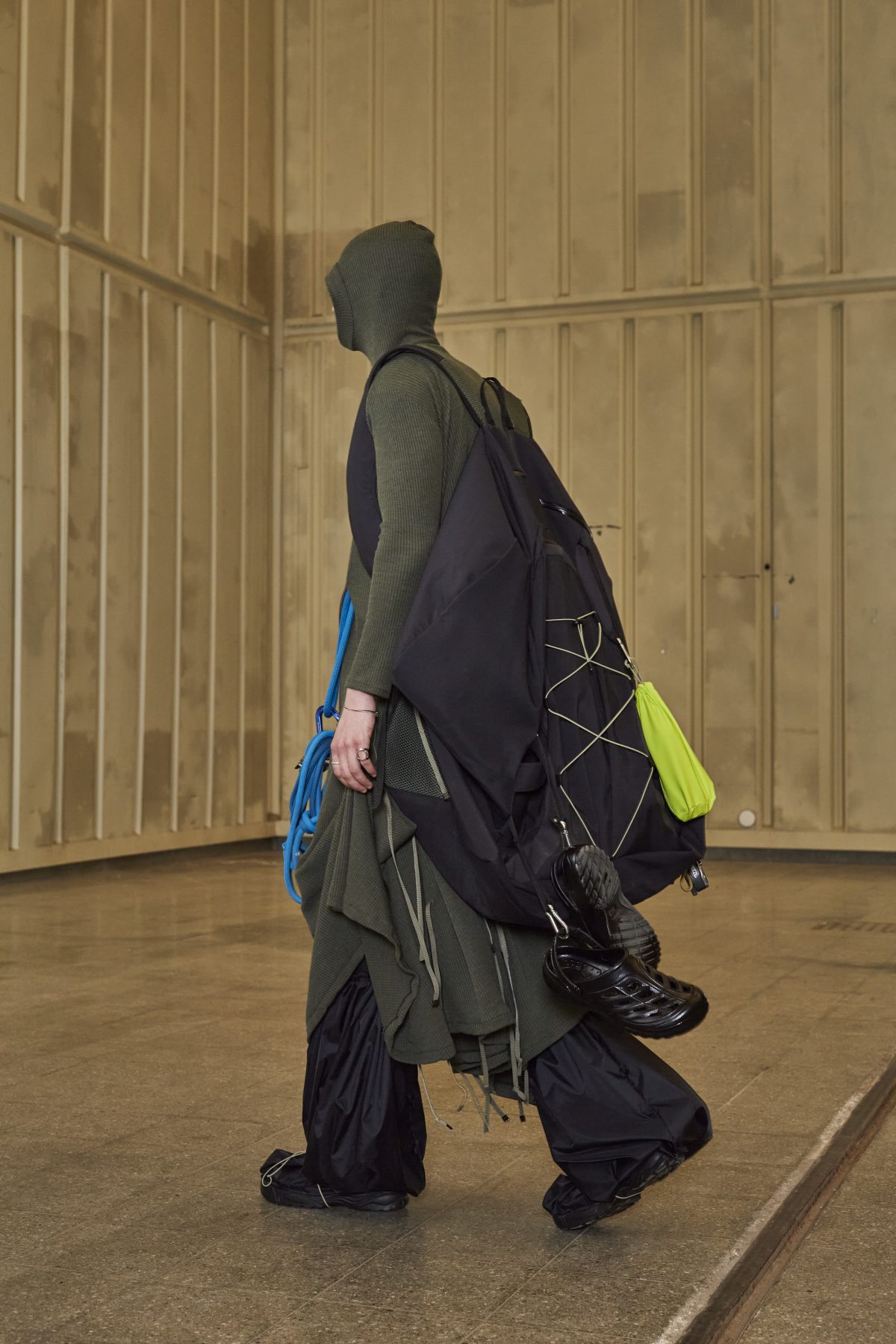 RK_02
RK_02

Risto Kirjonen BA3 Graduate collection Photographer: Sofia Okkonen Model: Peik
RK_02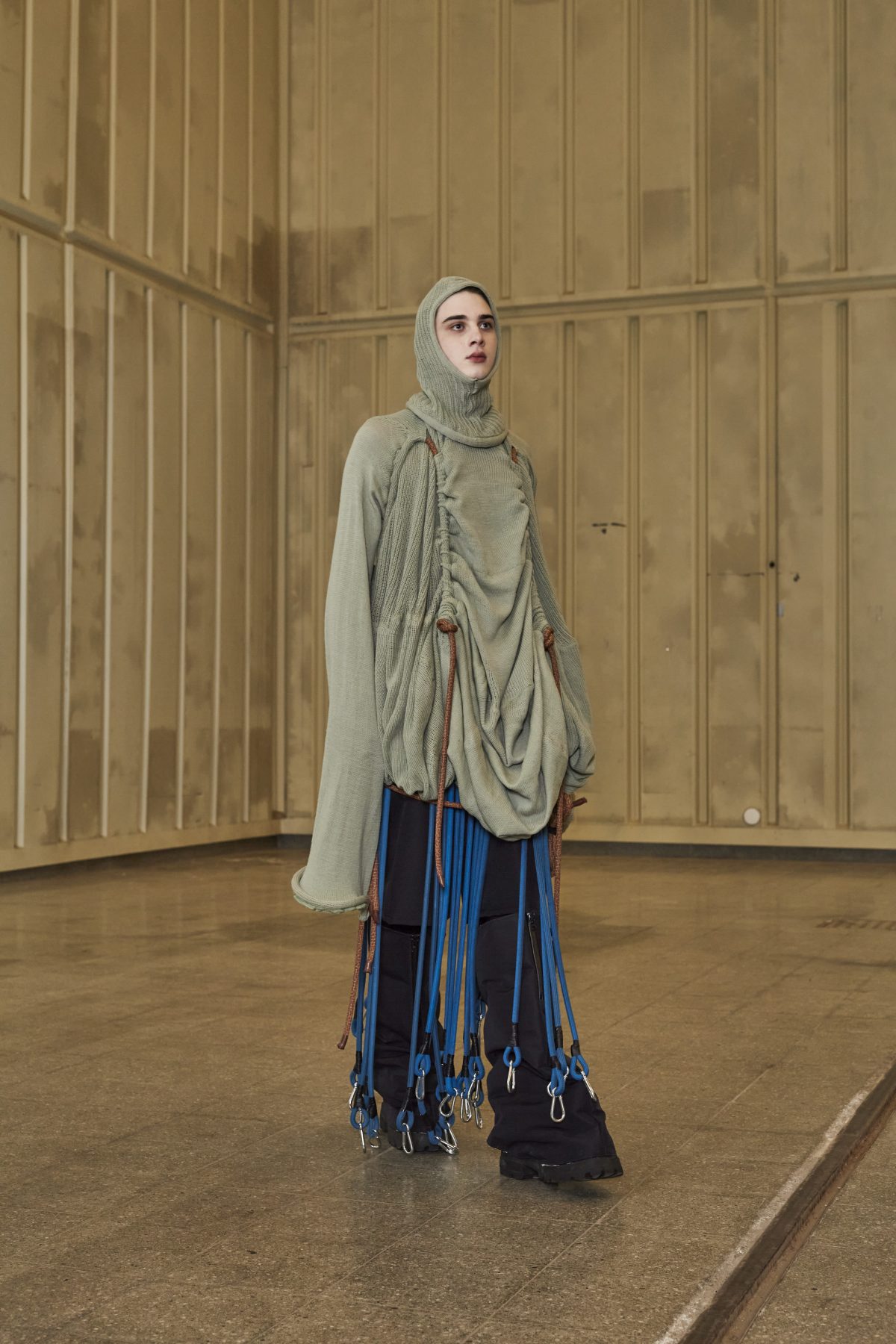 RK_03
RK_03

Risto Kirjonen BA3 Graduate collection Photographer: Sofia Okkonen Model: Iiro
RK_03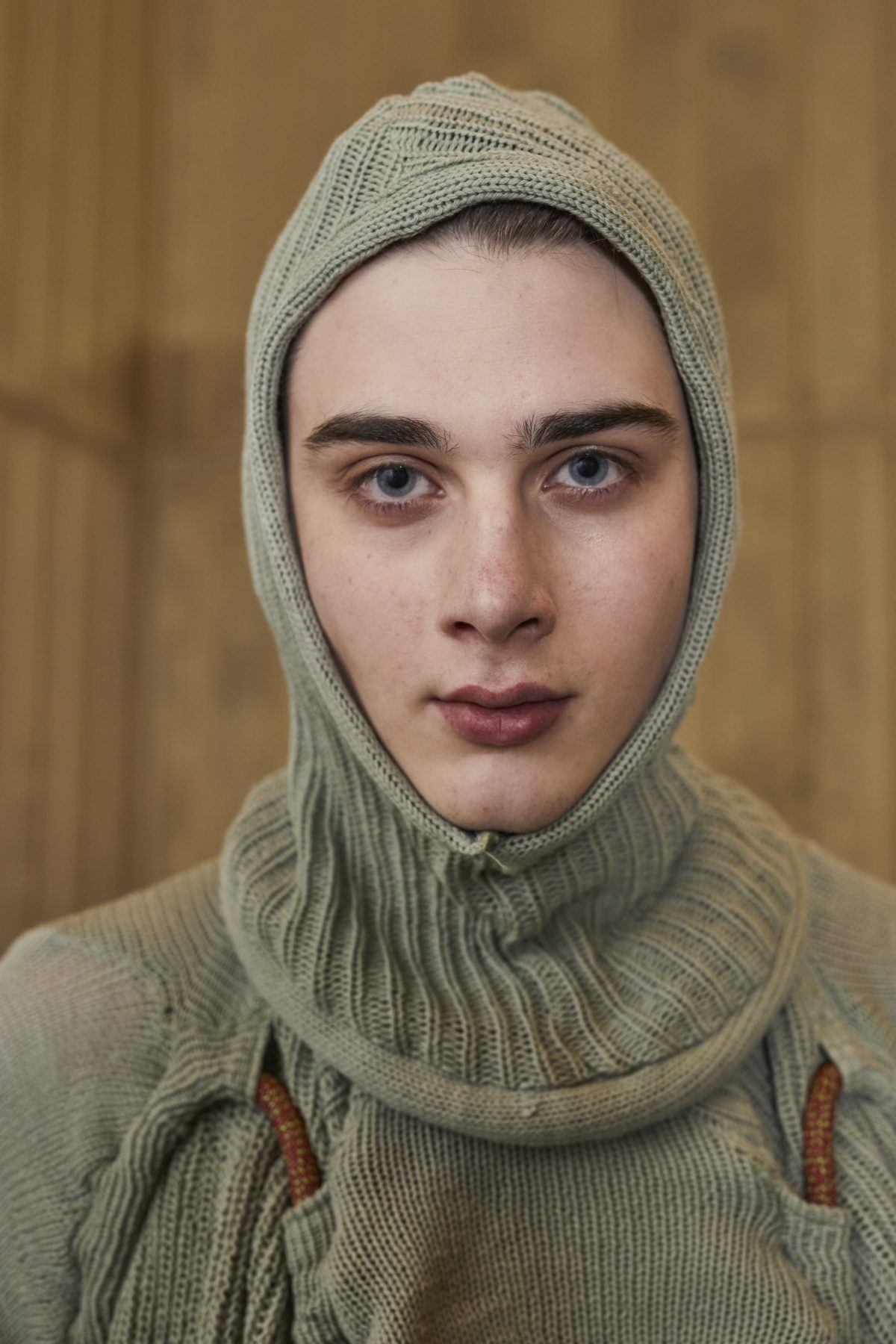 RK_04
RK_04

Risto Kirjonen BA3 Graduate collection Photographer: Sofia Okkonen Model: Iiro
RK_04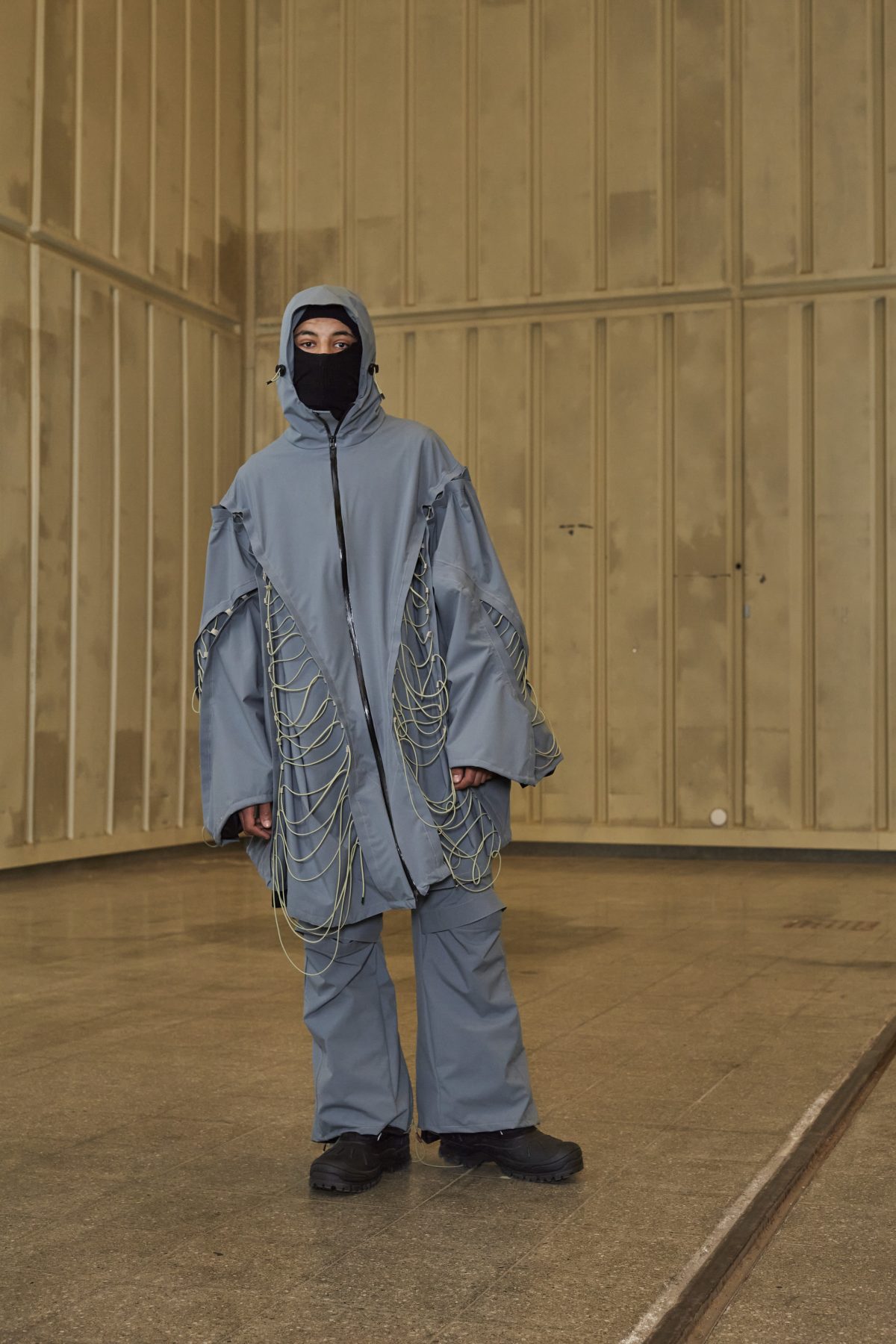 RK_05
RK_05

Risto Kirjonen BA3 Graduate collection Photographer: Sofia Okkonen Model: Amine
RK_05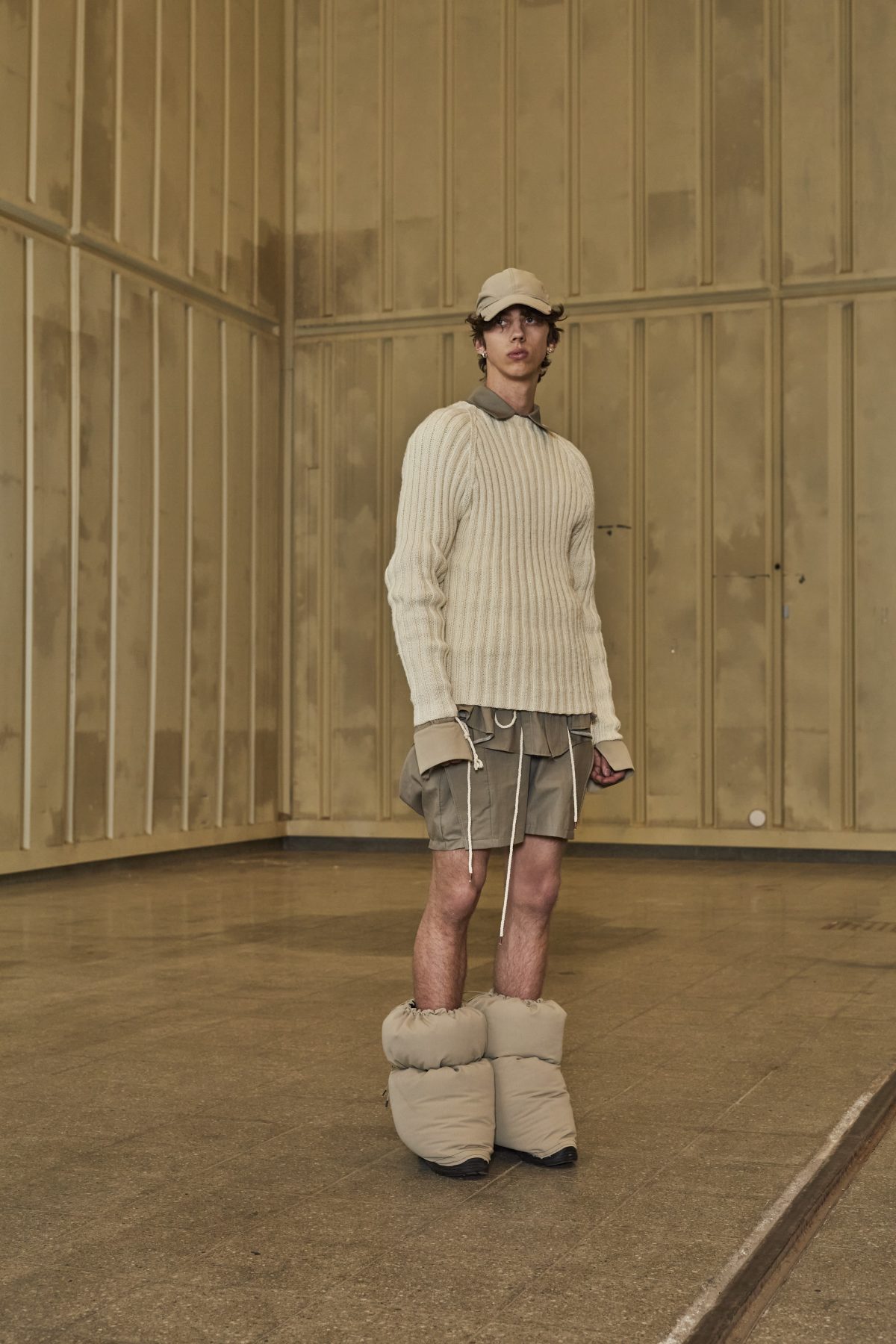 RK_06
RK_06

Risto Kirjonen BA3 Graduate collection Photographer: Sofia Okkonen Model: Joel
RK_06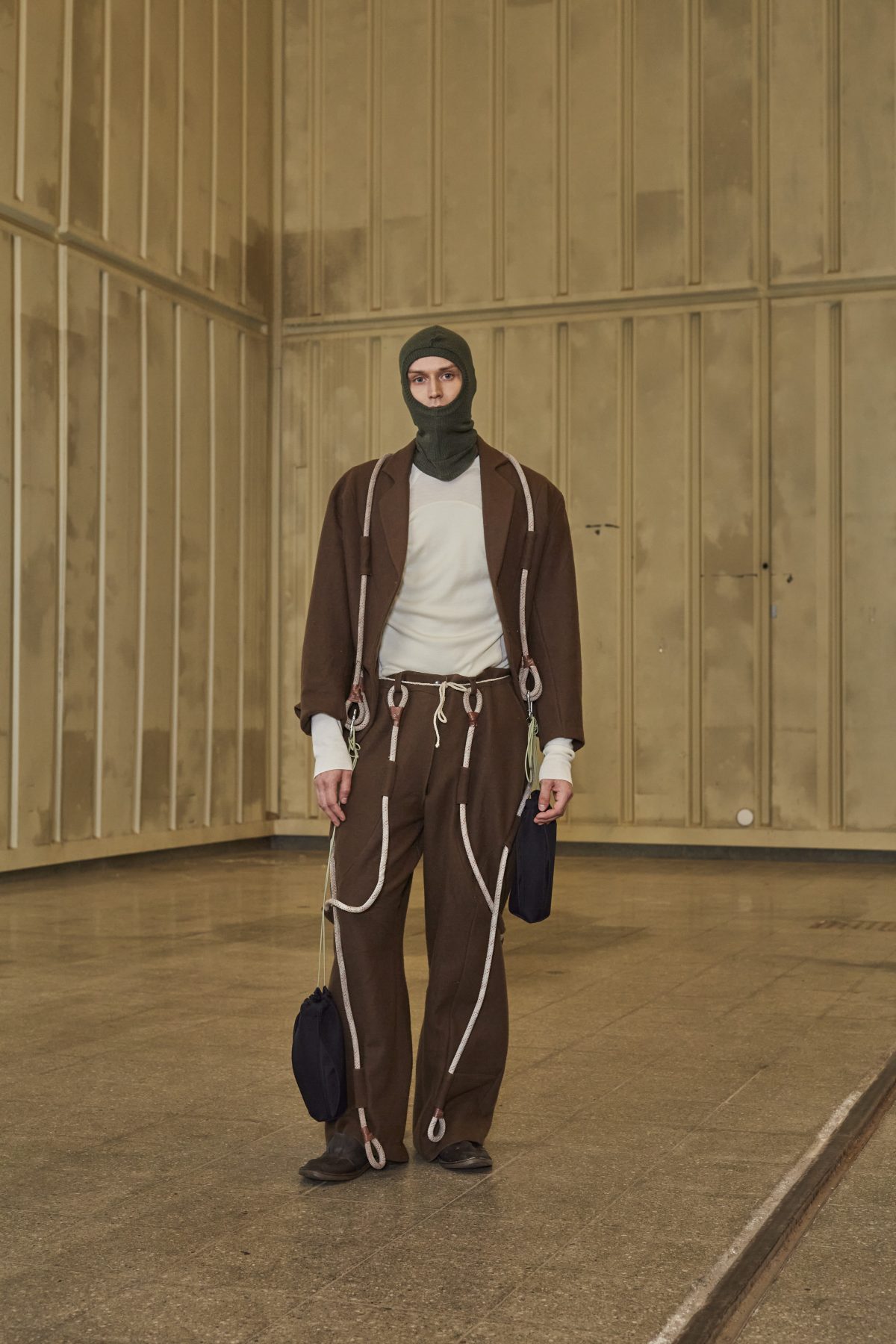 RK_07
RK_07

Risto Kirjonen BA3 Graduate collection Photographer: Sofia Okkonen Model: Onniliinus
RK_07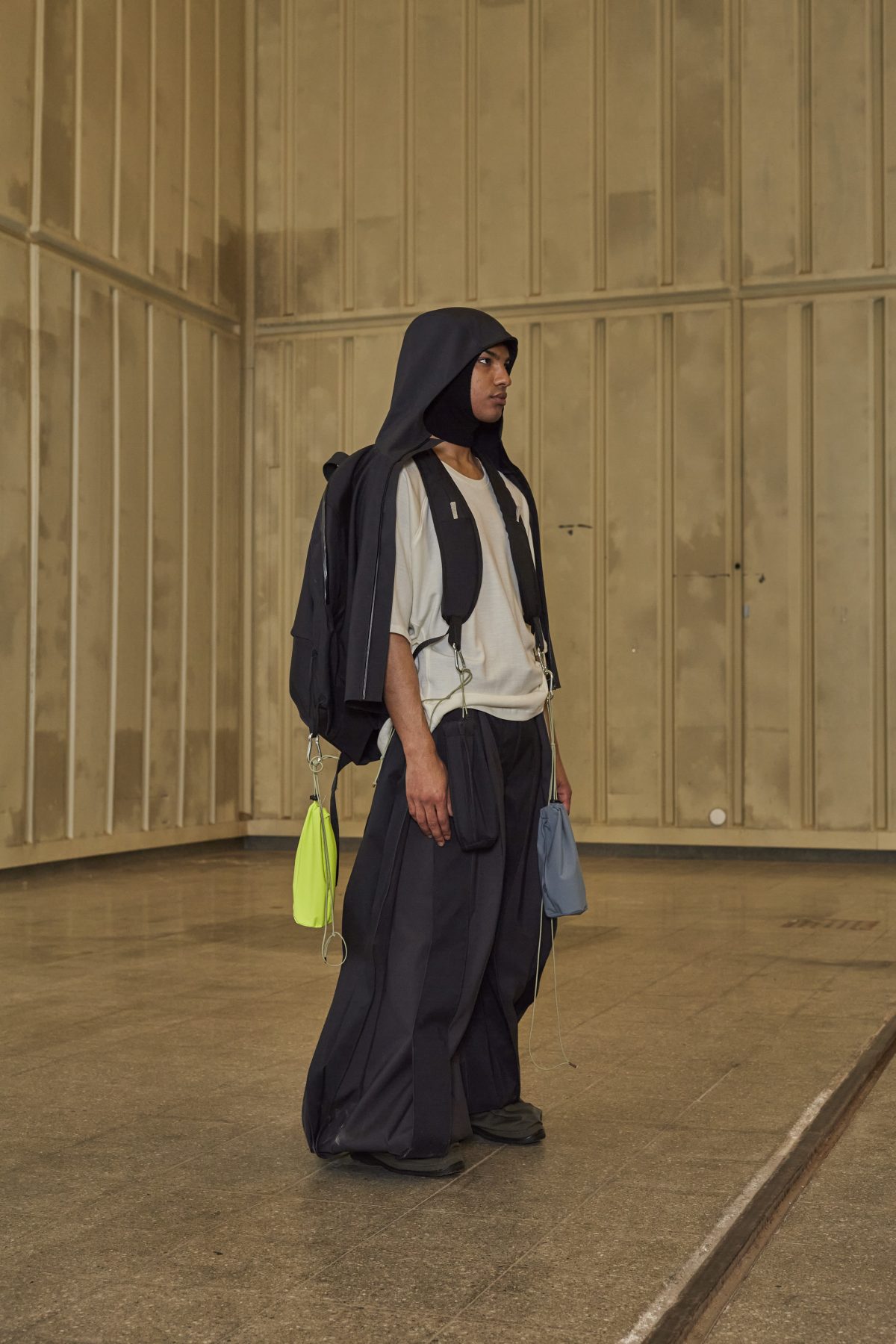 RK_08
RK_08

Risto Kirjonen BA3 Graduate collection Photographer: Sofia Okkonen Model: Bayo
RK_08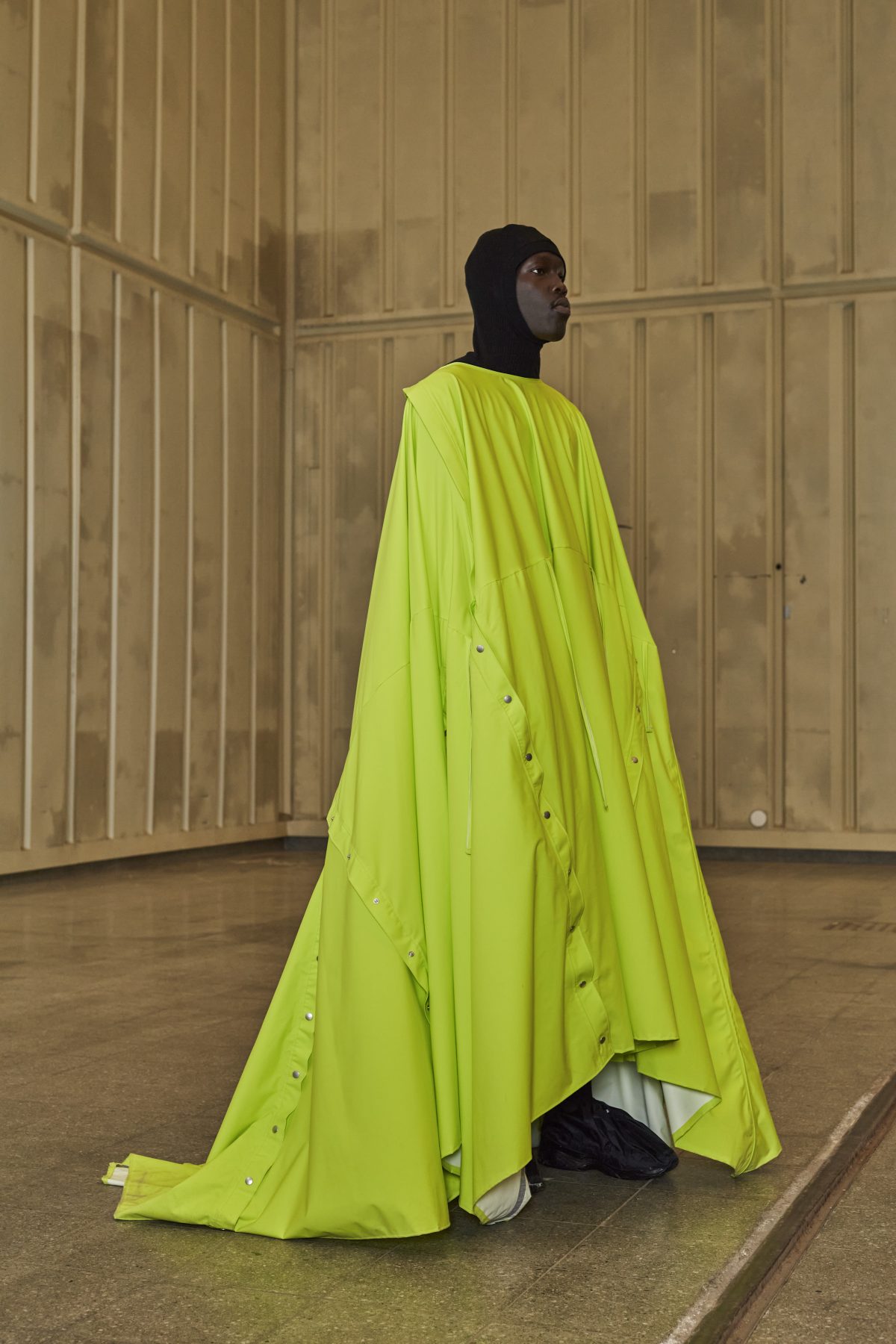 RK_09
RK_09

Risto Kirjonen BA3 Graduate collection Photographer: Sofia Okkonen Model: Manyin
RK_09Fashion BA student Risto Kirjonen’s graduate collectionis is inspired by the functional and beautiful clothing of the 1920s mountaineers. The collection, consisting of six pieces, features taped seams and water-resistant materials combined with natural merino knits, making it both practical and fashionable for both outdoor and the city.
The collection is designed to play with the idea of functional and non-functional clothing, while still staying true to the art of garment making. Finding the border in a way. Each piece in the collection is carefully crafted with functionality in mind, while also featuring unique elements that make them stand out from traditional hiking clothes and form a beautiful set.
– I am interested in transforming something old into something new as well as in chasing the border of functional and non-functional clothing. I wanted to create a collection that was both functional and still lifting up my skills within the contemporary fashion. The inspiration for this collection came from my love of the outdoors and my passion for fashion that is made for reason, Kirjonen explains.
As a young designer, Risto Kirjonen was inspired by the ruggedness and practicality of mountaineering clothing from the early 1900s. By combining this inspiration with modern design elements, he has created a collection that is both practical and contemporary.
The six-piece collection includes a variety of pieces, from pants and jackets to backpacks and accessories. Top of all there is a wearable tent with beautiful silhouette especially in the movement.
Sohvi Väänänen
(ma)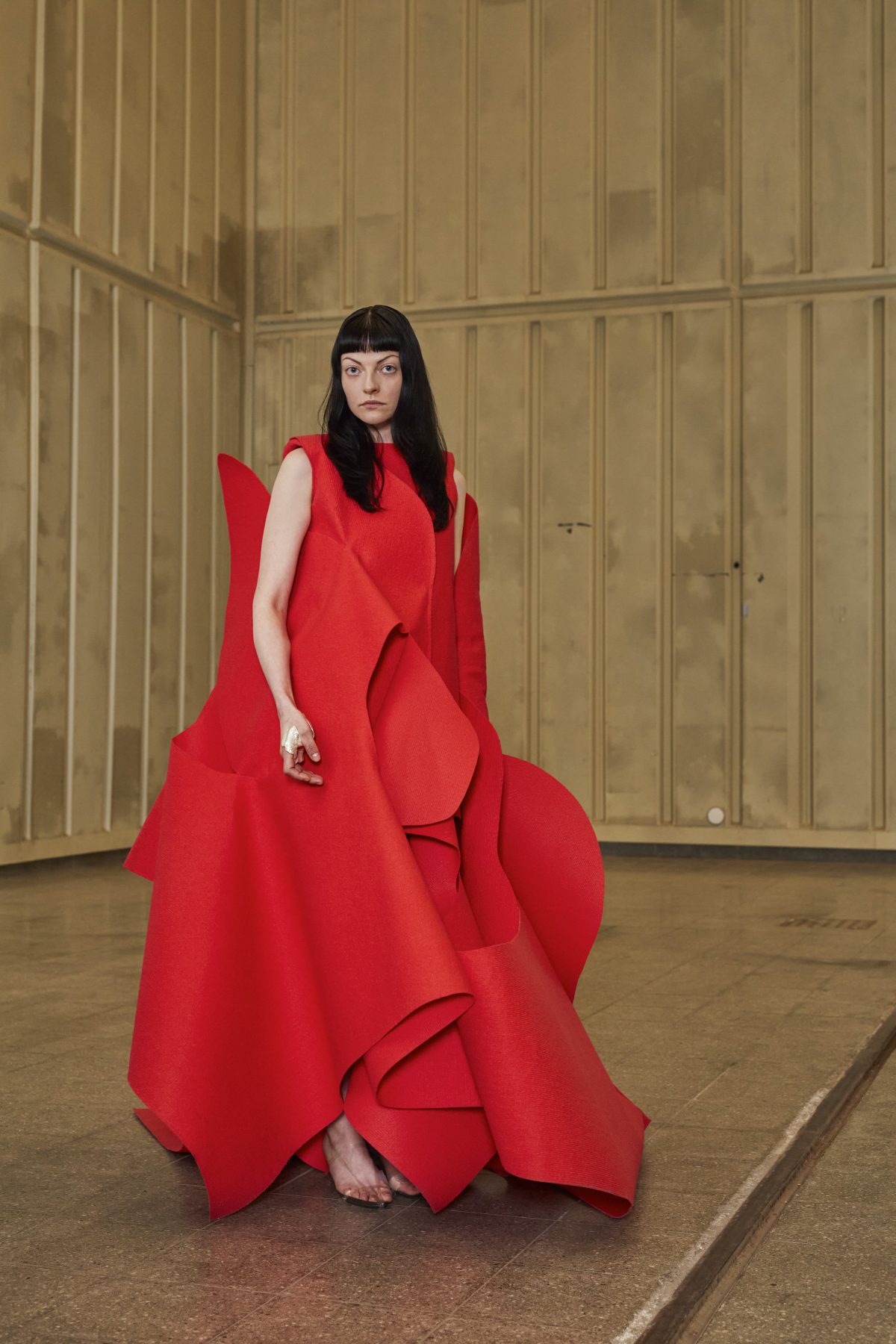 SV_01
SV_01

Sohvi Väänänen MA2 Graduate collection Photographer: Sofia Okkonen Model: Lotta
SV_01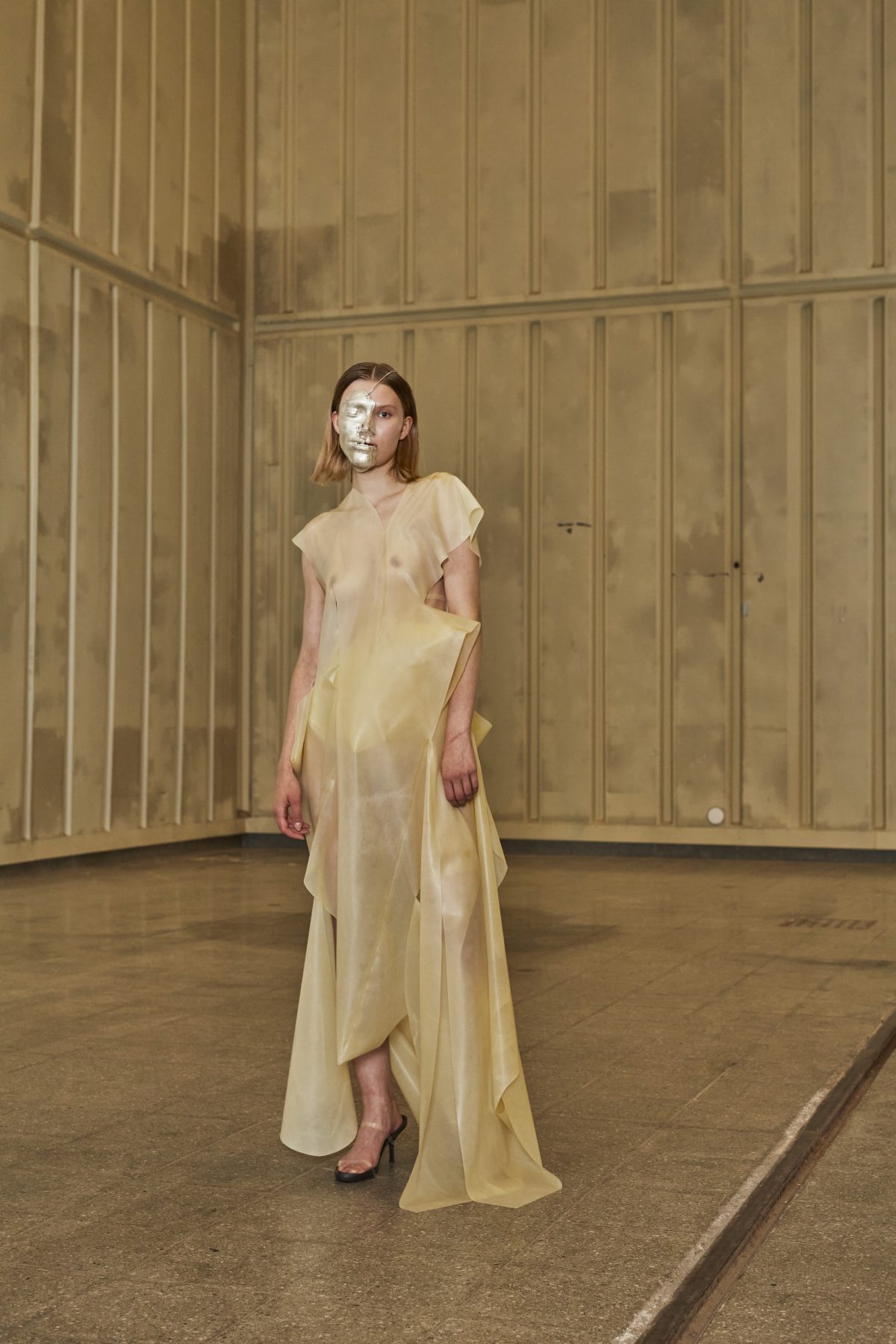 SV_02
SV_02

Sohvi Väänänen MA2 Graduate collection Photographer: Sofia Okkonen Model: Isadora
SV_02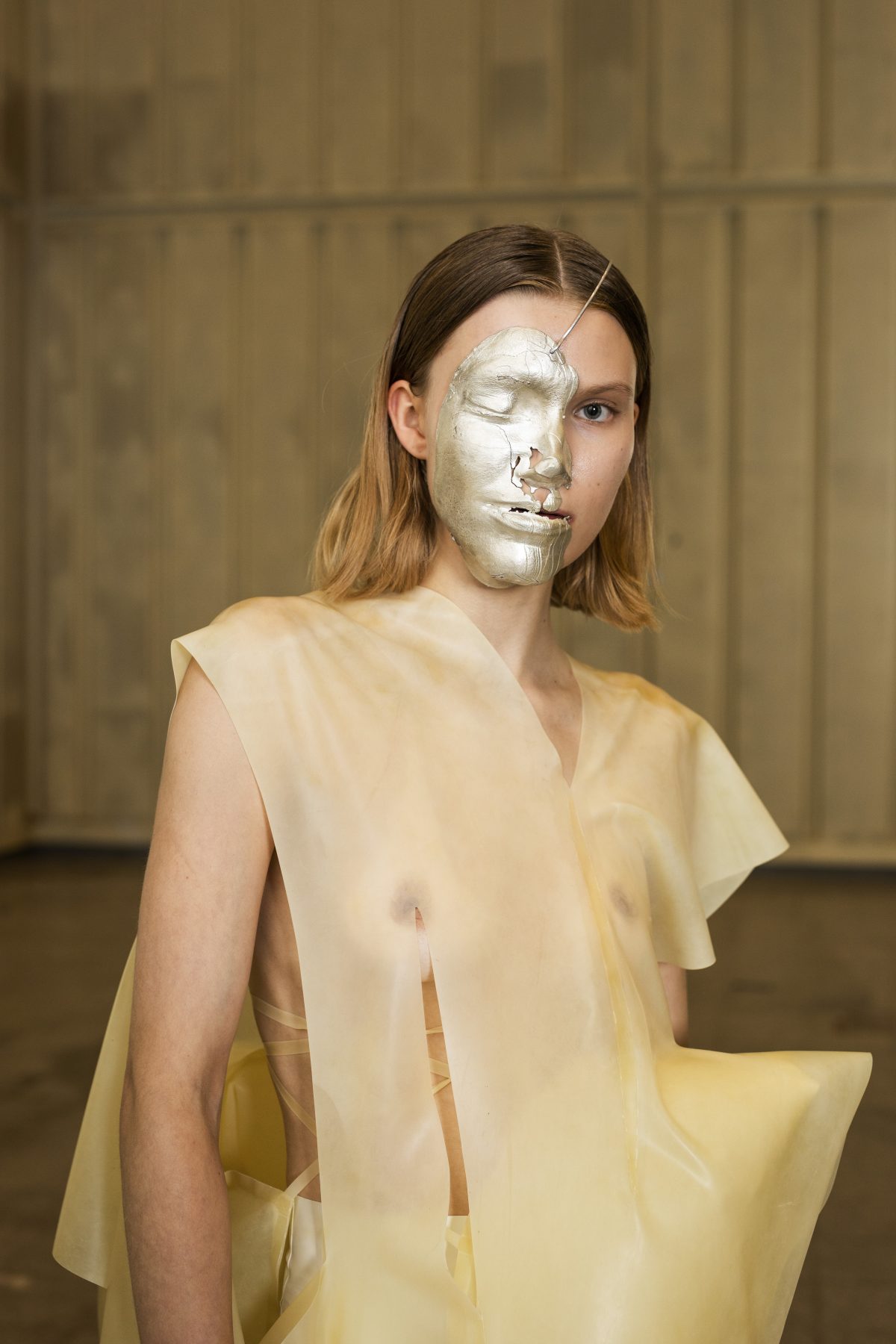 SV_03
SV_03

Sohvi Väänänen MA2 Graduate collection Photographer: Sofia Okkonen Model: Isadora
SV_03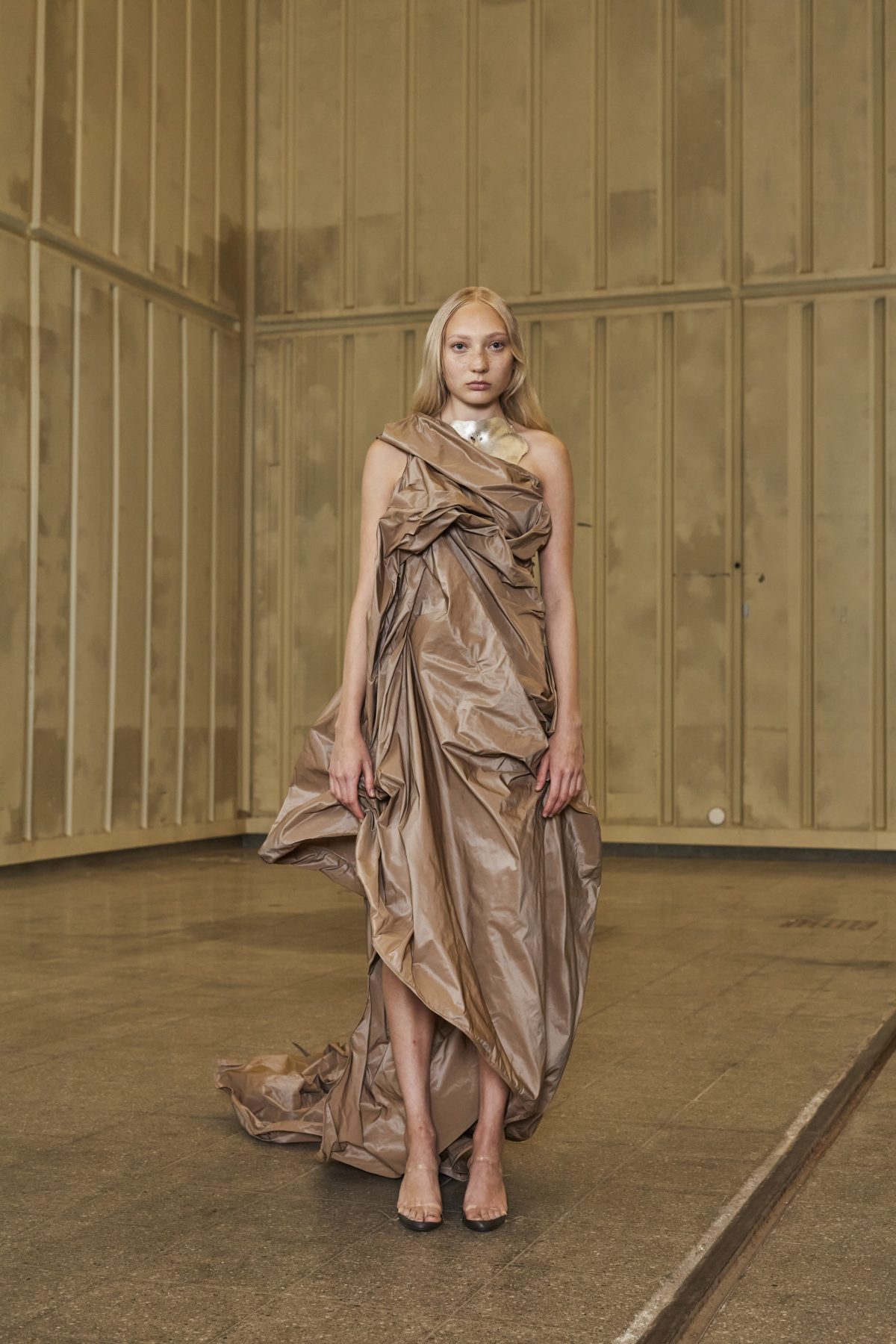 SV_04
SV_04

Sohvi Väänänen MA2 Graduate collection Photographer: Sofia Okkonen Model: Stefania
SV_04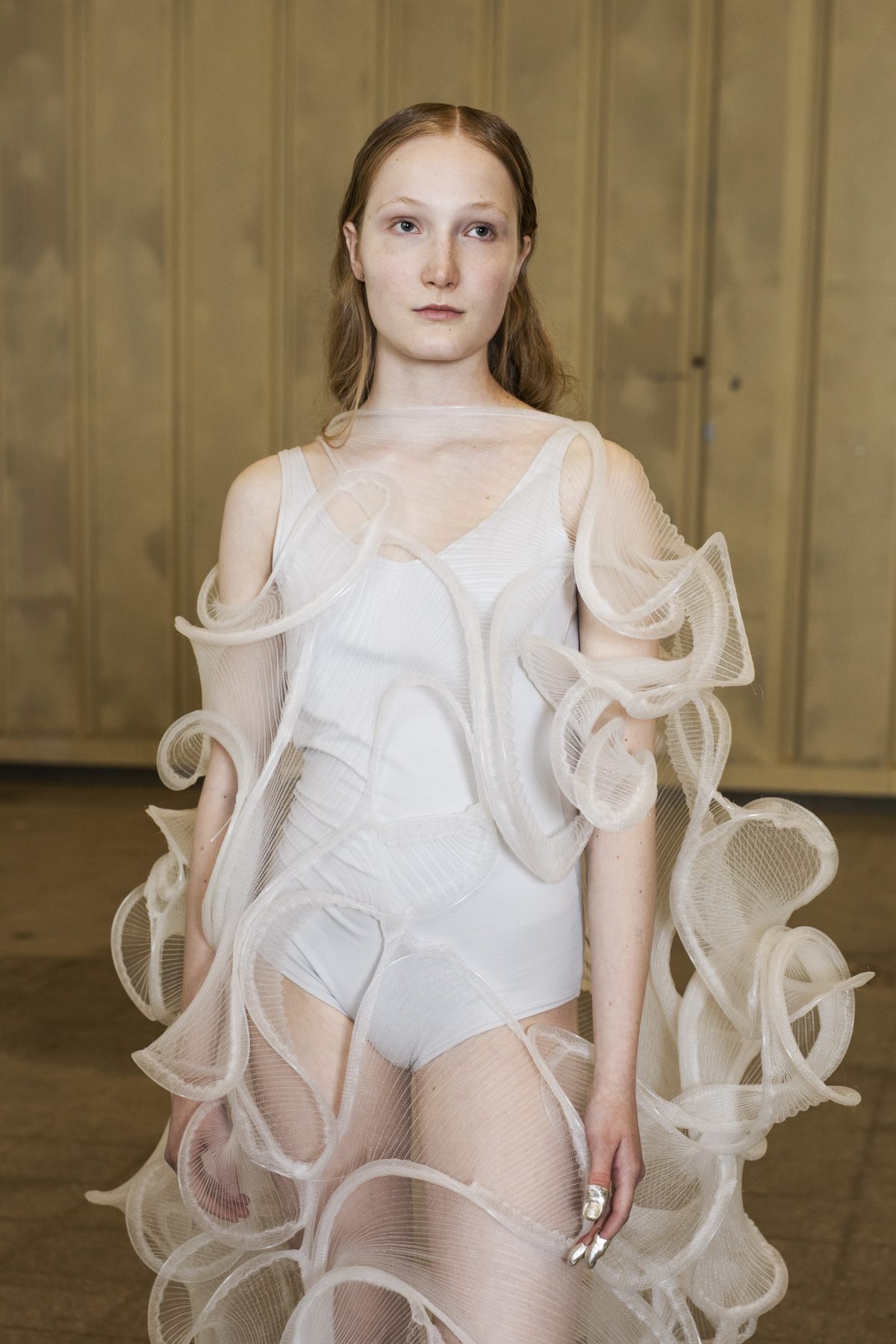 SV_05
SV_05

Sohvi Väänänen MA2 Graduate collection Photographer: Sofia Okkonen Model: Aada
SV_05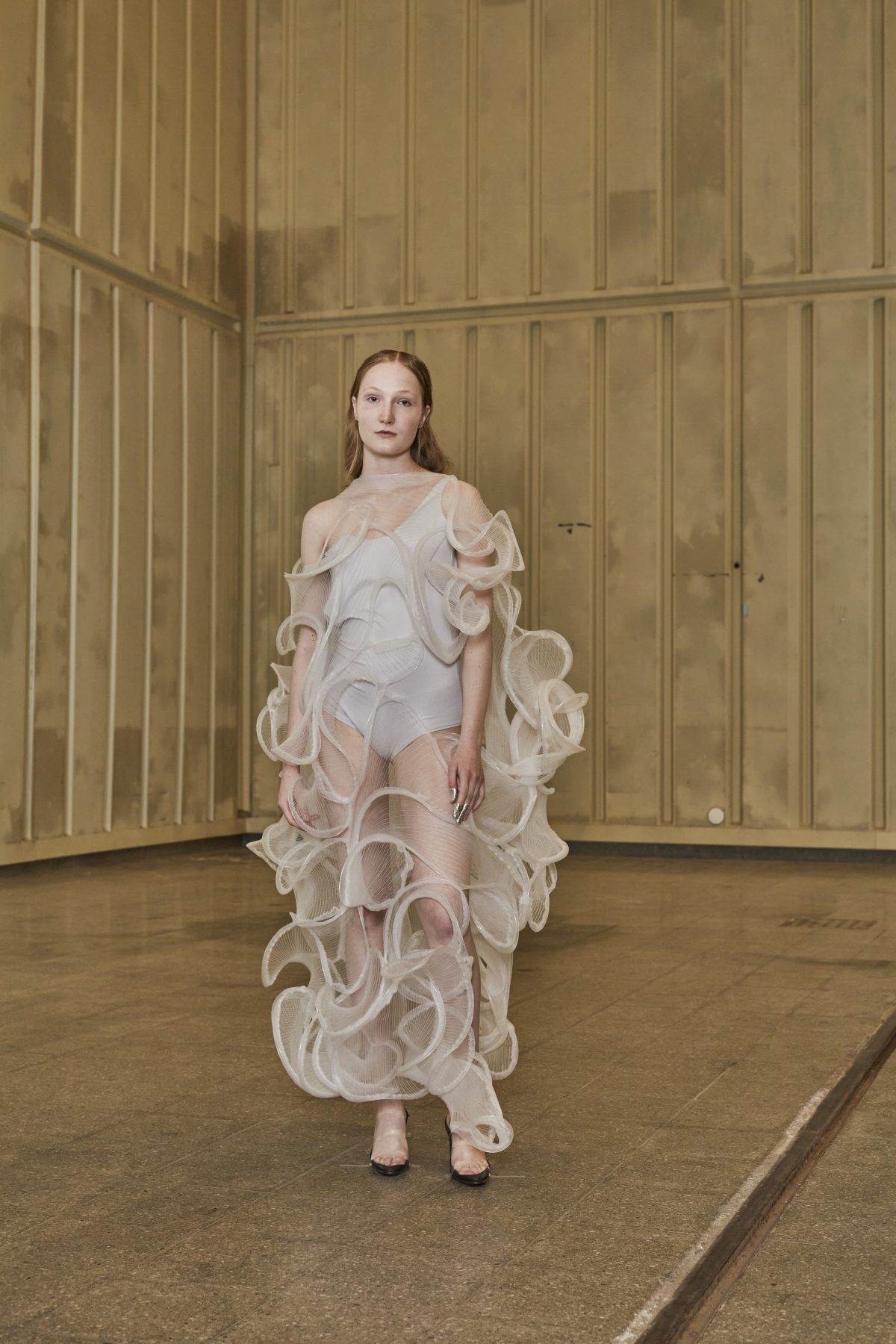 SV_06
SV_06

Sohvi Väänänen MA2 Graduate collection Photographer: Sofia Okkonen Model: Aada
SV_06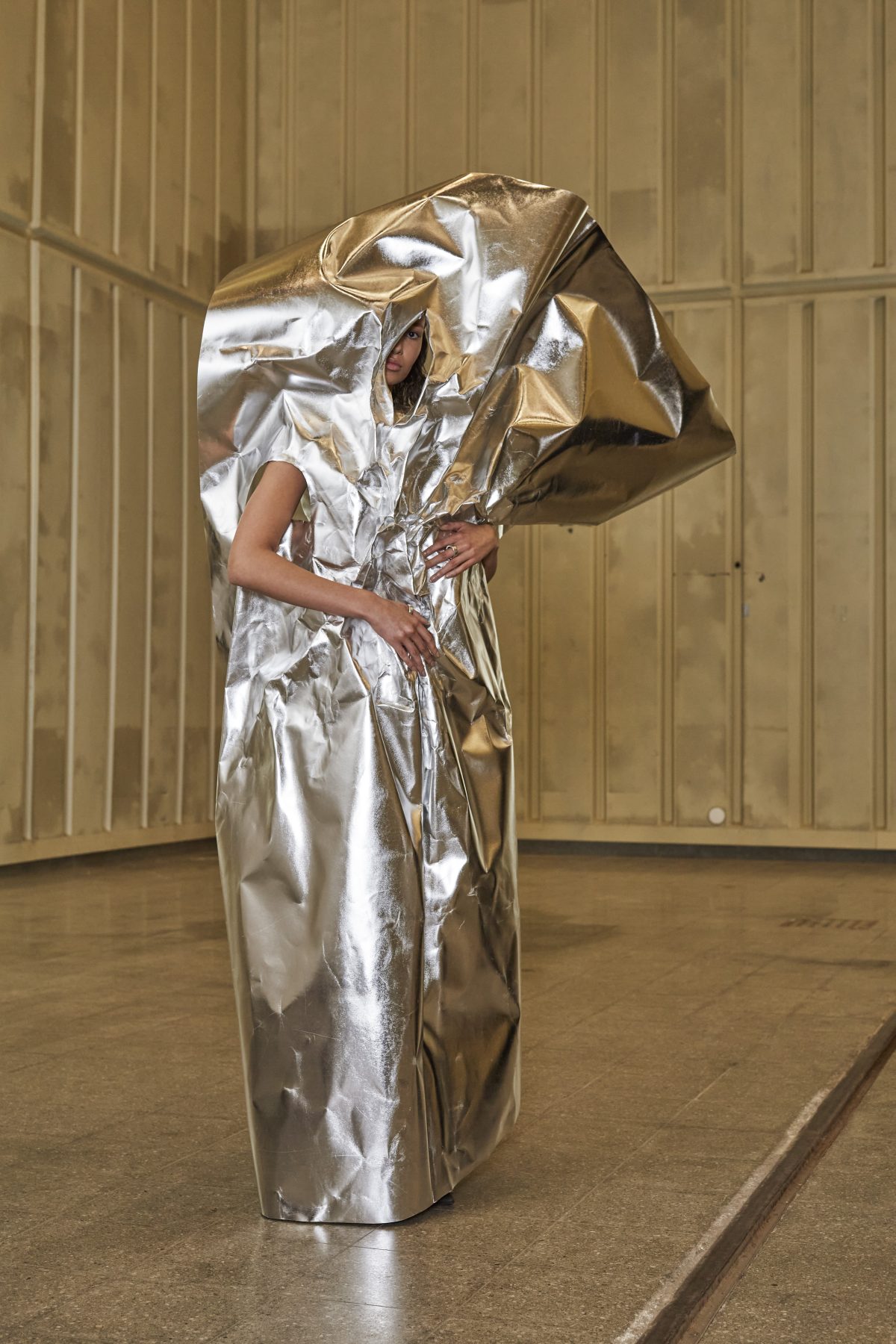 SV_07
SV_07

Sohvi Väänänen MA2 Graduate collection Photographer: Sofia Okkonen Model: Serena
SV_07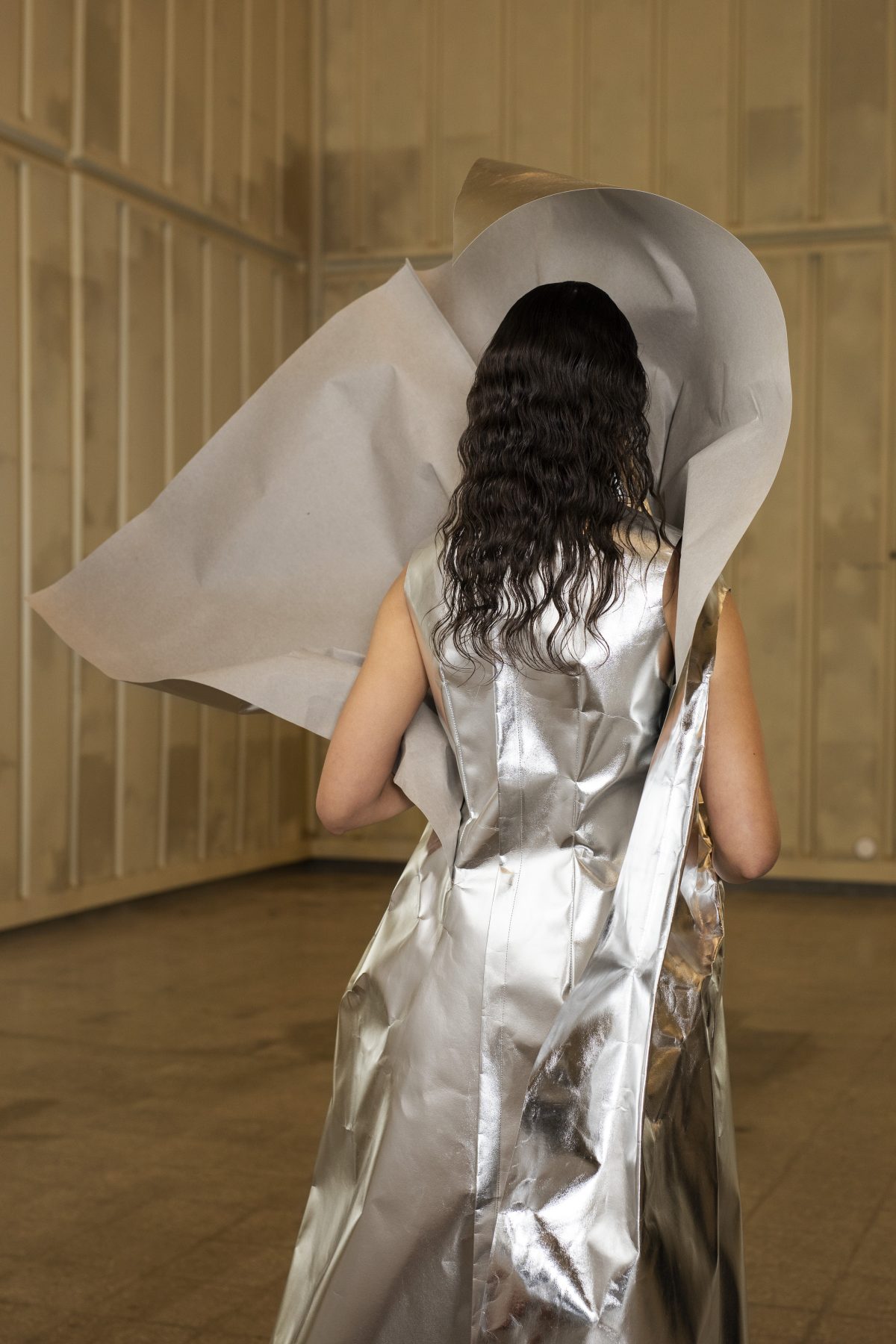 SV_08
SV_08

Sohvi Väänänen MA2 Graduate collection Photographer: Sofia Okkonen Model: Serena
SV_08Sohvi Väänänen’s MA collection utilises performance art and its’ methods in a fashion design process. The motivation behind the collection is in creating personal connection between the maker and the model, finding ways to be more present in the current moment as well as creating new ways of generating ideas in a fashion design context.
The graduate collection consists of five looks from which each garment in the collection is created in improvised sessions with another person by manipulating material and draping it on a live body. The base of the sessions is a self-invented two stage pattern cutting method which’s aim is to create experiences with the other person rather than purchasable products. As a result, the collection is pieced together from garments created in separate sessions. The designer was intrigued by the methodology of performance art, because of its characteristics of liveness and usage of the body as a tool as well as material. The body as well as its’ movement is a reoccurring source of inspiration in their work.
The inspiration behind the material choices was appreciating the ordinary things we already have; the mundane materials found in our domestic environments such as metal, plastic and paper. To support the collection accessories depicting replicas of the body were created from silver plated bronze which represent gestures of positive body language between people.
Susanna Saarikko
(ma)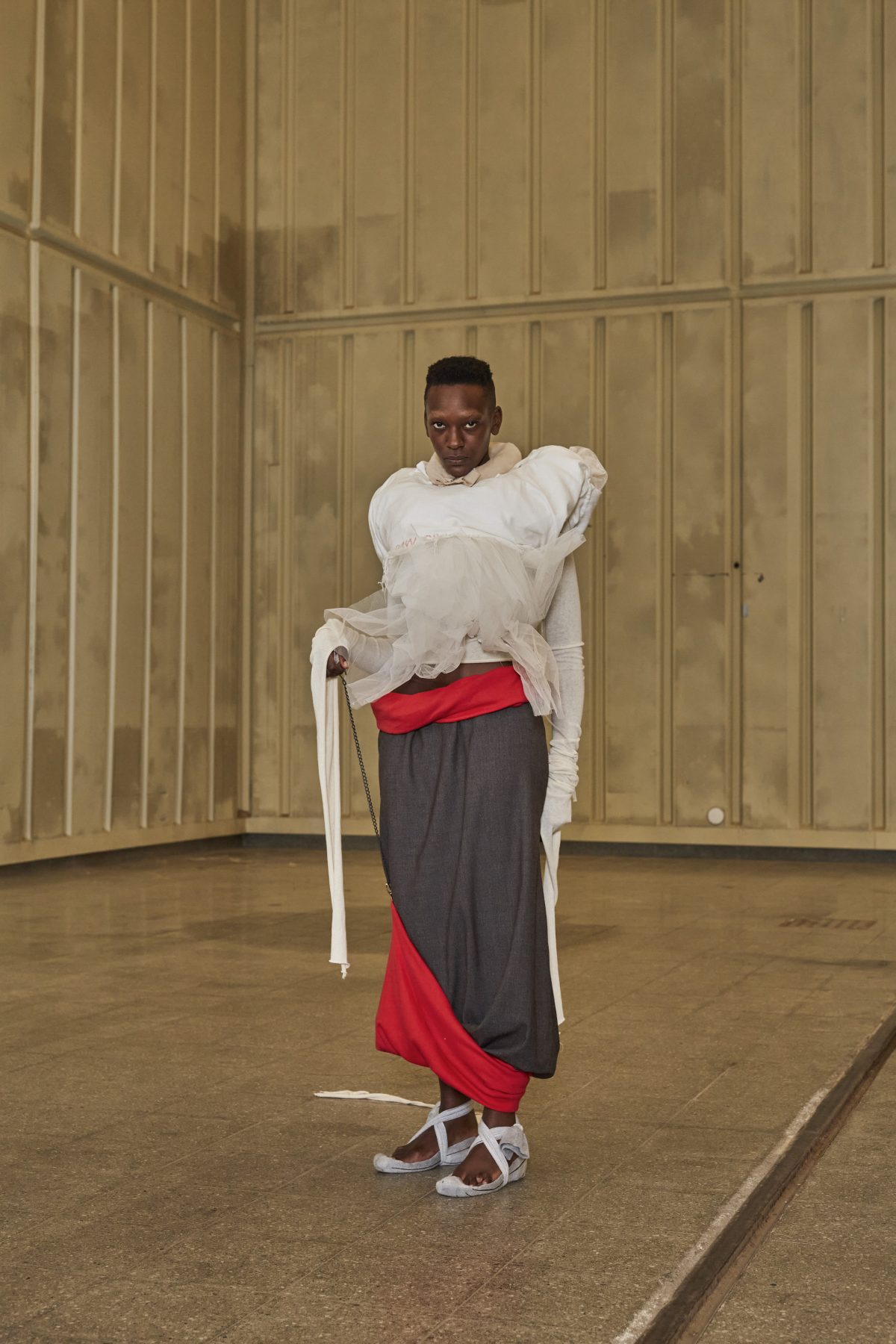 SS_01
SS_01

Susanna Saarikko MA2 Graduate collection Photographer: Sofia Okkonen Model: Marie
SS_01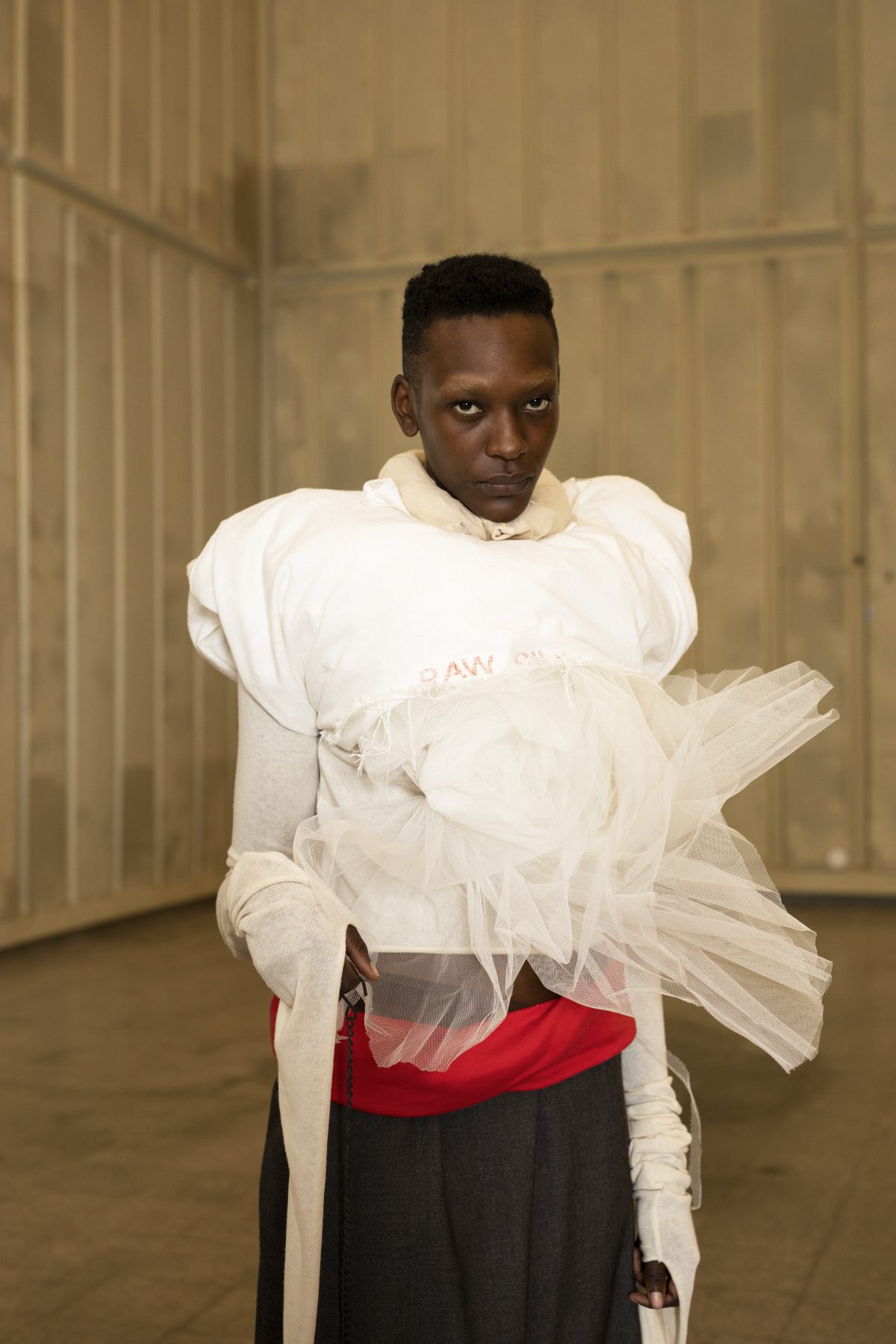 SS_02
SS_02

Susanna Saarikko MA2 Graduate collection Photographer: Sofia Okkonen Model: Marie
SS_02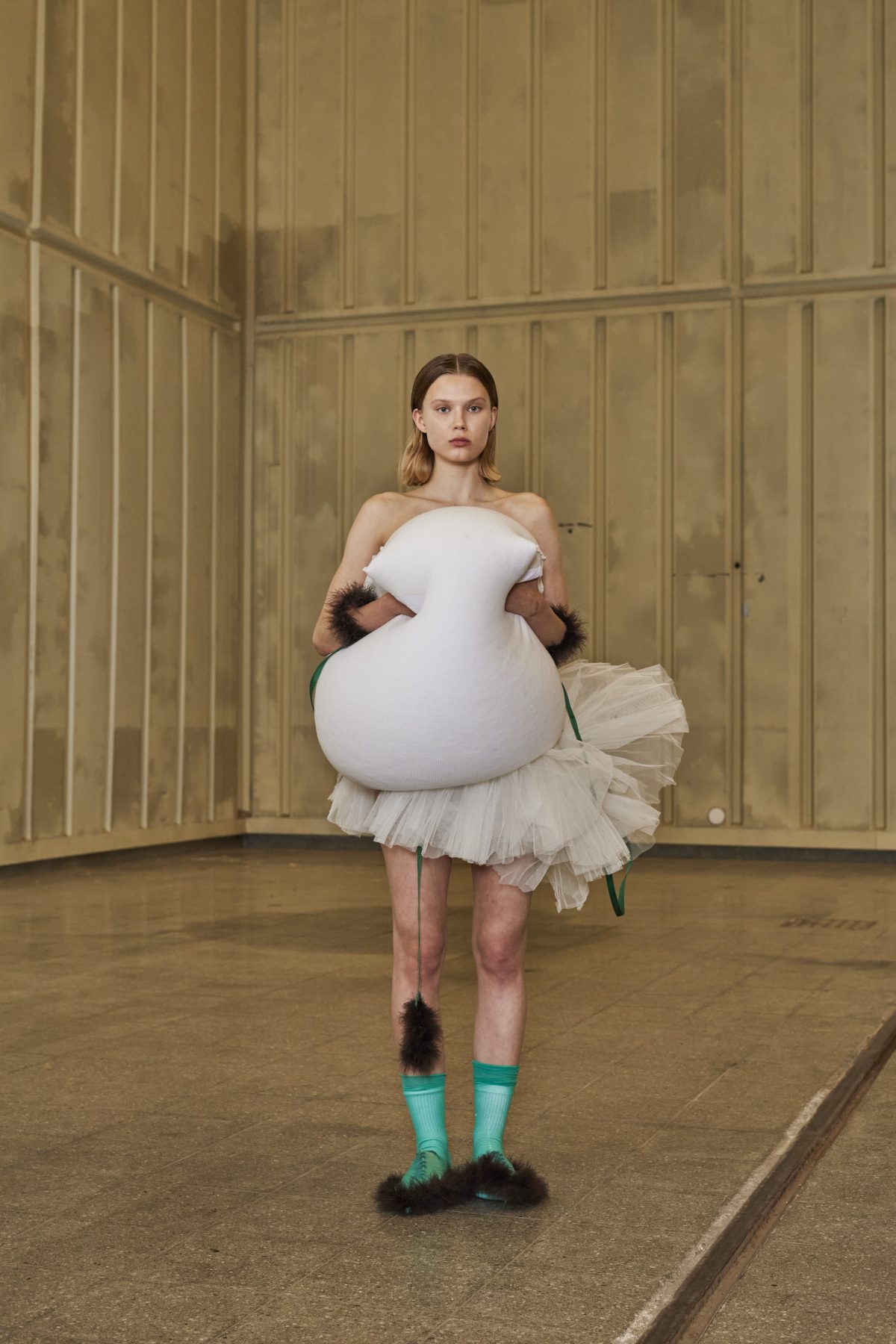 SS_03
SS_03

Susanna Saarikko MA2 Graduate collection Photographer: Sofia Okkonen Model: Isadora
SS_03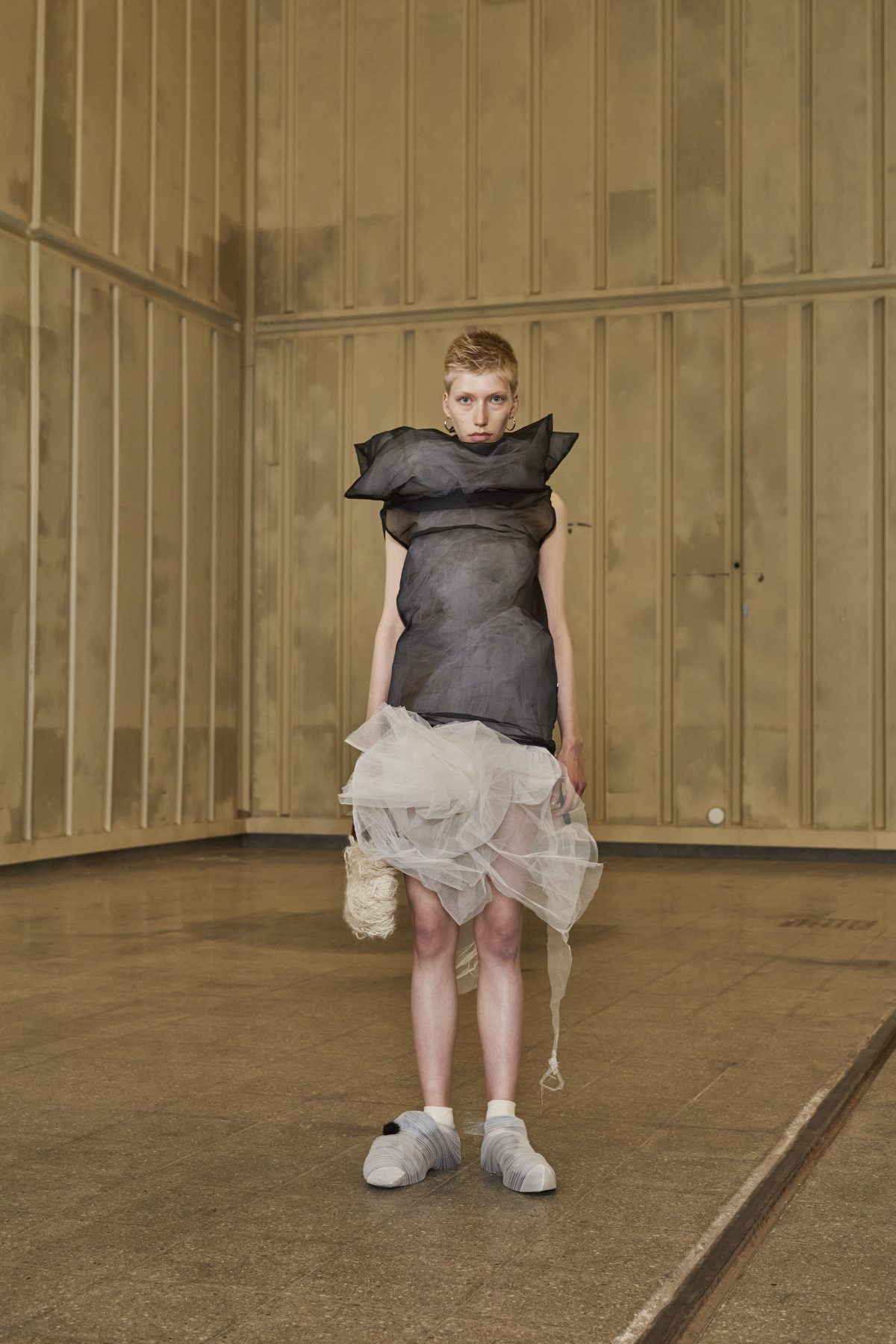 SS_04
SS_04

Susanna Saarikko MA2 Graduate collection Photographer: Sofia Okkonen Model: Annu
SS_04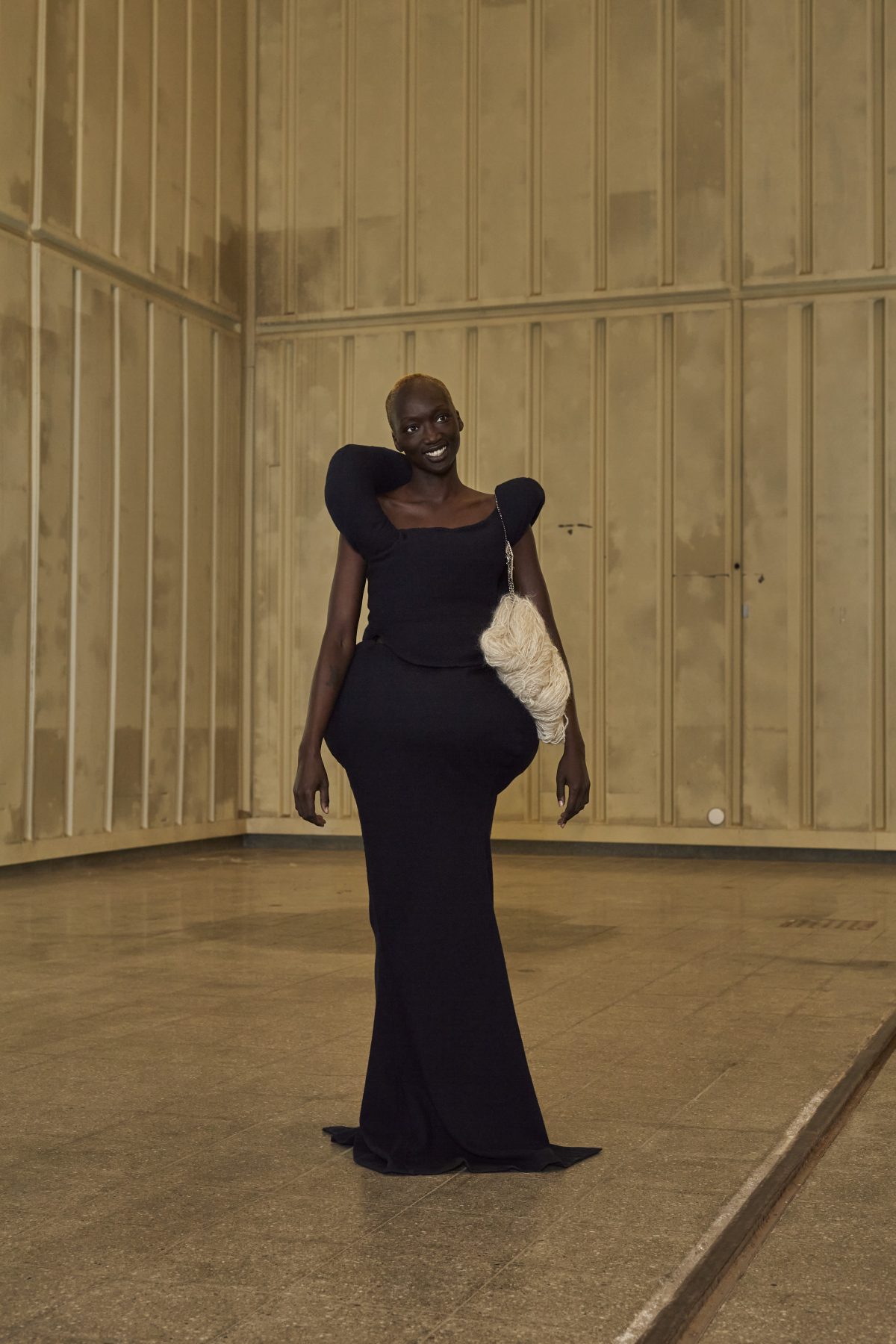 SS_05
SS_05

Susanna Saarikko MA2 Graduate collection Photographer: Sofia Okkonen Model: Ati
SS_05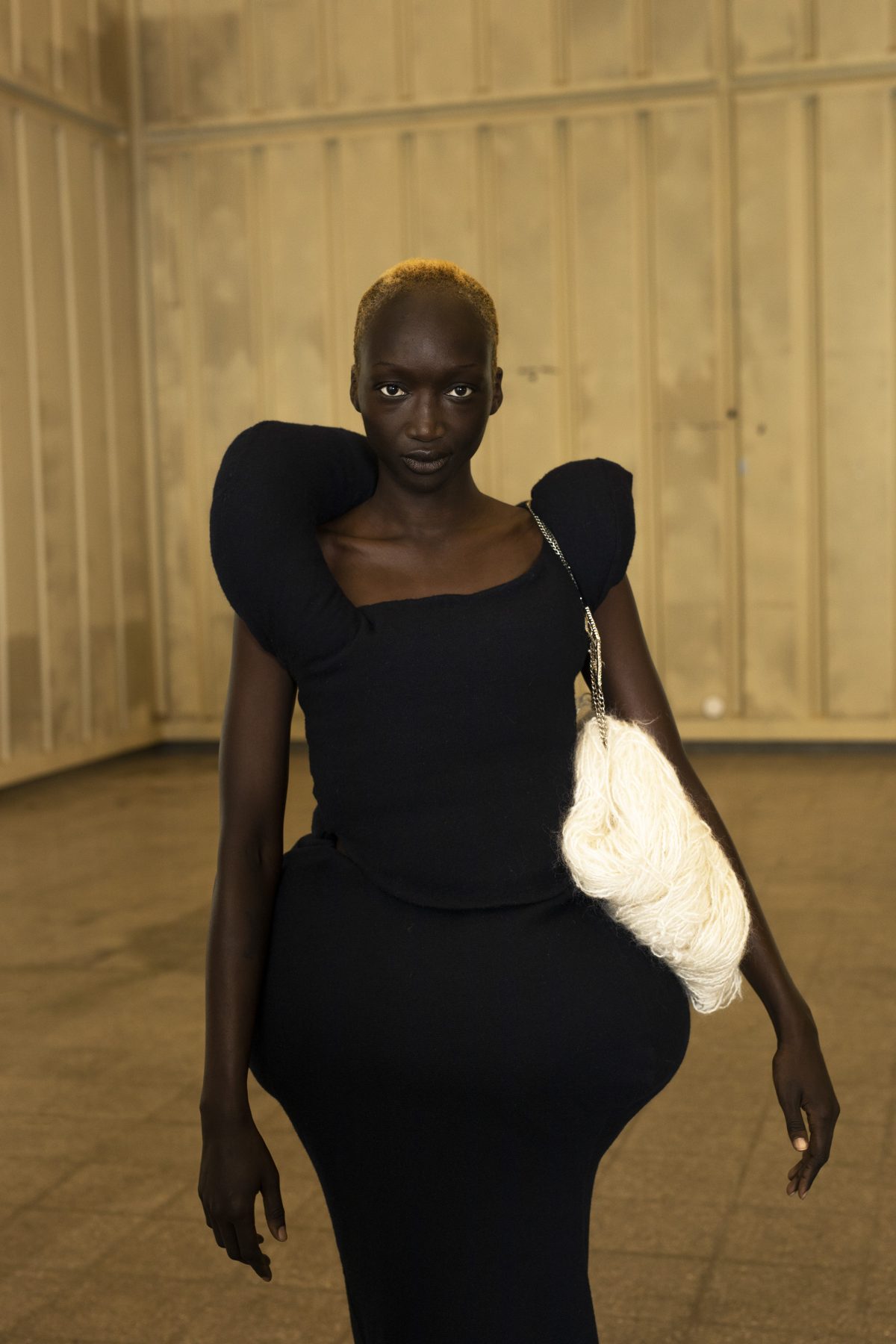 SS_06
SS_06

Susanna Saarikko MA2 Graduate collection Photographer: Sofia Okkonen Model: Ati
SS_06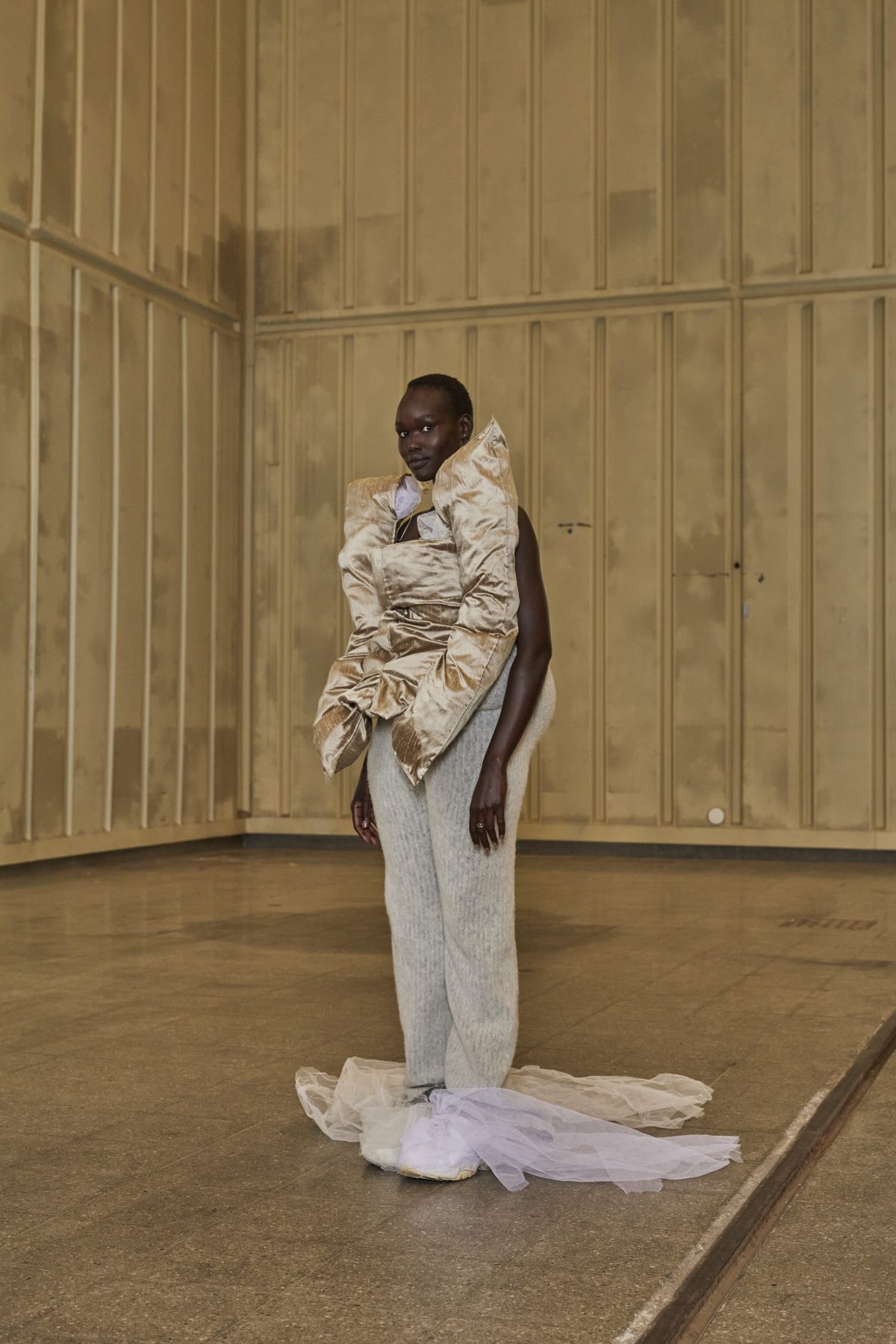 SS_07
SS_07

Susanna Saarikko MA2 Graduate collection Photographer: Sofia Okkonen Model: Monica
SS_07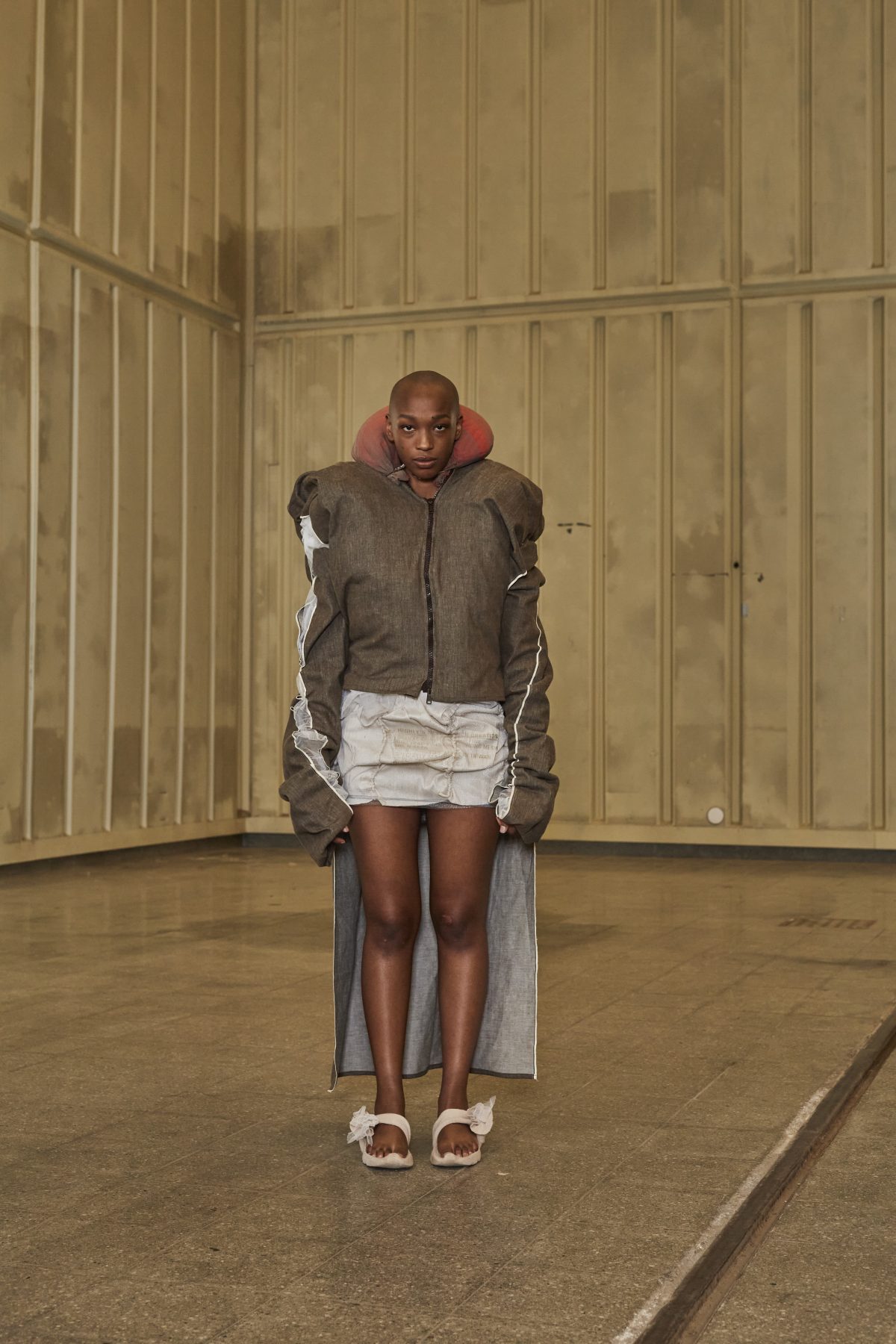 SS_08
SS_08

Susanna Saarikko MA2 Graduate collection Photographer: Sofia Okkonen Model: Kei
SS_08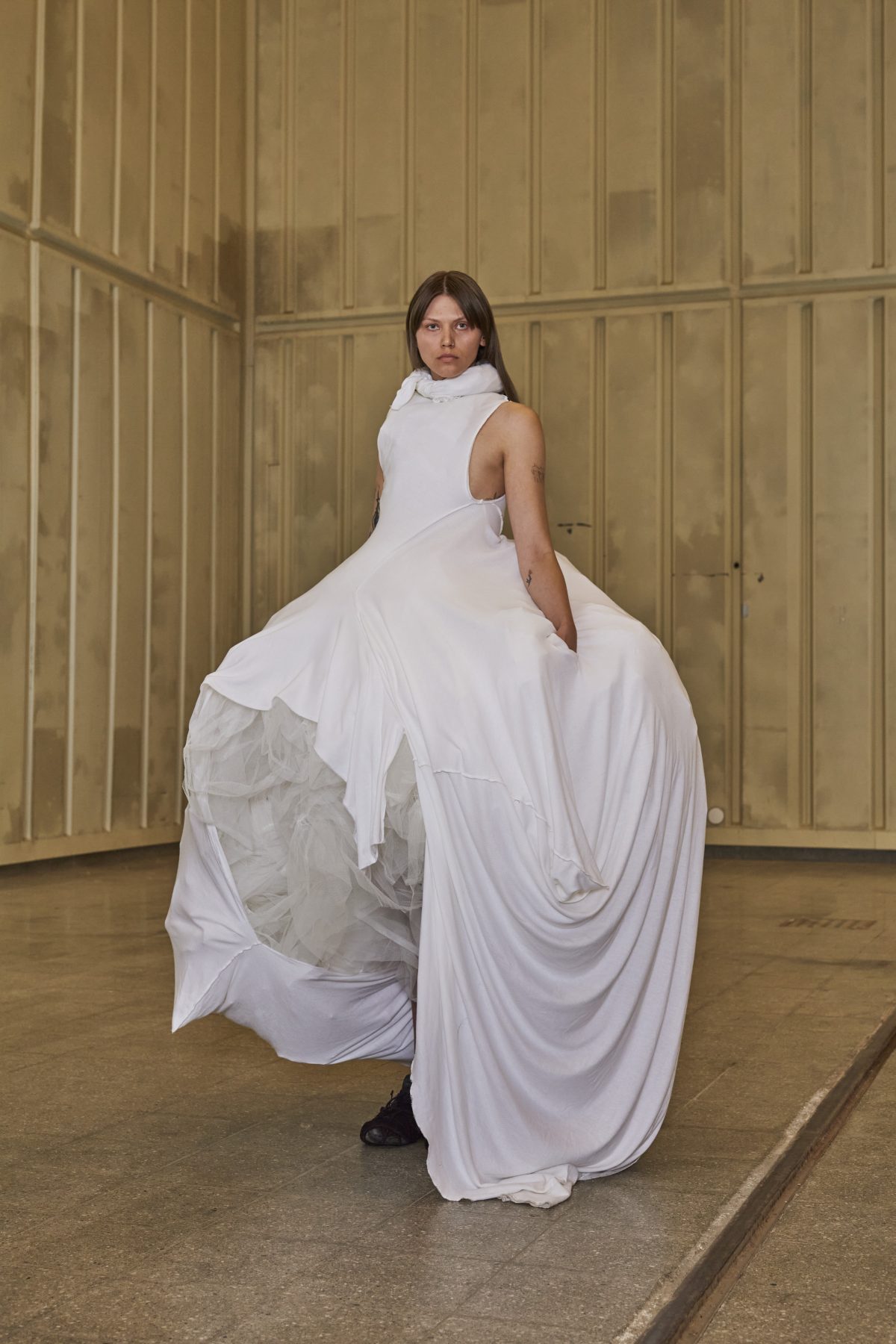 SS_09
SS_09

Susanna Saarikko MA2 Graduate collection Photographer: Sofia Okkonen Model: Viivi
SS_09– In this collection, I explore material’s possibility to shape the boundaries of the body. At the beginning of the project, I made a self-invented chair, which I ended up using as a tool to discuss the dynamics of space, movement or the lack of it, and the sensory experience in wearing a garment, Susanna Saarikko explains her MA-collection Since chair.
Saarikko combines experimental way of working was with a desire to shape already existing materials, found, or received. She explores garment making using sculptural methods. At the beginning of the project, Saarikko made a self-invented chair, which she ended up using as a tool to discuss the dynamics of space, movement or the lack thereof, and the sensory experience of wearing a garment.
– My experimental way of working was combined with my desire to shape already existing materials. By eagerly observing the material and its potential, the result is based on a continuous dialogue with the garment.
Saarikko says that the body of the wearer sculpts the garment. Soft materials and airy filling are wearer-friendly and by contrast, tulle against the skin the opposite. The garments return the wearer to the physical, surrounding reality, just as the chair positioned her from the role of designer to the role of the wearer.
Valentin Schwarz
(ma)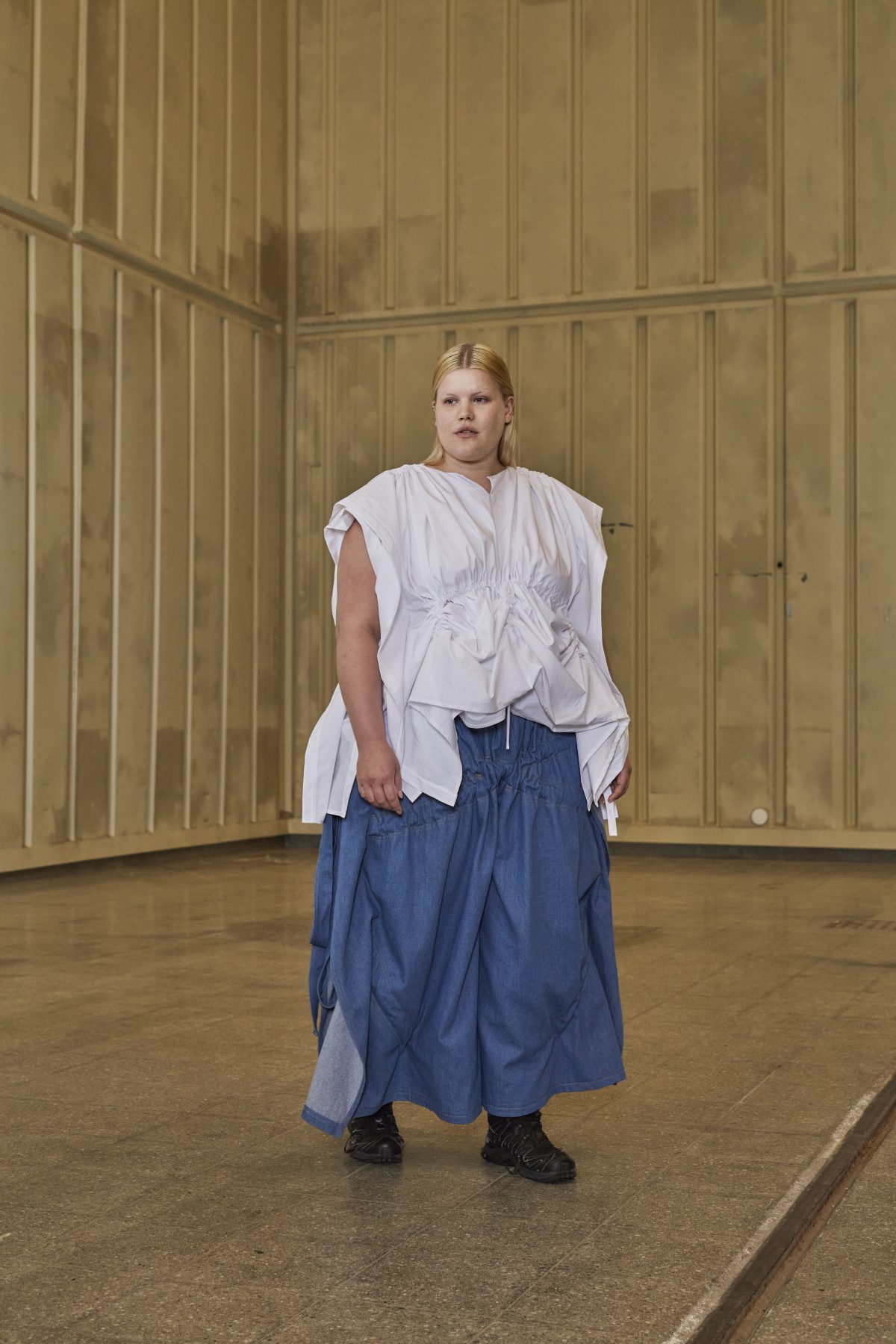 VS_01
VS_01

Valentin Schwarz MA2 Graduate collection Photographer: Sofia Okkonen Model: Linda
VS_01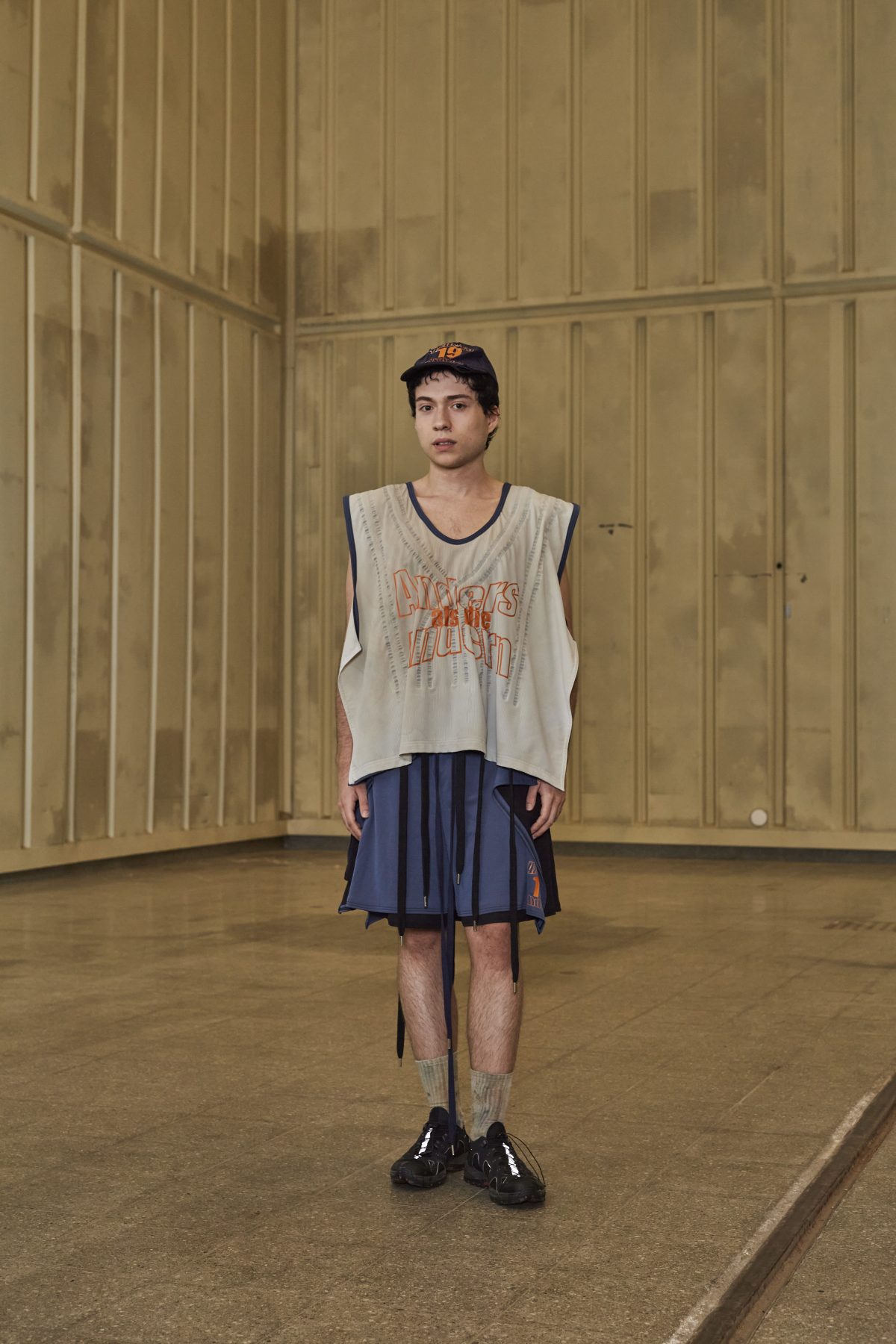 VS_02
VS_02

Valentin Schwarz MA2 Graduate collection Photographer: Sofia Okkonen Model: Miguel
VS_02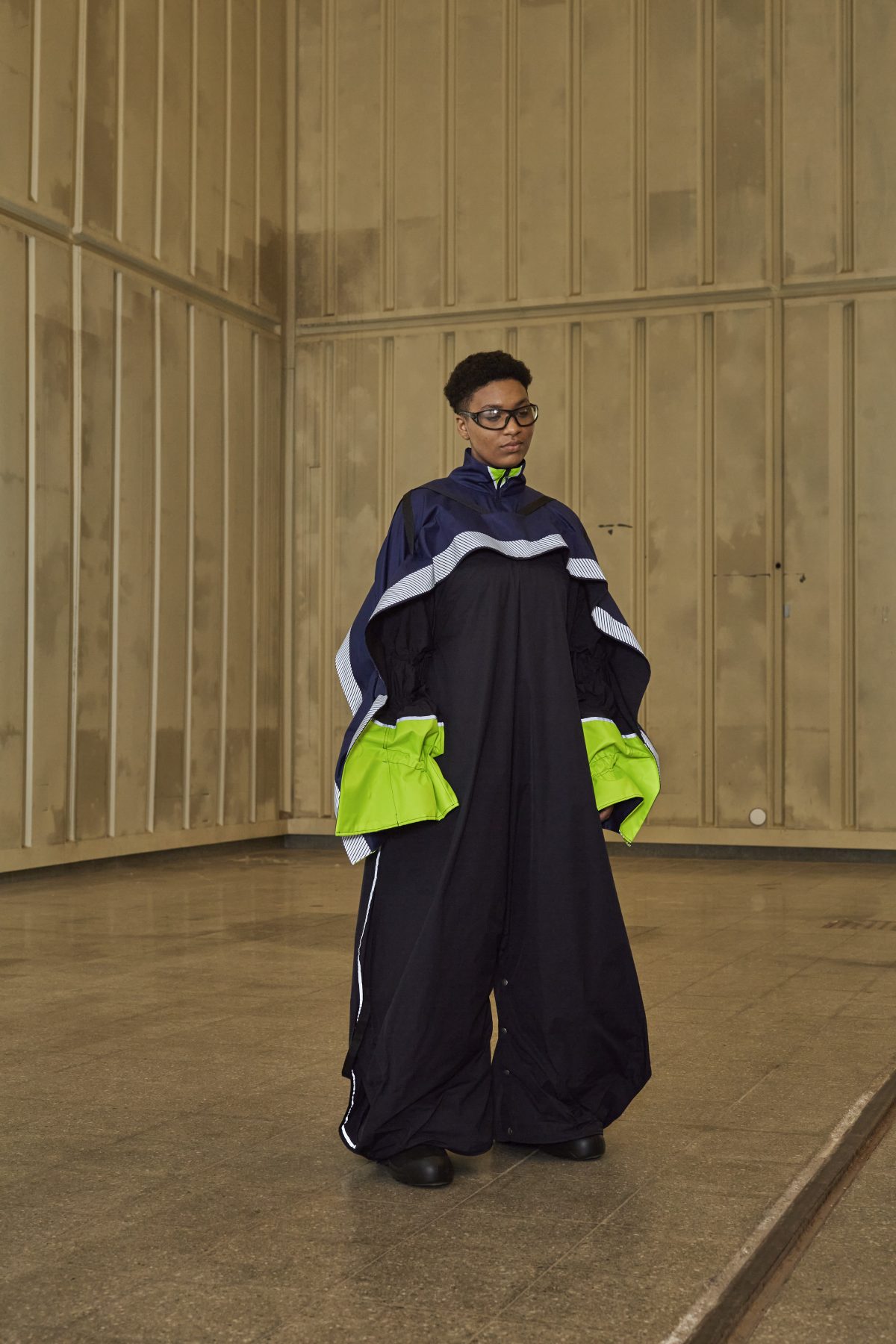 VS_03
VS_03

Valentin Schwarz MA2 Graduate collection Photographer: Sofia Okkonen Model: Kai
VS_03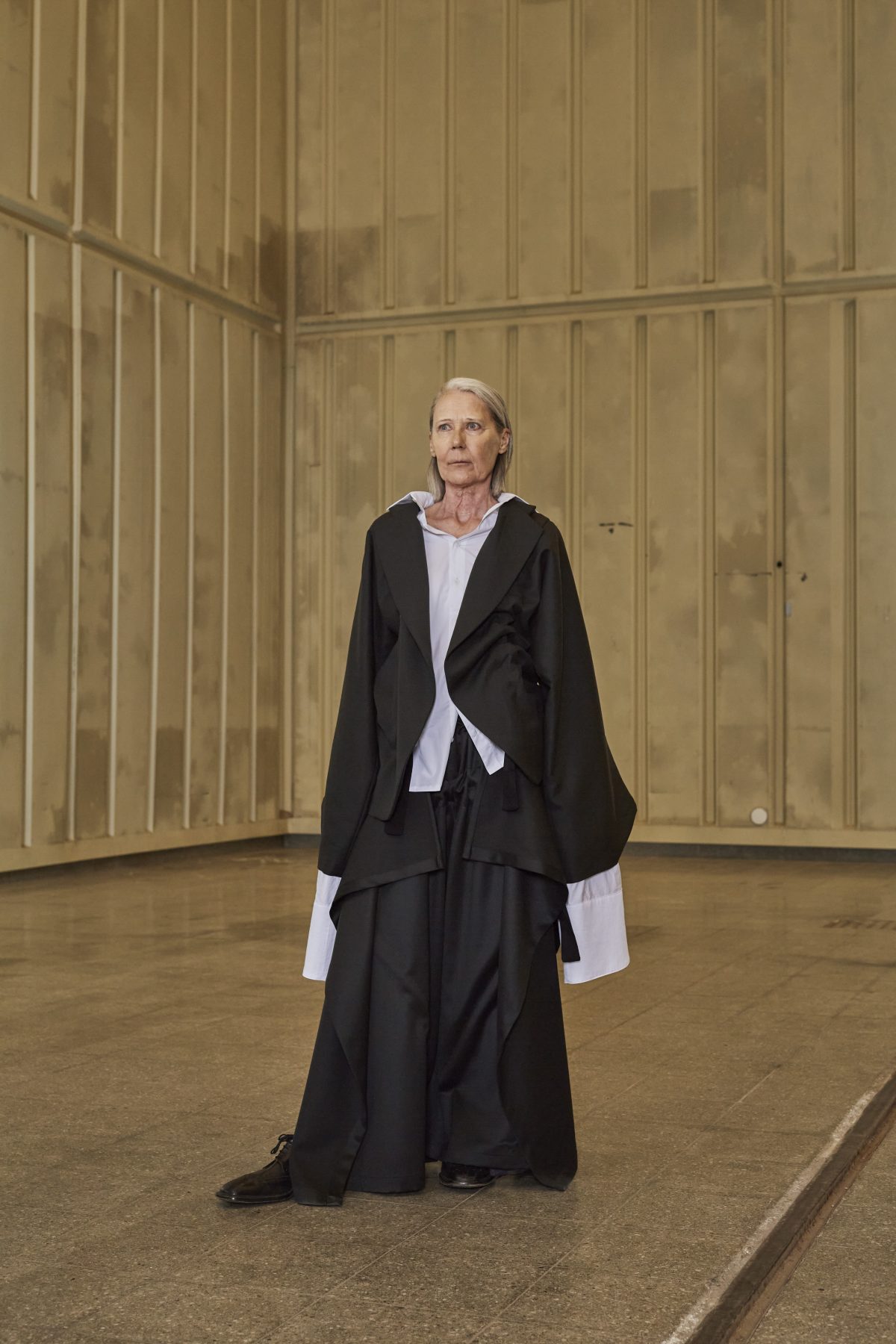 VS_04
VS_04

Valentin Schwarz MA2 Graduate collection Photographer: Sofia Okkonen Model: Tuula
VS_04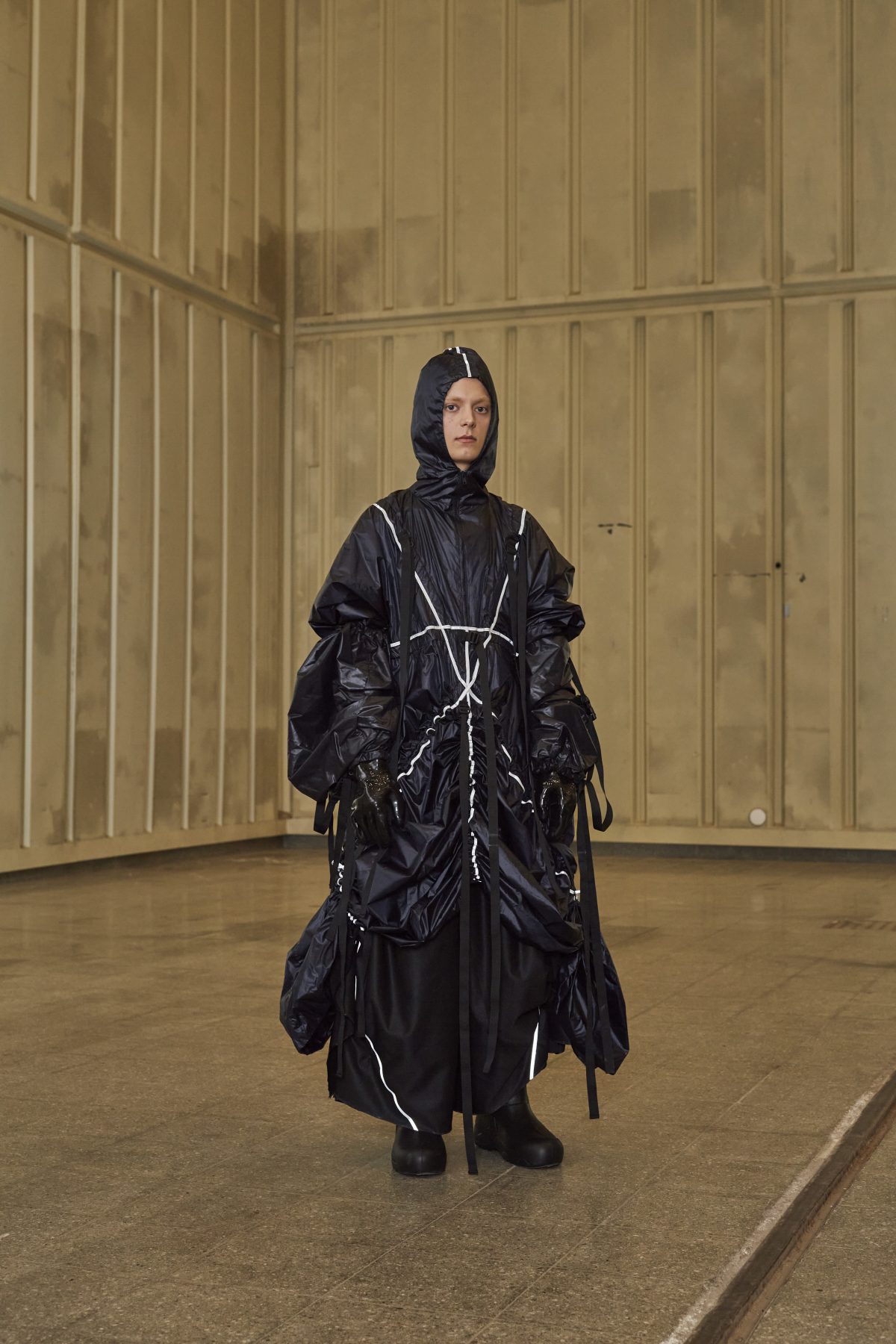 VS_05
VS_05

Valentin Schwarz MA2 Graduate collection Photographer: Sofia Okkonen Model: Oscar
VS_05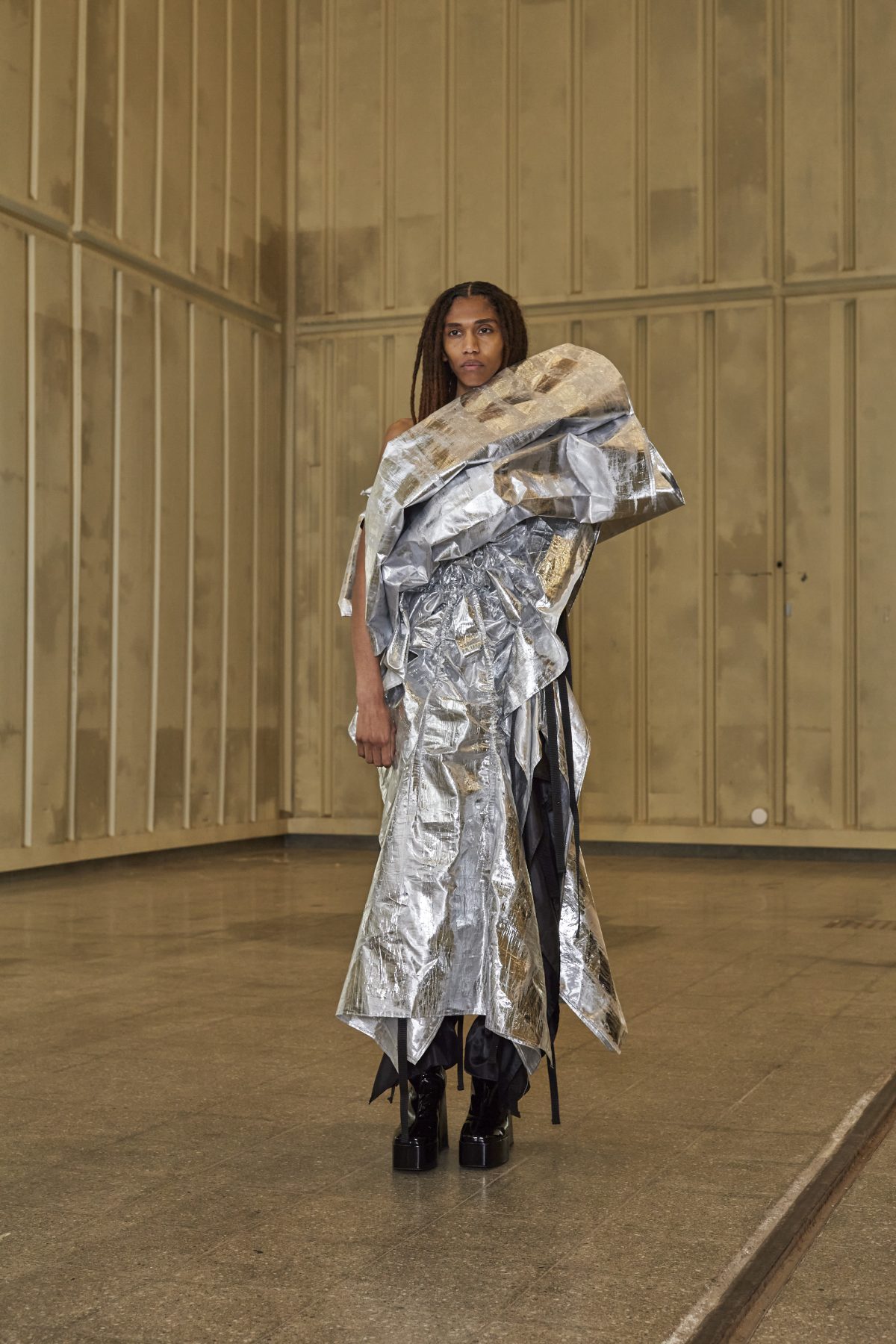 VS_06
VS_06

Valentin Schwarz MA2 Graduate collection Photographer: Sofia Okkonen Model: Jarrah
VS_06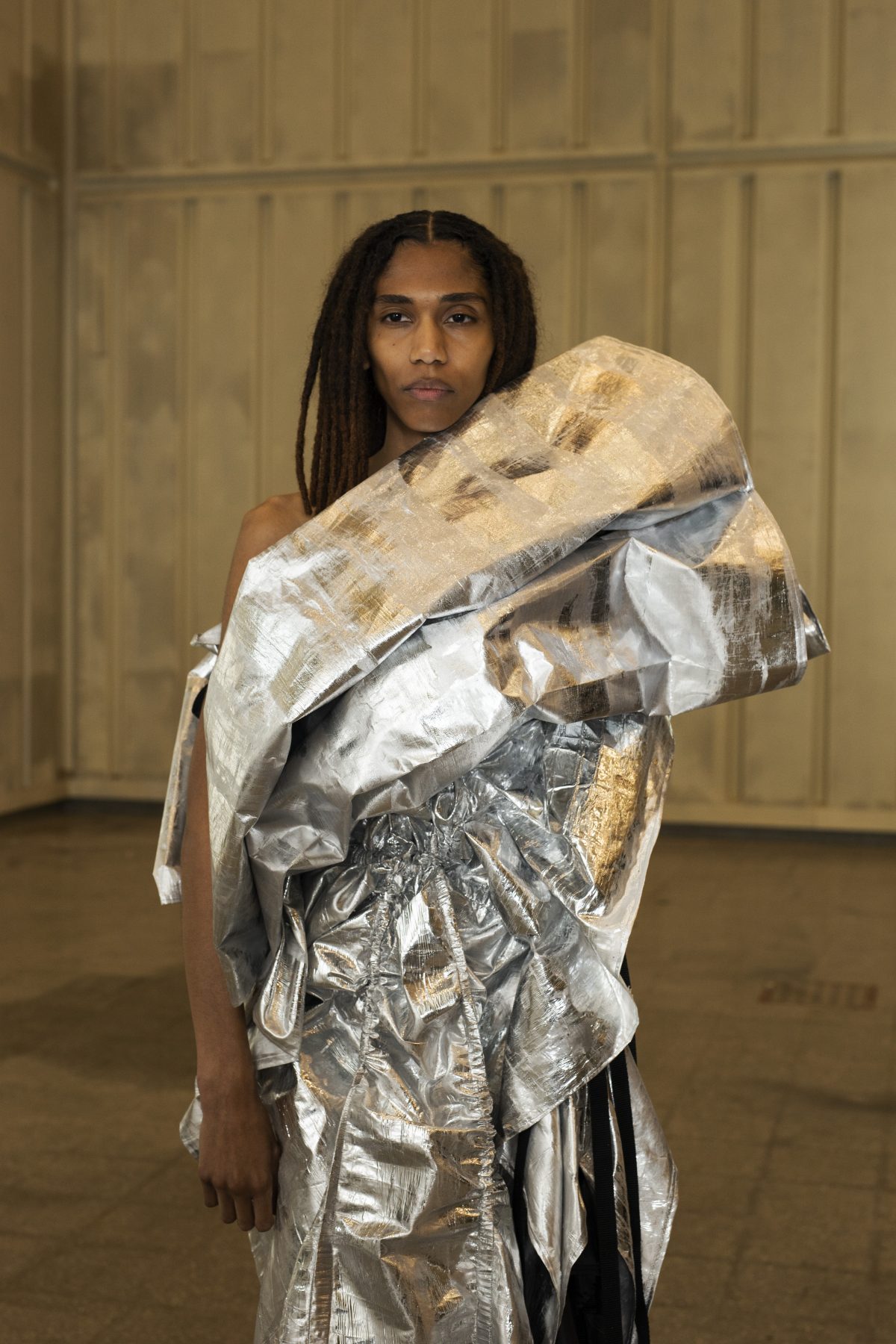 VS_07
VS_07

Valentin Schwarz MA2 Graduate collection Photographer: Sofia Okkonen Model: Jarrah
VS_07“Everyone’s body is changing throughout their life, this is especially true for trans people. What if our clothes could change with us?”
– Valentin Schwarz
I went from having a chest size F to completely flat. I went from having fat on my hips to having fat on my belly. I got wider shoulders than before and thinner thighs. I am a trans man. My body is finally morphing into something I recognise when I look in the mirror. Transitioning was the best and hardest thing I have ever done for myself.
The fashion designer in me started to wonder; would it have been possible for my clothes to morph with me? For them to go from being loose on the chest to tight? For them to be looser on my shoulders? For them to go from normative to queer? What if I didn’t have to throw garments out for not fitting anymore?
This collection is an experiment bending the rules of tailoring and gender norms. The patterning technique I developed was inspired by the way bondage works; the ropes can fit any human body. I realized that the ropes can be used to create a “map” on two sheets of fabric that I can follow, this becomes a tunnel for the rope. As a result the garments can be adjusted in length, width, fit and style to accommodate the changes of the body or mood.
The line-up consists of six looks, each representing and twisting stereotypical gender roles; the wine mom, the basketball dad, the construction worker, the fisherman, man in suit and woman in ball gown.
Ps. The title of the collection is a tribute to Magnus Hirschfeld, who’s research on queer people would have been ground breaking if the Nazis didn’t burn it all in 1930. Let’s not allow something like that to happen again.
Ruusa Vuori
(ba)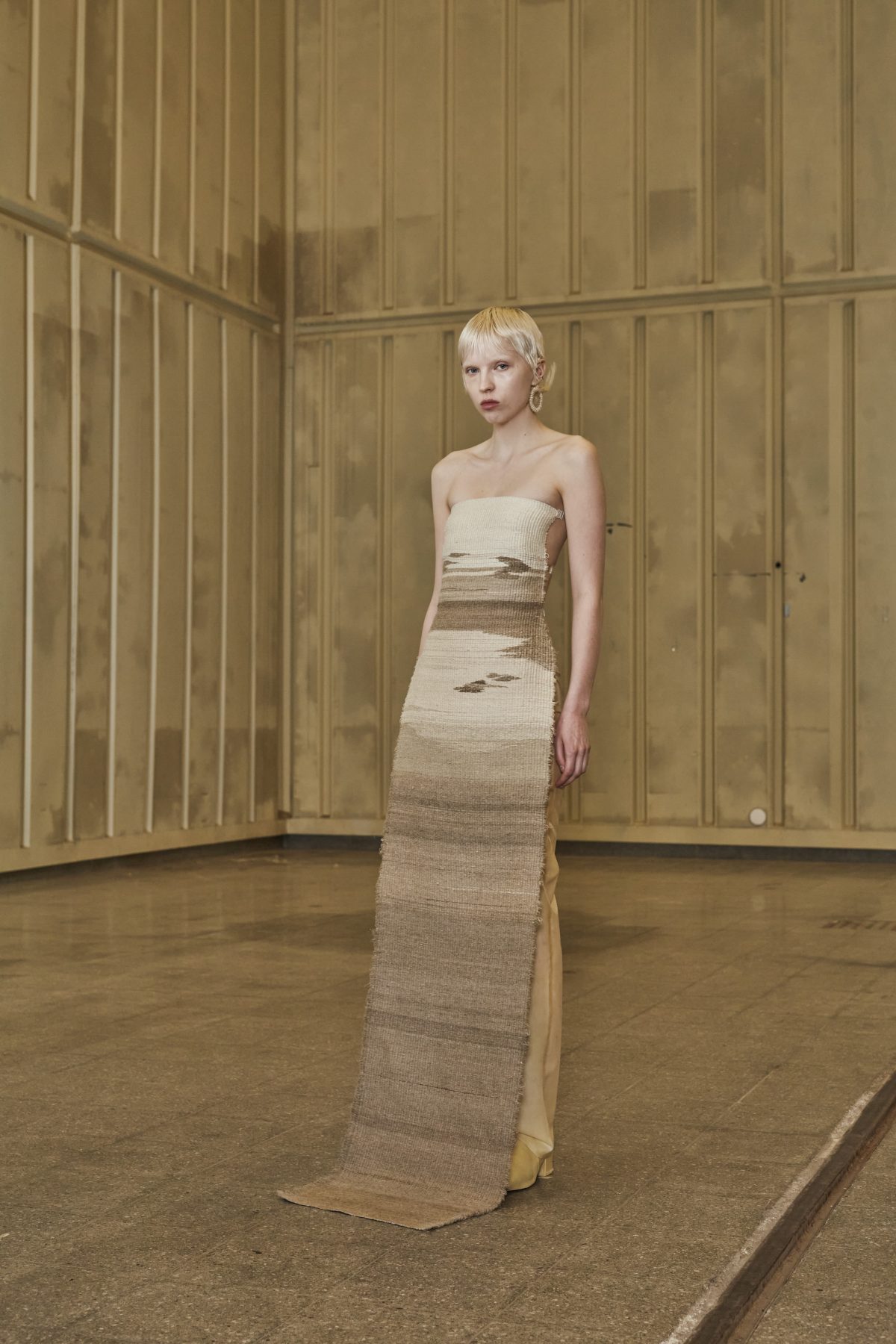 RV_01
RV_01

Ruusa Vuori BA3 Graduate collection Photographer: Sofia Okkonen Model: Katariina
RV_01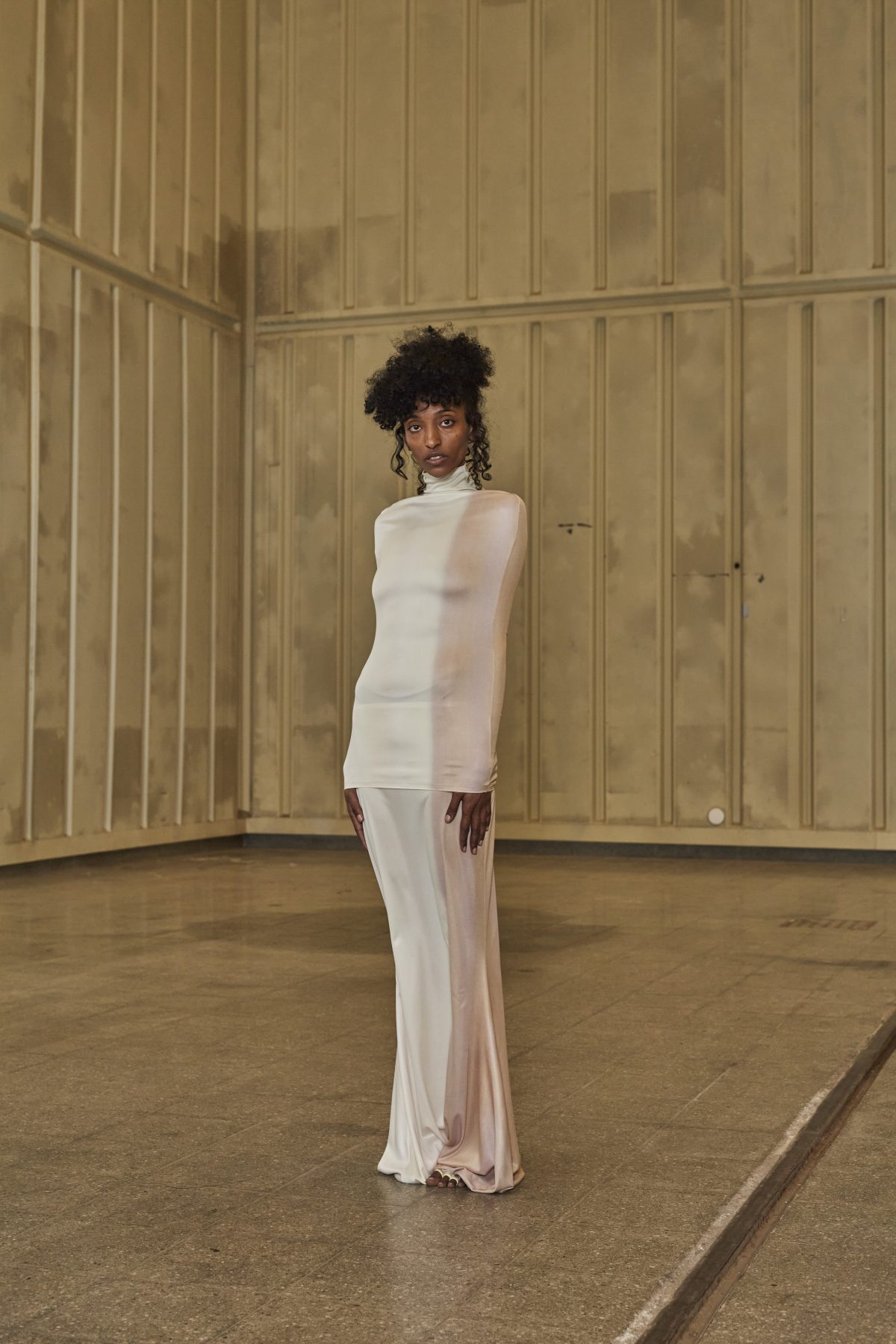 RV_02
RV_02

Ruusa Vuori BA3 Graduate collection Photographer: Sofia Okkonen Model: Erina
RV_02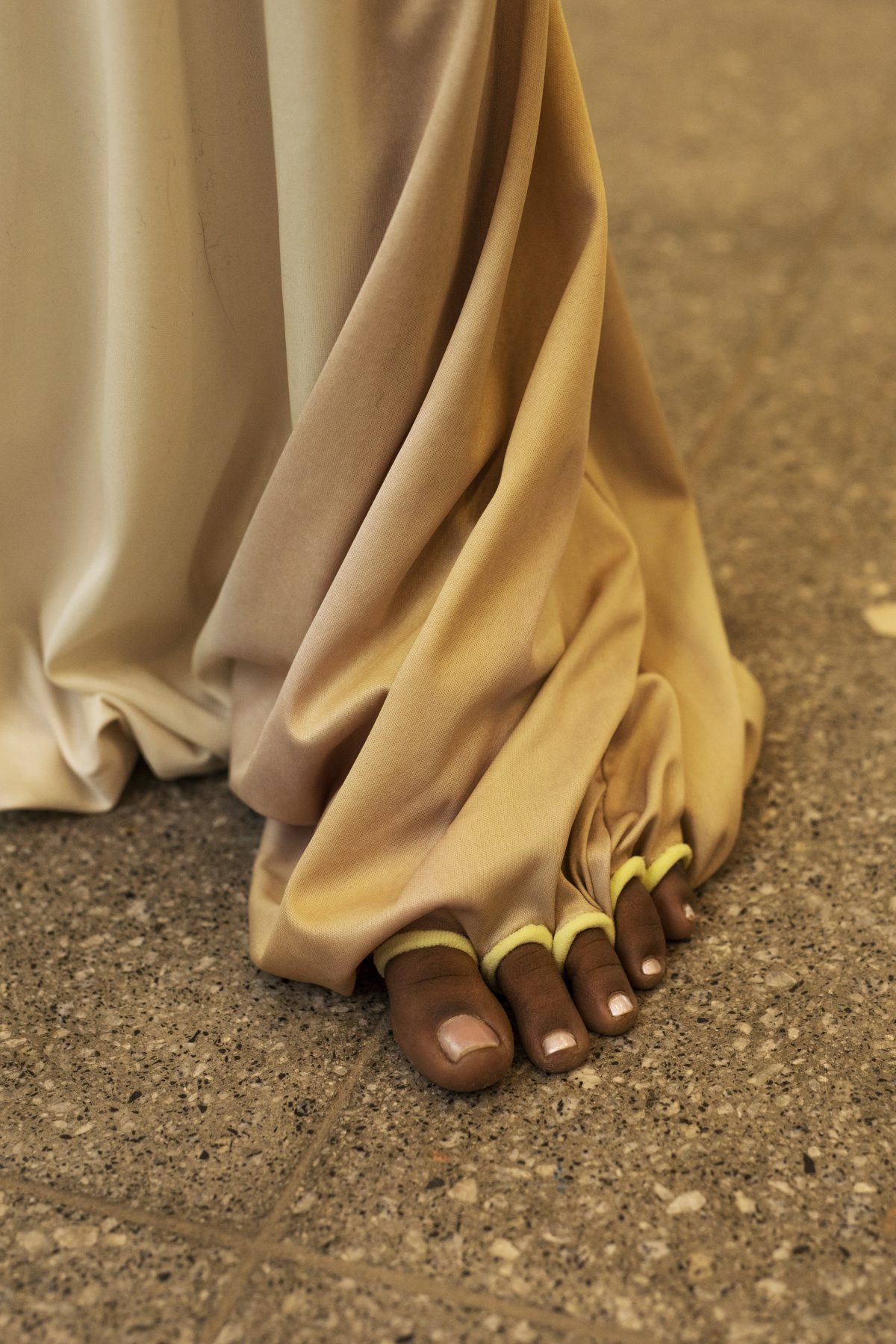 RV_03
RV_03

Ruusa Vuori BA3 Graduate collection Photographer: Sofia Okkonen Model: Erina
RV_03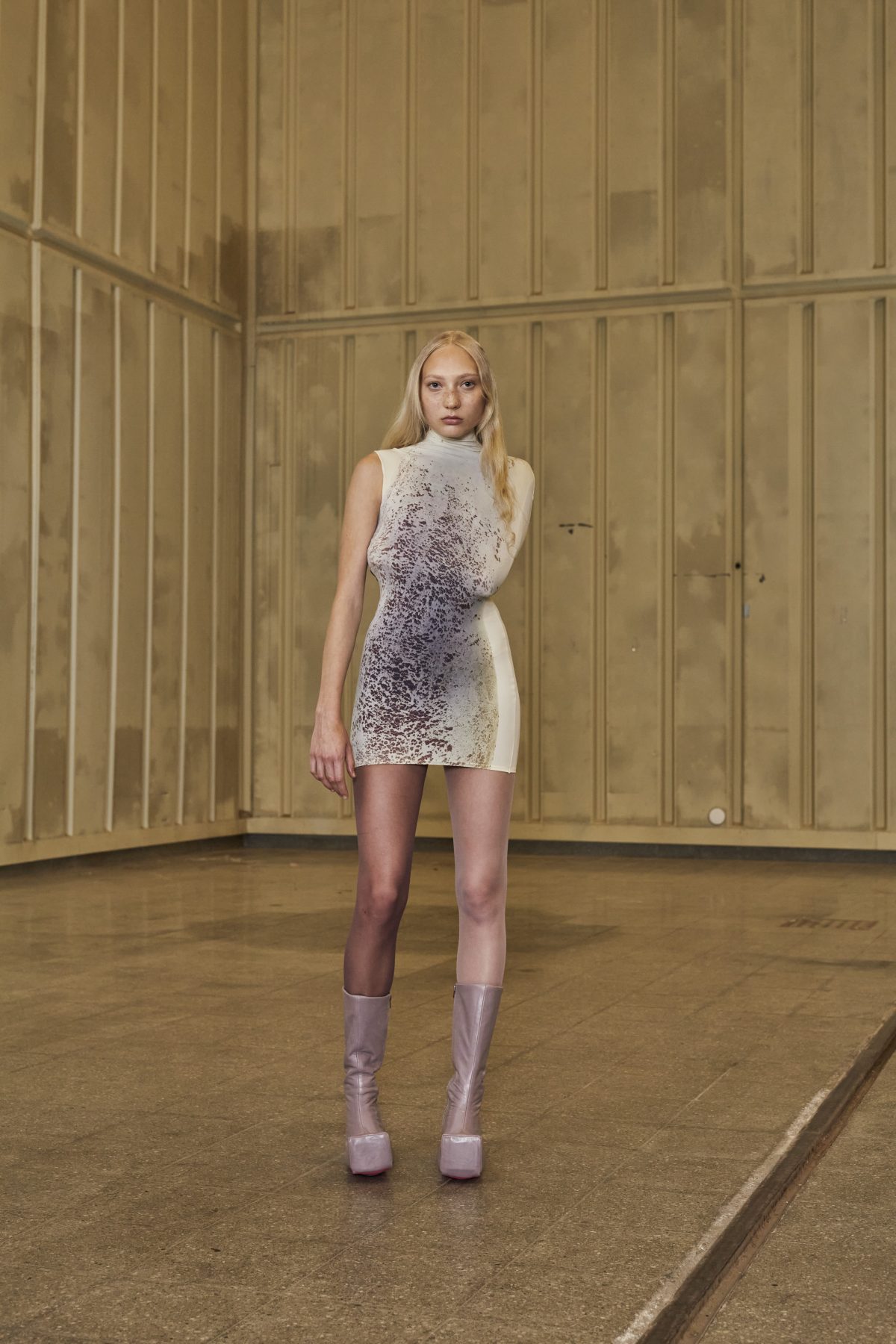 RV_04
RV_04

Ruusa Vuori BA3 Graduate collection Photographer: Sofia Okkonen Model: Stefania
RV_04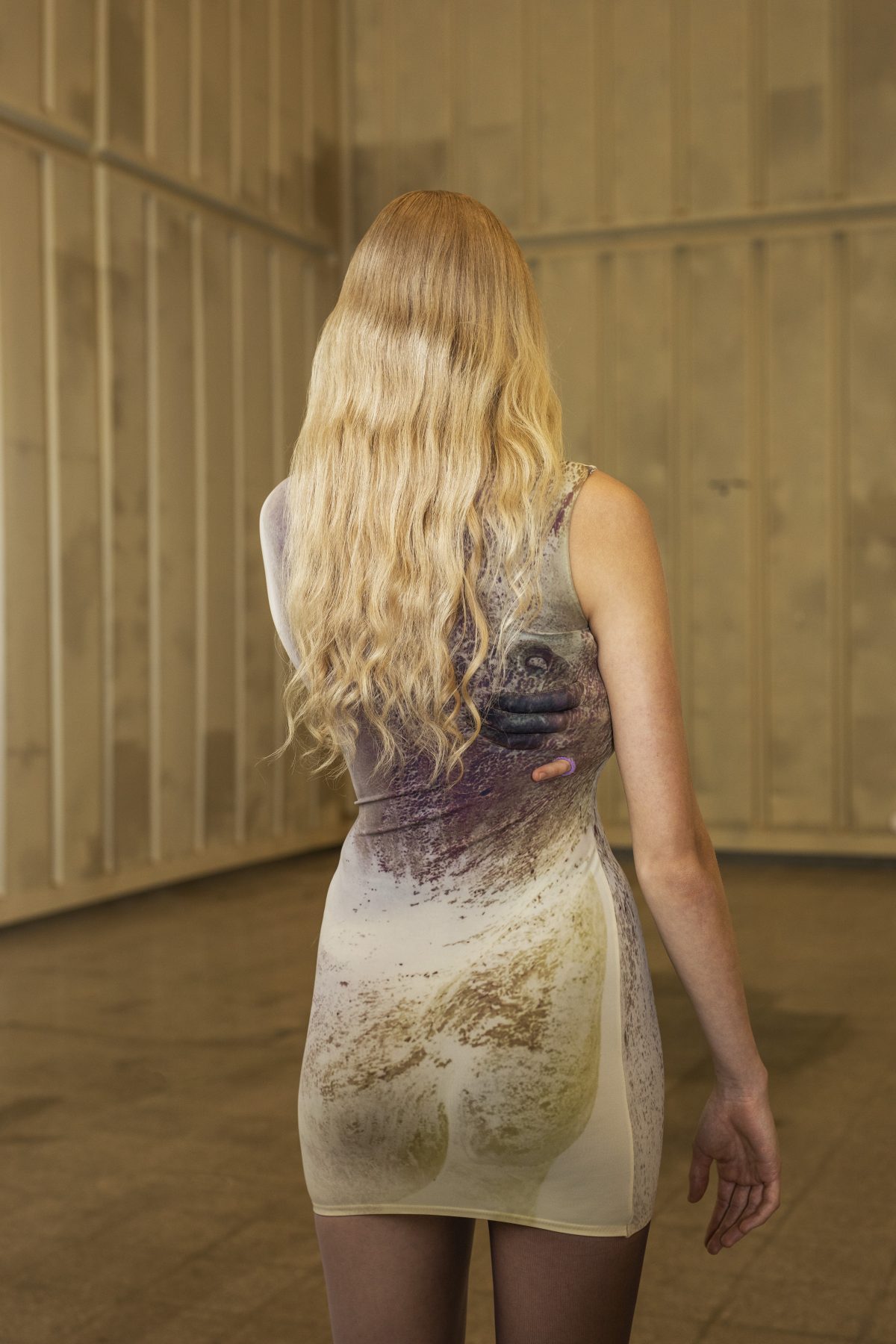 RV_05
RV_05

Ruusa Vuori BA3 Graduate collection Photographer: Sofia Okkonen Model: Stefania
RV_05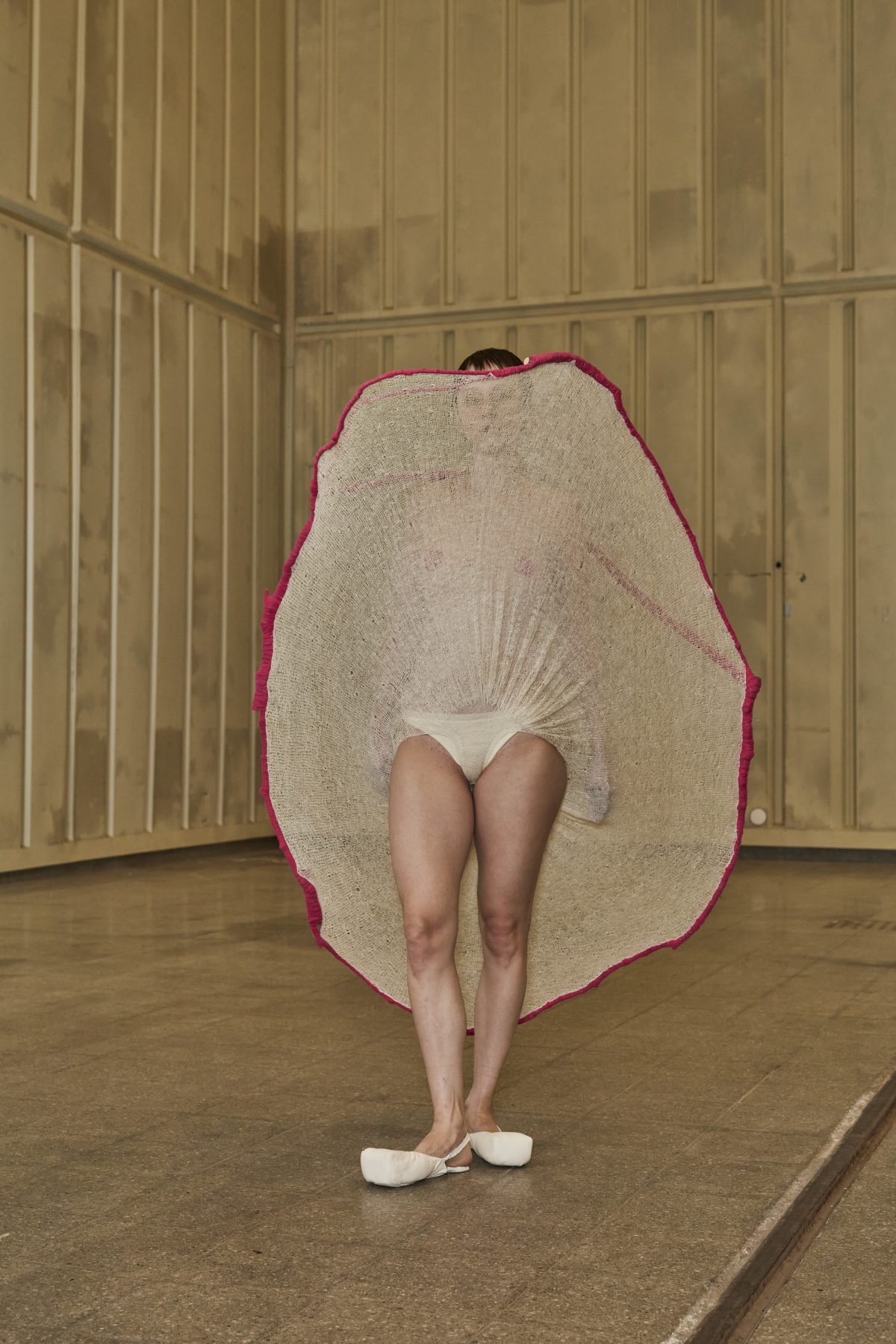 RV_06
RV_06

Ruusa Vuori BA3 Graduate collection Photographer: Sofia Okkonen Model: Maya
RV_06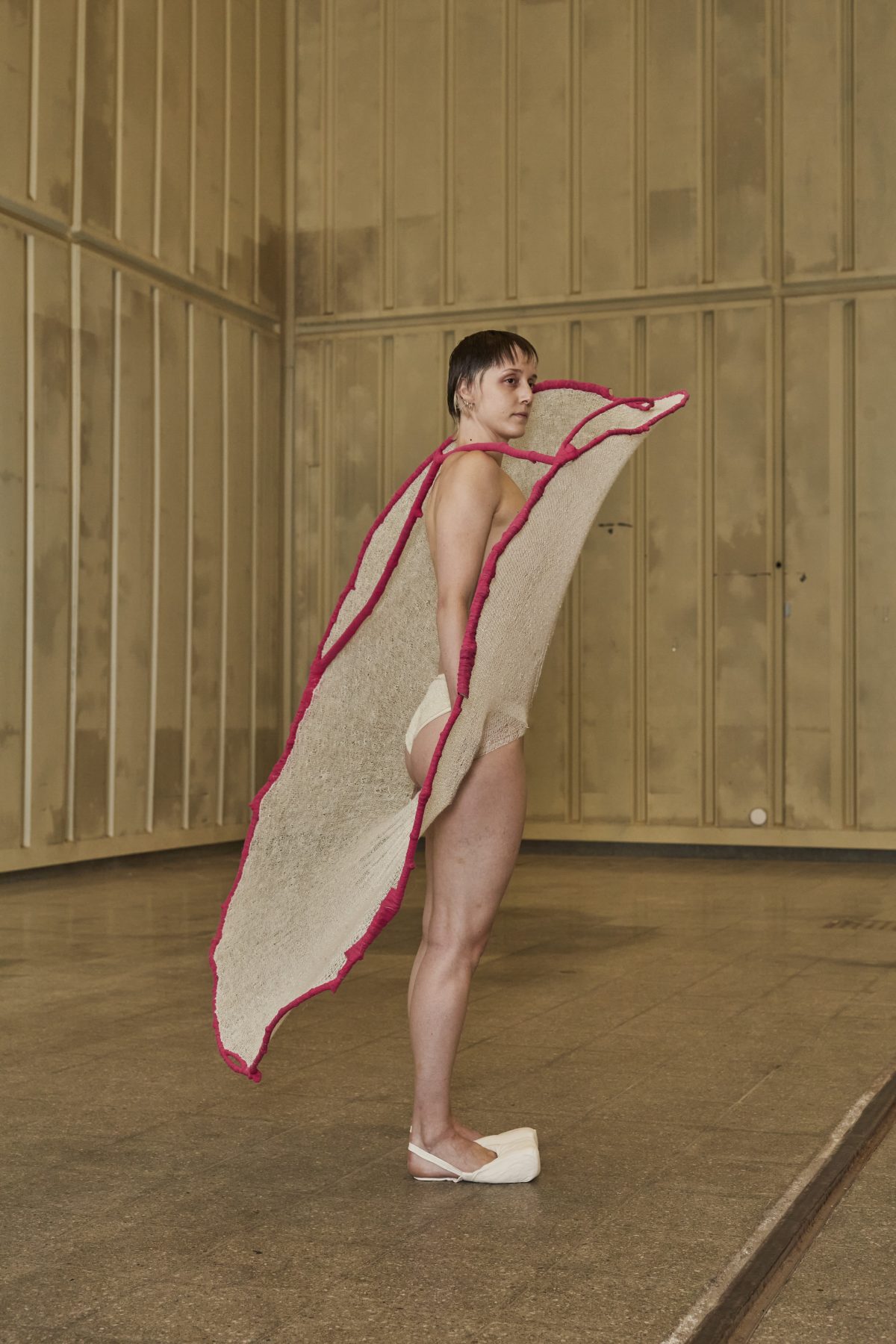 RV_07
RV_07

Ruusa Vuori BA3 Graduate collection Photographer: Sofia Okkonen Model: Maya
RV_07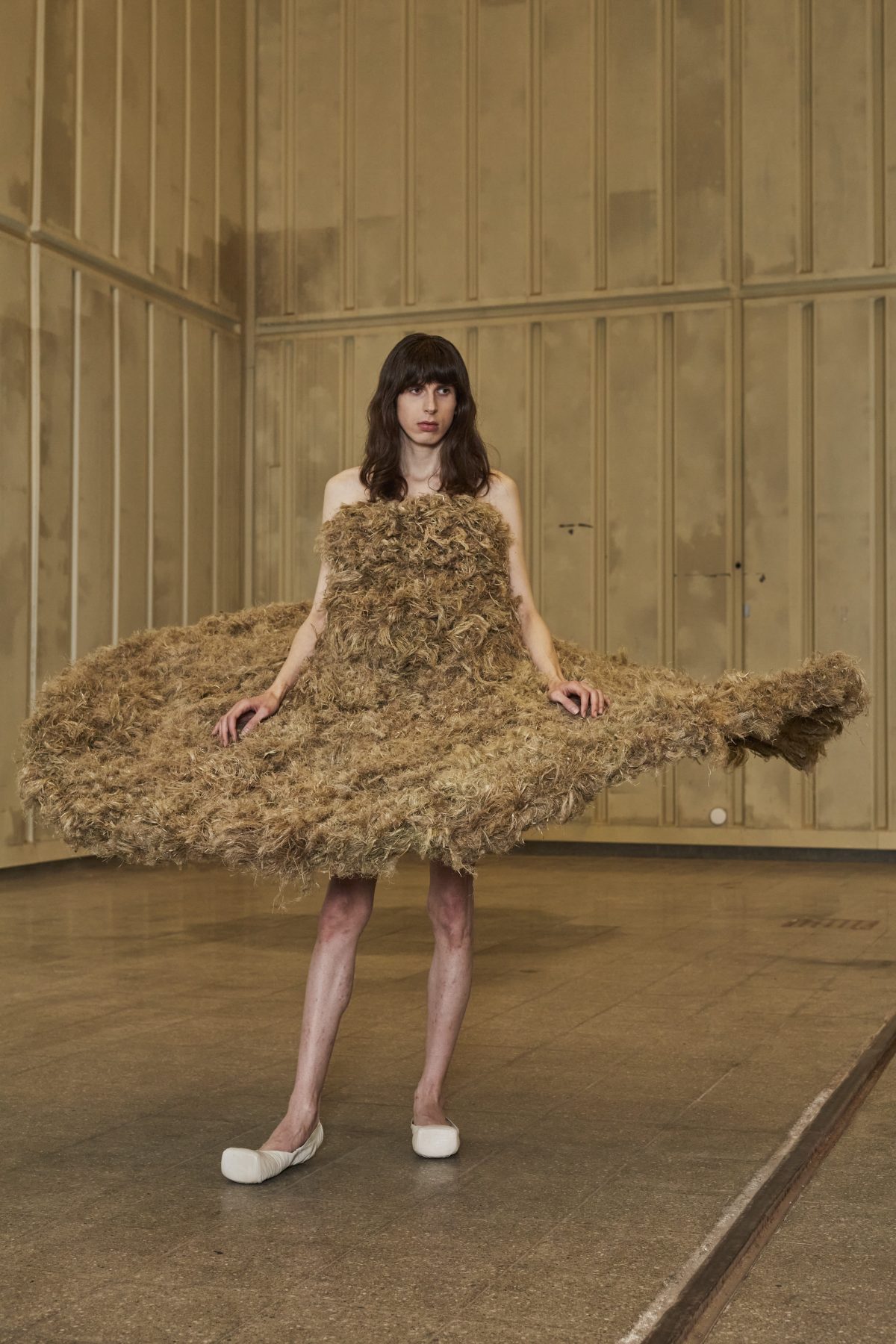 RV_08
RV_08

Ruusa Vuori BA3 Graduate collection Photographer: Sofia Okkonen Model: Kenan
RV_08In her collection, Ruusa Vuori explores the field of embodied knowledge and breaking away from the physical outlines of the body, liberation from the self, as well as the perception of personal space. Borders and crossings are essential: different surfaces, membranes, openings, holes, as well as pushing through them.
The work emphasizes sensory aspects and the sensitivity to embodied experience developed through Vuori’s background in dancing. How it feels like to be in the garment, how it senses on the skin, how it moves and how one moves in it.
Clothing can expand or reduce the personal space of the one who wears it, form a shell or invite in, open or close, draw boundaries or break them.
– I think a piece of garment is a gesture that evokes sensory experience. My work has developed by experimenting, in a process where one’s body is the subject. I have tried to listen, to analyze, and to illustrate the information the body-subject has internalized and present it in a wearable form.
Contradictory materials and processing them by hand have been an essential part of Vuori’s working method.
The fragile linen threads planted, grown, lured and spun by her great-grandmother are linked to the designer’s own bodily experience.
– The hypnotic rhythm of the handwork and bodily movements while weaving, knitting, cutting and sewing have deepened my relationship with both inherited and newly acquired materials. The working process has itself been most multi-sensory and border-crossing in several ways – as I wish the collection would be.”